


“ “



“
up on or the results obtained from the information provided. Nothing contained in this magazine should be construed as a recommendation to buy or sale any securities. The facts and opinions stated in this magazine do not constitute an offer on the part of EQ International for the sale or purchase of any securities, nor any such offer intended or implied

Restriction on use
The material in this magazine is protected by international copyright and trademark laws. You may not modify,copy,reproduce,republish,post,transmit, or distribute any part of the magazine in any way.you may only use material for your personall,Non-Commercial use, provided you keep intact all copyright and other proprietary notices. want to use material for any non-personel,non commercial purpose,you need written permission from EQ International.




OWNER : FirstSource Energy India Private Limited PLACE OF PUBLICATION : 95-C, Sampat Farms, 7th Cross Road, Bicholi Mardana Distt-Indore 452016, Madhya Pradesh, INDIA Tel. + 91 96441 22268 www.EQMagPro.com EDITOR & CEO : ANAND GUPTA anand.gupta@EQmag.net PUBLISHER : ANAND GUPTA PRINTER : ANAND GUPTA PUBLISHING COMPANY DIRECTORS: ANIL GUPTA ANITA GUPTA CONSULTING EDITOR : SURENDRA BAJPAI SR. GRAPHICS & LAYOUT DESIGNER : RATNESH JOSHI GRAPHICS DESIGNER : ABHISHEK SARAI
of Liability
every efforts has been made to ensure the high quality and accuracy of EQ international and all our authors research articles with the greatest of care and attention
make no warranty concerning its content,and
magazine
provided
as is <<basis.EQ international contains advertising and third –party contents.EQ International is not liable for any third- party content or error,omission or inaccuracy in any advertising material
responsible for the availability of external web sites or their contents
this magazine
informational
EQ INTERNATINAL
providers
content providers shall
investment
Disclaimer,Limitations
While
,we
the
is
on an>>
,nor is it
The data and information presented in
is provided for
purpose only.neither
,Its affiliates,Information
nor
have any liability for
decisions based
SUBSCRIPTIONS :
VOLUME 14 Issue 12 CONTENT 08 39 15 61
RISHABH CHOUHAN admin@eqmag.net
INTERNATIONAL
OPINION DECARBONISATION ELECTRIC VEHICLE RESEARCH & ANALYSIS TIME-VARIANT ELECTRICITY PRICING CAN RESULT IN POLLUTION REDUCTION AND BETTER SAVINGS GREEN ENERGY AND JUST TRANSITION HOW CONSUMER COMPANIES CAN EMBRACE CHANGE AMID VOLATILITY TRANSITION OF INDIA’S ENTIRE 2/3-WHEELER FLEET TO ELECTRIC NEEDS USD 285-BN FINANCING: WEF
HEAD SALES & MARKETING MUKUL HARODE sales@EQmag.net





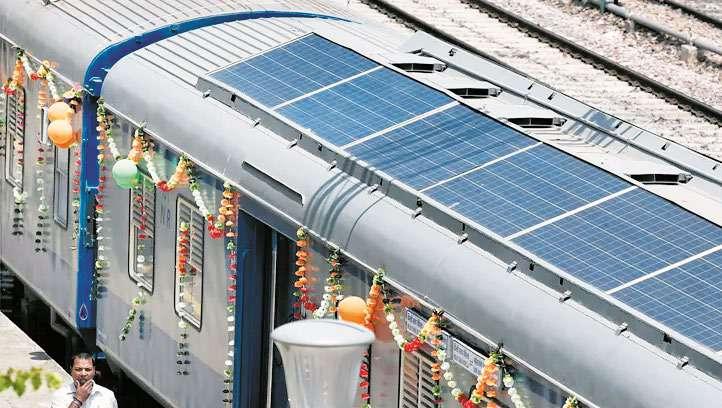

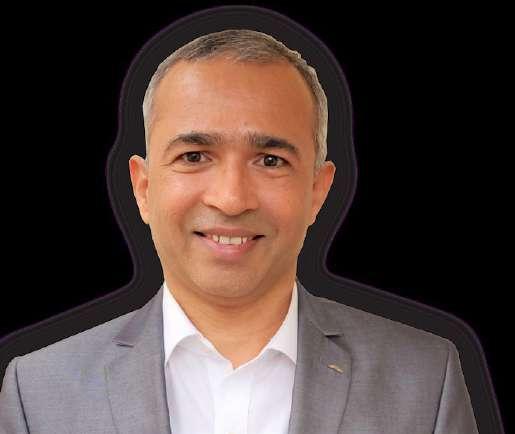
10 14 41 51 56 21 66 72 TECHNOLOGY TECHNOLOGY FEATURED INDIA INDIA BUSINESS & FINANCE RENEWABLE ENERGY RENEWABLE ENERGY Pg. 08-72 EQ News ENERMAN TECHNOLOGIES IOT SCADA (ETI-SOL) FOR SOLAR PV PLANTS & ROOFTOPS MONITORING, CONTROL AND ANALYSIS. NEW PAPER-THIN SOLAR CELL CAN BE FOLDED AND UNFOLDED 500 TIMES INDIAN RAILWAYS (IR) HAS ENVISIONED TO ACHIEVE NET ZERO CARBON EMISSION BY 2030 POWER SECRETARY PITCHES FOR REDUCING COST OF SMART METERS NTPC STARTS INDIA’S FIRST GREEN HYDROGEN BLENDING OPERATION IN PNG NETWORK PARTNERS GROUP AG TO INVEST $300 MILLION IN SUNSURE ENERGY FOR MAJORITY STAKE GOVERNMENT’S DECISION TO REMOVE SOLAR FROM ‘PROJECT IMPORT’ MAY TURN BLESSING IN DISGUISE FOR HOME-GROWN MANUFACTURES GOOGLE, MICROSOFT TO USE RENEWABLE ENERGY SOURCES IN DATA CENTRES
Gautam Solar is a 25+ yrs. experienced Solar Module Manufacturer with 250 MW Solar Module manufacturing capacity, expanding to 1 GW. It manufactures ALMM & BIS approved Solar PV Modules that are deployed in Utility & Rooftop Solar Power plants. It has various IP’s (Patents/ Design Registrations) and a well-equipped R&D centre for continuous development of new products.

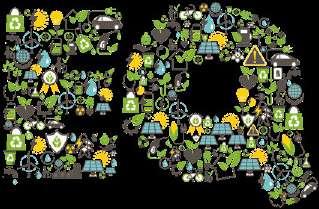




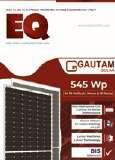



TIME-VARIANT ELECTRICITY PRICING CAN RESULT IN POLLUTION REDUCTION AND BETTER SAVINGS
The green adoption trend will make electricity generated by solar PV the cheapest source of power very soon. The key issue with solar PV is intermittent generation; the problem is solved with solar with storage. However, the storage solutions are quite expensive and that is the reason why solar with storage has not gained massive acceptance. With renewables, it becomes difficult to control the demand because demand also varies with the time of the day and season and generation is also intermittent. One solution to increase non-renewable power generators and control them according to our demand but this strategy needs to be adopted judiciously because it will increase the cost of non-renewable power. Another solution is Demand Side Management (DSM) where the customer is incentivised to use more power when available and consume less in case of shortages.
There are different types of mechanisms of Time-Varying Prices(TVP) and some of them are listed as below:
• Real-Time Pricing (RTP): Under this mechanism, the price of electricity is determined in real-time based on current market conditions. This means that the price of electricity can fluctuate throughout the day, depending on factors such as the supply of electricity from renewable sources and the overall demand for electricity from consumers.
• Time Of Use pricing (TOU): Under this mechanism, the price of electricity varies depending on the time of day, but the price is the same every day. This means that electricity may be cheaper during off-peak hours, such as at night or on weekends, and more expensive during peak hours, such as weekday afternoons.
• Variable Peak Pricing (VPP): In this type, the prices are divided into three periods (i.e. off peak period, peak period and interim period. However, the price of peak period vary daily to reflect system conditions and costs. Other period prices do not change daily.
ENERGY DEMAND

Residential customers in India mostly pay the same price of electricity irrespective of the season or time of day when it is used. These rates are also called as “Flat Rates”, these prices mask the true system costs of producing and delivering electricity, which vary by time and location according to electricity demand. Charging customers a fixed rate for electricity is just like a supermarket is charging its customers by the cart instead of cart’s contents. Varying prices of electricity can result in better economics, health and environmental gains, saving in electricity bills, reduced carbon emissions and increased investment in On-site Distributed Energy Resources (DERs).
• Critical Peak Pricing (CPP): In this type, the price of electricity may be higher during periods of particularly high demand, such as during extreme weather events. This type of pricing is designed to encourage consumers to reduce their electricity usage during times of peak demand, in order to prevent disruptions to the power grid.
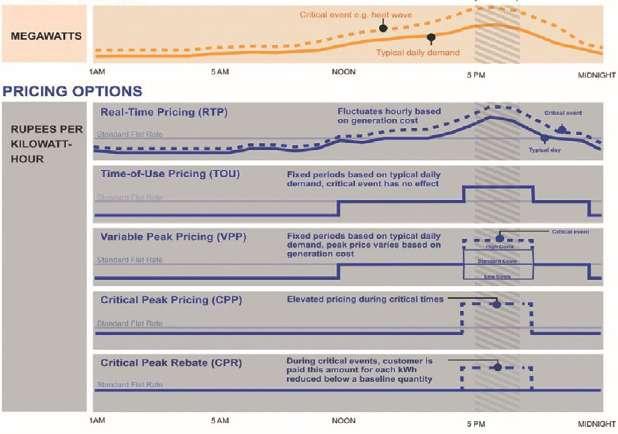
• Critical Peak Rebate (CPR): Under a critical peak rebate program, consumers who reduce their electricity usage during critical periods may be eligible to receive a rebate on their electricity bill. This rebate can help to offset the higher cost of electricity during these times, and provide an incentive for consumers to use electricity more efficiently.
Customers can cut down on electricity when it is more expensive and use electricity when it is cheaper, Time Varying Pricing (TVP) gives customers a chance to control their energy usage and save in electricity bills. As the world is moving towards E-mobility, cheaper cost of electricity during off-peak hours can encourage the consumers to charge their vehicles during these off-peak hours, which is usually night-time, while maintaining demand for the power plants.
In the other way, TVP helps utilities to avoid investments in energy infrastructures like power plants, transmission lines and distribution lines to meet increasing energy demand. TVP also helps DISCOMs to have better control over the load curve. During peak hours, peak load shaving or peak load shifting can also be achieved by DISCOMs if TVP is properly implemented. A study says that if 20% of Oklahoma utility customers adopt a TVP rate, they can avoid building a 210 MW power plant approximately. Some pilot projects across the globe show that with the implementation of TVP, electricity usage is reduced throughout the day and mainly during the time when the grid is stressed. Electricity usage is reduced even in critical peak pricing;
8 EQ DECEMBER 2022 www.EQMagPro.com OPINION
it is evident that electricity usage is reduced from 9 to 47% during critical events. To implement TVP successfully, regular energy meters need to be replaced by SMART METERS, which measure electricity use for predetermined periods. Different mechanisms require electricity to be measured in different time periods. Time Of Use pricing (TOU) will require electricity usage measurement for 2-3 different periods of time daily(like peak, off-peak and interim periods). Critical Peak Pricing (CPP) will require to measure electricity usage in each critical period of the month. Implementing TVP on a large scale will require huge investments throughout the system to collect, store, manage and integrate large sets of data generated by smart meters. With TVP, the system can become bidirectional which is one-directional nowadays, it is like a win-win situation for utility as well as customers. It depends on utility to design TVP mechanism according to its load pattern, needs, type of consumers and many other factors. It depends on utility to offer a proper pricing mechanism, which consumers would adapt. Utility should design such an effective mechanism that is accepted among the huge customer base. TVP price is also a critical factor to consider for utility.
For the successful implementation of TVP, consumer awareness is the most important factor. Consumers should be educated on how they can change their load pattern and with that, they can avail the benefit of TVP with reduced electricity bills. Change in consumer behaviour is the key to a successful TVP program. The utility should do a regular analysis of the implemented program and it should change its tools according to the requirements. They must also understand and evaluate the pattern of how customers are responding to the new TVP options and change tools/pricing according to their needs.
TVP can also help in reducing GHG emissions by giving incentives for investment in clean DERs and on shifting demand when electricity is generated by clean energy sources.



OPINION
Picture: Author of this article Mr. Aditya Singhania, Director & Co-Founder, Navitas Solar
ENERMAN TECHNOLOGIES IOT SCADA (ETI-SOL) FOR SOLAR PV PLANTS & ROOFTOPS MONITORING, CONTROL AND ANALYSIS.





Our IoT SCADA success proves that boards, useful alerts on breakdowns, and backed by quick customer service EnerMAN’s ETi series products help you acquire data from the equipment/sensor cess and store the data in the cloud/local server and present you with user friendly

We have developed many products listed below, which are required for digitizing Solar assets and efficient management

10 EQ DECEMBER 2022 www.EQMagPro.com TECHNOLOGY
Mr. Ashok D M | CEO and MD | EnerMAN Technologies
ETi-SOL®: is a cloud-based software product which collects data from the field IoT devices for Monitoring, Controlling, Analysis and Reporting of Solar PV plants / rooftops. IT is also Centralized monitoring platform -Integrate multiple SCADA into single dashboard. User can monitor through mobile app, both, Android, and iOS are now available.

ETi-SOL® Edge: For the customers who do not want to pay annual cloud server charges to view their plant data, EnerMAN has introduced ETi-SOL® Edge which is a local monitoring solution. One time investment to the system which does not require internet & cloud storage.
ETi-PPC (Plant Power Controller): Power plant controller is a reliable and flexible solution that can control different parameters present in Solar PV plants to achieve Utility grid requirements at POI (Point of interconnection). PPC is a combination of Software Logic and Hardware which continuously monitor the healthiness of grid and automatically acts in case of any abnormality. EnerMAN’s Power Plant Controller (ETi PPC) is a control system that can manage active power, reactive power, and power factor from Solar Inverter (Solar Plant, SolarWind Hybrid Plants).
Some of the ETi-PPC features are
• Interactive dashboard for Solar Monitoring/Control
• Automatic/Manual Control Operations.
• Operations Scheduling.
• Active Power/Reactive Power/Power factor Control
ETi-LOG: is an IIoT Data logger, which collects the data through RS 485 (RTU/TCP) from PV plants' end equipment and
ETi-SLDC: This software product can be installed in local PCs/Servers to collect data from the Solar PV plant’s equipment and can send important processed clean data to SLDC in a few seconds as per SLDC guidelines.
Some of the ETi-PPC features are
• Interactive dashboard for Solar Monitoring/Control
• Automatic/Manual Control Operations.

• Operations Scheduling.
• Active Power/Reactive Power/Power factor Control
ETi-LOG: is an IIoT Data logger, which collects the data through RS 485 (RTU/TCP) from PV plants' end equipment and
ETi-SLDC: This software product can be installed in local PCs/Servers to collect data from the Solar PV plant’s equipment and can send important processed clean data to SLDC in a few seconds as per SLDC guidelines.



ETi-CAST: Energy Generation & Forecasting solution which is a cloud-based forecasting tool for solar power plants.

ETi-SOL® Android/iOS App: Introducing the new mobile app version of our SCADA. Now the home page in the app is similar to web version i.e. all the plants in one with with its pirority status list. The much awaited in-app alert notification feature is now up and going. Both, Android and iOS are now available.
EnerMAN has proven track record in providing solution for Remote Monitoring, Local Monitoring, and Integration with third party Scada using REST APIs or FTP server or OPC interface. We are planning to expand our products entry to more countries and increase our product deployment by 100% in 2023.
www.EQMagPro.com 11 EQ DECEMBER 2022
TECHNOLOGY
INFLUENCE OF AZIMUTH AND TILT ON YIELD OF PV SYSTEM
BACKGROUND
The tilt and azimuth of a solar panel have a great influence on the energy yield of the overall system. The same panel, at the same installation site, can have different azimuth or tilt. This is a topic we are often asked about so in this Solis seminar, we explore the subject further.
About Azimuth and Tilt Azimuth : Is the angle between the vertical plane of the PV panel and the south direction (90°in the east and -90°in the west).
Tilt : This is the angle between the plane of the PV panel and the horizontal ground, and it is hoped that this angle is the optimal inclination angle of the phalanx when the power generation is the largest in a year. The optimal tilt angle is related to the local geographic latitude. When the latitude is higher, the corresponding tilt angle is also larger.
Figure 3: PVsyst simulates the effect of azimuth and tilt on power generation losses

THE IMPACT OF AZIMUTH CHANGES ON THE YIELD OF PV SYSTEMS

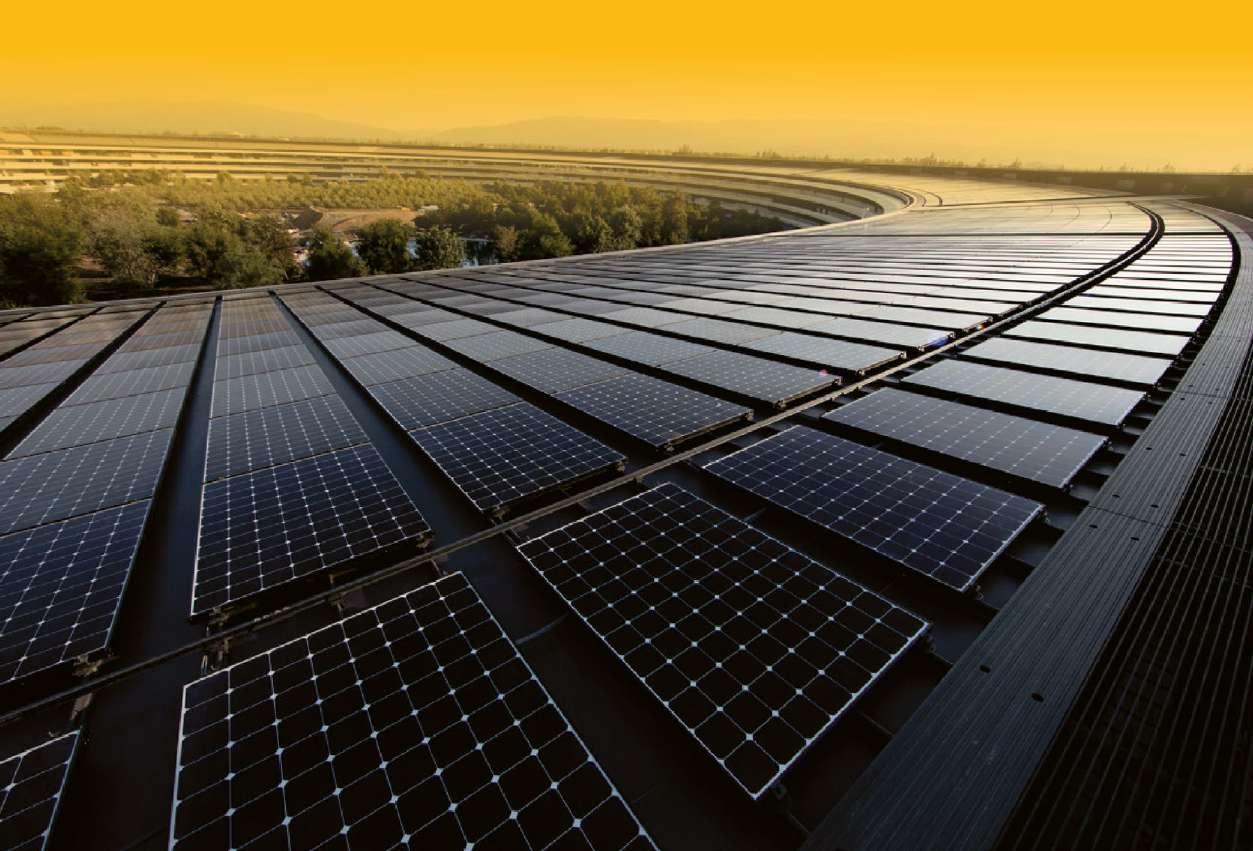

If the installation direction of the PV panel is not due south, but has a certain angle with due south (changes from -90°~90°; east is 90°, west is -90°), the relative loss of power generation changes will be as shown in the figure shown.
The figure below shows the influence of azimuth and tilt on the power generation of a system in an area 30°north latitude.
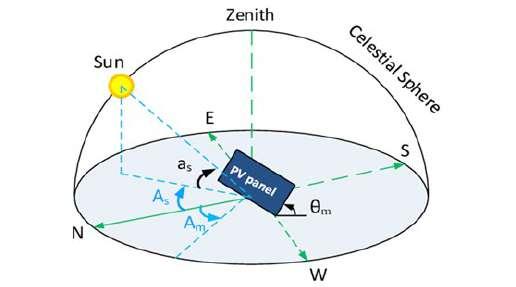
Figure 4: azimuth VS PV system power generation relative losses
It can be seen from Figure 4 that when the azimuth changes from -90° to 90°, the power generation change has the following characteristics:
1) The azimuth changes eastward and westward, and the impact on the power generation is the same; if it is installed facing east or west, the relative loss of power generation changes similarly.
INFLUENCE OF PV PANEL INSTALLATION AZIMUTH OR TILT ON POWER GENERATION
In a solar PV system, the azimuth or tilt on the PV panel can have a great influence on the power generation of the system. Take the area of 39°north latitude as an example. Through a PVsyst simulation, it is found that the best tilt is about 39°, the best azimuth is 0°.
See below which shows the impact of changes :
2) The relative loss of power generation changes as a parabola, that is, when the azimuth gradually increases from 0°to the east or west, the loss of power generation changes significantly

3) The angle between azimuth and due south varies within±15°, and the relative loss of power generation is within 1%.
THE IMPACT OF TILT CHANGES ON POWER GENERATION
In any area, PV panel installation has an optimal tilt, which is related to the latitude of the installation site, as shown in Figure 5. When the PV panel installation tilt changes, the power generation changes accordingly. The PV panel tile tilt is 0; when
12 EQ DECEMBER 2022 www.EQMagPro.com TECHNOLOGY
the PV panel is installed vertically on the ground, the tilt is 90°, and the corresponding changes are as follows.






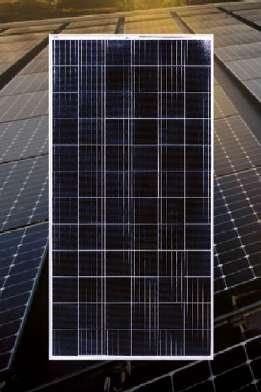


Table 1: Variation table of relative loss of optimal tilt±5° power generation of PV panel at different latitudes


Figure 5: tilt VS relative loss of power generation

It can be seen from Figure 5 that when the installed tilt of the PV panel deviates from the optimal tilt, the relative loss of power generation changes, and the variation range increases with the increase of the deviation between the actual tilt and the optimal tilt.
In addition, as shown in Figure 6 and Table 1, the curve changes are slightly different at different latitudes, but the overall trend is as follows:
1) In low-latitude areas, the less power loss is when tiling, and the greater the power loss when vertically installed.

2) Its value changes are parabolic. And the greater the difference between the actual tilt and the optimal tilt, the greater the relative loss of power generation.
3) The tilt changes at the optimum tilt±5°, which has little effect on the power generation, and the difference of the radiation amount is within 5‰.


SUMMARY
Power generation of a solar PV system has a lot to do with the azimuth and tilt of the PV panel. Generally speaking, the power generation of the system is the highest under the conditions of the south azimuth and the best tilt. Therefore, attention must be paid when the system is installed and designed. Of course, other factors need to be considered, such as snow cover, terrain conditions and land area restrictions. It is necessary to choose between the azimuth and tilt of the PV panel to ensure the best system performance.
TECHNOLOGY
Figure 6: Relative loss of PV panel tilt VS power generation at different latitudes
NEW PAPER-THIN SOLAR CELL CAN BE FOLDED AND UNFOLDED 500 TIMES
Differentiating from traditional solar panels, thin and flexible thin-film solar panels are capable in additional application possibilities, and can be applied on various irregular and curved surfaces. Massachusetts Institute of Technology (MIT) has now developed a solar cell that is even thinner than a hair, which can be used from ePaper to lightweight wearables.
MIT had adopted the research of 2016 as the foundation, when the ultra-lightweight solar panel was so light that it would not break a bubble when placed on top of the latter. With that being said, the production technology of solar cells is involved with a vacuum environment and exorbitant chemical vapor deposition, and MIT has used ink and printing this time to simplify the process. This type of semiconducting ink can be deposited along with printed electrodes on a 3µm thick plastic sheet that would eventually form a solar panel, or strip apart the module before sticking it onto textile materials that can retain tenacity and the minimum weight.
Scientists had eventually developed an ultra-soft and lightweight solar cell that is 1% the weight of traditional solar panels, though it is capable of emitting 18 times more power than traditional solar panels at 730W each kg. The solar cell, when stuck onto garments, can generate 370W of power each kg. Co-lead author Mayuran Saravanapavanantham commented that rooftop solar installations are usually 8,000W in Massachusetts, and that the textile solar panel developed by the team would only add an extra 20kg with the same level of power generation. The new test also pointed out that the textile solar cell can be folded and unfolded for more than 500 times whilst retaining 90% of power-generation capability. However, the team is currently resolving the degradation issue of solar cells, and is required to develop an ultra-thin packaging that is able to protect the cells.


14 EQ DECEMBER 2022 www.EQMagPro.com
TECHNOLOGY
Jeremiah Mwaura, research scientist at Research Laboratory of Electronics, pointed out that traditional silicon solar cells would need to be encapsulated within a thick layer of glass, while the ultra-thin solution proposed by the team would only add a little extra weight.
GREEN ENERGY AND JUST TRANSITION


Coal-rich states in the country can take a cue from Odisha’s new renewable energy policy, which is geared to ensure a just energy transition for the state.
Odisha has been playing a central role in meeting the country’s growing energy needs. The state is the largest coal producer, producing about 185 million tonnes of non-coking coal in 2021-22. This is sufficient to fuel about a quarter of the country’s coalbased power generation. But it is also one of the most climatevulnerable states, with extreme weather events like cyclones, heat waves, floods and droughts taking a significant toll on livelihoods and the economy every year. To balance the imperatives of energy and climate change, the state government unveiled a new renewable energy (RE) policy. The Union government has committed to a net-zero target by 2070. This means that coal production and consumption would have to decline significantly over the next two to three decades, impacting the lives and livelihoods of coal-dependent communities. Therefore, states like Odisha must plan for the coming energy transition to safeguard the interests of vast numbers of people in its coal and industrial districts. The state is among the country’s leading industrialising states, and a continuous increase in energy demand from all sectors is expected in the coming years. There is an apparent demand for RE from discoms and industries due to Renewable Purchase Obligations (RPOs). But the state currently accounts for just 0.55% of the country’s RE capacity (excluding hydropower) and imports renewable power to meet most of the existing RPO requirements. Without a rapid RE scale-up, RE imports will increase several times in the coming years as RPO targets reach closer to 45% by 2030.
It is highly dependent on the mining and metal sector for growth and jobs. Currently, 39.5% of Odisha’s gross value addition comes from the industry sector, the highest in the country. Moreover, the global mining and metal sector is transitioning to renewable energy and green hydrogen to reduce its carbon footprint and meet net-zero targets. Therefore, the state has an opportunity to become the hub of the green mining and metal sector by encouraging its industries to install captive RE plants. Lastly, sectors like green hydrogen, green ammonia and energy storage are developing rapidly. Given the strong manufacturing base, the state has the opportunity to grow these green sectors to support the next phase of industrialisation, creating new employment opportunities as well as boosting economic activity and income. But so far, the RE sector has not taken off in the state due to certain policy challenges and perceptions. For instance, there is a misconception that it has low solar and wind potential. This misconception has been created due to gaps in potential estimation, which the Odisha Renewable Energy Policy (OREP 2022) is addressing on an urgent basis. Policy challenges have also been addressed in the new policy. Overall, a combination of factors has led to a scenario that it is cheaper for discoms and industries to buy renewable power from Gujarat and Rajasthan than to install RE projects within the state. Therefore, one of the aims of the new policy is to bridge the cost difference by providing best-in-class incentives to attract investors to develop the vast RE potential of the state.
The policy includes several exemptions on duties, charges and surcharges for 15-20 years duration, along with investment facilitation and single window clearances. In addition, several measures have been introduced to ease land allocation for RE project development, including priority allocation under the state’s land bank scheme, provisions for aggregation of private land, and exemptions from the land ceiling. The policy pays special attention to certain high-potential technologies, such as pumped-storage hydro and small-hydro, for which the requirement of free power supply to the state has been waived for projects contributing to the state’s RPO. In addition, given the paucity of large wasteland tracts, the policy pays special attention to developing solar rooftops, floating solar, and distributed solar projects. Furthermore, wind power is proposed to be promoted through feed-in-tariff, and upcoming technologies like green hydrogen and ammonia are also being promoted through various incentives. Meanwhile, economic diversification, and the need for skilled human resources for new and emerging sectors, would be vital to ensure a just transition of the coal districts of the region. The state’s new RE policy addresses this by including explicit measures for creating a skilled and semi-skilled workforce for the RE sector. Existing educational infrastructure in the state is planned to be upgraded to provide training on RE component manufacturing, installation, operations and maintenance. Most importantly, to maximise RE job creation, the green energy manufacturing sector has been included as a ‘thrust sector’ in the state’s new Industrial Policy Resolution (IPR), which aims to transform it into the the most preferred investment destination in India.
Overall, the state’s new RE policy and IPR will boost green investments in the state and decarbonise the energy sector. These policies will also support balanced RE growth in the country and help meet the nation’s RE and net zero targets. But, most importantly, they will help ensure a just energy transition in coal regions over the next decades.
www.EQMagPro.com 15 EQ DECEMBER 2022 RESEARCH & ANALYSIS
Source: PTI
PRIORITISING RAJASTHAN’S ENERGY SUFFICIENCY SUSTAINABLY:
THE NEED FOR POLICY REFORMS TO SUPPORT STATE ENERGY GENERATION COMPANIES
Solar energy is the most readily available source of non-polluting renewable energy resource. The uniqueness of the solar technologies is that it offers a wide range of applications in solar PV as well as solar thermal technology in which case, the generated heat could be used for domestic as well as industrial applications and power generation.

India being a tropical country is blessed with good sunshine over most parts, and the number of clearsunny days in a year also quite high. As per Ministry ofNew and Renewable Energy (MNRE), Government of India (GoI), India has a vast solar potential of 749 GW for power generation. GOI has fixed an ambitious national target of 175 GW Renewable Energy which includes 100 GW from Solar Energy by 2022.
When it comes to the status and achievements in Renewable Energy (RE) field, Rajasthan presents a rosy picture having largest Solar Park in the world at Bhadla and sitting at the top in the country in terms of RE installed capacity.
Registration of more than 1,00,000 MW (100 GW) RE projects has been done with RRECL by different entities and approx. 25 GW RE projects are under construction. We are committed to achieve 37.5 GW RE power by 2025 and 90 GW by 2030 through our concentrated efforts and carefully formed policies to encourage RE Power stack holders. The Board of Investment in Rajasthan has approved 48,400 MW RE projects so far and proposal for several Ultra Mega Renewable Energy Power Projects (UMREPP), are under consideration and expected to be approved soon.
The Western desert region of the State of Rajasthan have sparse population, dryclimate, very low average rainfall, maximum sunshine hours, vast un-irrigated and non-agriculturalland which is most appropriate for solar power generation.
The assessed Solar Potential of Rajasthan stands at 142 GW. The state Govt. has set a target of 30 GW Solar Power by 2025 and 75 GW by 2030 (Raj Solar Energy Policy 2019).
GOR has formed Joint Venture Companies (JVCs)with following private players under clause 10.3 of Rajasthan Energy Policy 2014 with 50-50 equity participation in which GOR has contributed equity in form of Land:
1. Adani Renewable Energy Park Ltd.
2. IL & FS Energy Development Co. Ltd.
3. Essel Infra Projects Ltd.
A staggering 7,98,801 Cr MOUs / LOIs were signed during Rajasthan Invest Summit 2022. Apart from the private entities, CPSUs such as THDC, NTPC, SJVN, SECI etc. have also shown interest in setting up RE projects in Rajasthan.
Amidst the shining scenario, the only gloomy thing for the state of Rajasthan is that in the current policies the stake of state’s only generation company RVUN is negligible.RVUN has a strong work force having vast experience in construction as well as operation of Thermal, Hydro and Gas based power plants and has, for long, been fulfilling the energy requirements of the state at cheaper rates with its outstanding performance. Being a state-owned company, the people of the state have been direct beneficiary of its achievements in the field of power generation. It is quite strange that during policy making for RE, RVUN was not consulted by the decision-making working group. While red carpets were rolled out for private entities and CPSUs, RVUN was not encouraged to enter into the field of RE, especially Solar Power.
Initially, looking to the indifferent stance of the decision makers, RVUN has also kept itself away from foraying into the field of Solar Power Generation. But in
the recent past RVUN has strongly made its claim and as a result of constant urge and pursuance, GoR hasrecently allowed RVUN to develop a 2000 MW Solar Park at Pugal, Bikaner and establish its own Solar Plant. Given the opportunity, the RVUN engineers & technicians would efficiently adopt to the Solar technologies and would lead to better execution of the state’s RE policies.
The state of Rajasthan by its investor friendly RE policies has rolled out red carpet for the stakeholders, but in spite of having such a vast Solar Energy potential and facilitating the Solar Power Installers,the state has so far been deprived of the benefits of the cheap Solar Energy produced within its boundaries. PPAs of only 3288.1 MW out of the installed 13234 MW Solar capacity have been signed with RUVN by the companies operating in Rajasthan and the rest of the PPAs are with entities operating beyond the state’s premises and thus the people of the state are deprived of the benefits of their biggest natural energy resource.
It would, therefore, be prudent to facilitate RVUN to accelerate its efforts into RE field by providing administrative and financial support. Being the state GENCO, RVUN should be kept on equal platform with RREC/ RSDCL and given favourable policy support by making it a Nodal agency for RE through necessary amendments in the state’s RE policies. Being the Generation Company, including RVUN in the working group for formulating policies would be a logical step having far reaching impacts. RVUN’s rightful and effective presence in the field of Solar Power Generation would be extremely fruitful for the state and its people for the following reasons: -
1. RVUN has all its existing PPAs with state Discoms. Since the generating companies are allowed to utilise RE for supplying power against their existing

16 EQ DECEMBER 2022 www.EQMagPro.com RESEARCH & ANALYSIS
Mr.R.K.Sharma | Chairman & MD
Rajasthan Vidyut Utpadan Nigam Ltd.
commitments / PPAs (Scheme for flexibility Dt. 12.04.22), this would help in achieving RPO targets of Discoms.
2. In light of ‘Notification of Renewable Obligation’ vide MOP’s proposal Dt. 07.11.2022, the GENCOs, w.e.f. 01.04.2024, may have to establish minimum 25% of the RE of the capacity of new Coal / Lignite based Thermal Stations. Allowing RVUN to establish Solar Power Plants would not only help in achieving its RGO as per the above notification but help in considerable reduction in GHG / CO2 emissions.
3. Bundling of RVUN’s Thermal power with Solar Power would substantially reduce the cost of fuel for equal amount of power generation. Against 810 MW at Pugal considering CUF of 21%, the normalised MW is equal to 170.1 MW of coal unit. If we consider replacing Coal based power of STPS with this Solar Power, the coal consumption would be reduced by 10,43,053 Tonnes per year resulting in a approx. saving of Rs. 557.09 Cr in fuel costannually.
4. Effective presence of RVUN in the field of RE would help in providing cheap power to the people of the state besides providing long term stability and cut into the cost of subsidies by GoR which is increasing year by year (it has risen from Rs. 8640.21Cr in 2015-16 to Rs. 17027.94 Cr in 2021-22).
(The biggest hurdle in RVUN’s progress in Solar field is its financial crunch, so if a part of the agriculture subsidy is transferred to RVUN for setting up of new Solar Power Projects and GoR compels State Discoms to do PPA with RVUN, the cheap electricity would be available for agriculture sector thereby substantially reducing subsidy burden on the State besides providing substantial help to Discoms in achieving their RPO obligations).
5. The experienced technocrats of RVUN could help in better execution of the RE policies.
6. As the entire generation of Solar Power by RVUN would be available for state Discoms @ 2.70 per unit (approx.), the people of Rajasthan would get full benefit of cheaper energy produced by state’s GENCO.
7. In view of post Covid power & coal crises, if state GENCOs had Solar power plants, the replacement RE power could have lessen the burden on state exchequer by supplying cheap power to the
state. If RVUN is promoted to venture in Solar Parks in a big way, such occurrence can be mitigated.
Additional Capacity Requirement: -
Based on the energy assessment by EAC, the Year wise ‘Others’#RPO Capacity addition required up to FY 2029-30 is as under:
Financial
EAC
#: - others = Solar, Bio Energy

From the above data it may be inferred that in order to achieve RPO by 2030, the estimated additional Solar capacity required is 9818 MW.
RVUN is in process for establishing 2245 MW of Thermal Generating units and, in light of ‘Notification of Renewable Obligation’ vide MOP’s proposal Dt. 07.11.2022, RVUN, will have to establish minimum 561.25 MW of RE.
The total additional RE capacity requirement, therefore, stands at 9869.25 MW up to 2029-30.
Rajasthan Solar Energy Policy, 2019 (Date of commencement – 19.12.2019)
Proposed Amendment for RVUN’s Solar Park/Solar Project.
3 Main Clause 12 “Solar Park” Existing sub-clause 12.3.4: “The State Government on its own or through any other agency designated by it will promote setting up of Ultra Mega Renewable Energy Power Park (UMREPP) in joint venture with Central Public Sector Undertakings.”
Main Clause 12 “Solar Park”
i. Amendment proposed in sub-clause 12.3.4: “The State Government on its own or through any other agency designated by it will promote setting up of Ultra Mega Renewable Energy Power Park (UMREPP) as per the guidelines issued by MNRE and amended time to time”
www.EQMagPro.com 17 EQ DECEMBER 2022 RESEARCH & ANALYSIS
Year Energy as per
(MU) Target as per MoP Achievement (MU) Shortfall (MU) Equivalent Solar Capacity for meeting Shortfall @25% CUF (MW) Year wise capacity addition required (MW) % MU
23.44% 22,599 14,594 8,005 3,710 0
24.81% 25,398 16,604 8,793 4,234 0
28,663
9,063 4,357 0
28.17% 30,781 25,689 5,092 2,544 2,544
29.86% 36,592 28,255 8,338 4,026 1,482
31.43% 40,896 28,223 12,674 6,006 1,980 2028-29 1,38,161 32.69% 45,165 28,223 16,942 7,955 1,949 2029-30 1,46,699 33.57% 49,247 28,223 21,024 9,819 1,864 Synod Existing Clause Proposed by RVUN 1 Main Clause 4: “Definitions” Currently no definition of UM REPP is added in Policy. Main Clause 4: “Definitions” Insertion of definition of UMREPPi.e., Ultra Mega Renewable Energy Power Park be inserted/ added in the Policy at no. 64 2 Main Clause 10 “Utility Grid Power Projects” Existing sub-clauses 10.1: “Solar Power Projects in Rajasthan for sale of power to DISCOMs of Rajasthan” 10.2: “Solar Power Projects sanctioned under guidelines/schemes of MNRE” 10.3: “Solar Power Projects for captive use” 10.4: “Grid connected Solar Power Projects for Third Party Sale” 10.5: “The Projects set up under clause 10.3 & 10.4 will also be eligible for RE (Solar) Certificate as per Orders/Regulations issued in this regard by the appropriate Commission” 10.6: “The State will also promote setting up of floating/reservoir top/canal top Solar Power Projects for sale of power to DISCOMs through competitive bidding or for captive use/third party sale”
In view of the above, following amendments/insertions of new clauses in the Rajasthan Solar energy Policy,2019 and Rajasthan Wind and Hybrid Energy Policy,2019are proposed: Clause 10 “Utility Grid Power Projects” Insertion of New Sub - Clause 10.7: “Solar Projects by/of RVUNL (under bundling scheme/captive use)” for
2022-23 96,411
2023-24 1,02,369
2024-25 1,08,696 26.37%
19,600
2025-26 1,15,413
2026-27 1,22,546
2027-28 1,30,119
Main
sale of Power to Discoms.
The State will promote setting up of solar power projects for sale of power to DISCOMs of Rajasthan on the tariff discovered through competitive bidding process or through EPC mode on tariff approved by RERC to fulfill Renewable Purchase Obligation (RPO) target fixed by RERC or for Captive Use of RVUNL.
4 Main Clause 14 “Registration of Solar Power Projects”
Currently, no clause regarding registration charges has been mentioned specifically for Utility Scale Solar Power Projects approved by State Government mentioned.
ii. Insertion of new Clause 12.4 “Solar Parks by RVUNL”

“RVUN will develop Solar Parks in Rajasthan with/without CFA support from State/Central Government on its own or through any other SPV which may be created as required as per the mandate given by State Government”.
Clause 14 “Registration of Solar Power Projects”
Insertion ofnew Clause 14.14: “Registration Charges for Solar Projects approved by State Government (for RVUNL)”
No Registration Charges shall be applicable for Solar Power Projects approved by State Government to be installed by RVUNL under EPC mode
5 Main Clause 15 “Allotment/Procurement of Land”
Existing sub-clauses
15.1: “Allotment of Government Land to Solar Park /Solar Power Projects”.
15.1.1: Clause regarding land security deposit @ Rs 5 Lakhs/MW”.
15.1.2: “Clause regarding allotment of maximum land area as per SPV technologies”
Currently, no clause regarding allotment/procurement of land specifically for Solar Park by RVUNL approved by State Government or under MNRE scheme mentioned
6 Main Clause 18 “In-Principle Clearance of Solar Power Projects”
Under sub-clause 18.1, 18.2& 18.3Procedure for in-principle clearances of Solar Projects other than projects approved by State Government like the case of RVUN are mentioned.
Main Clause 15 “Allotment/Procurement of Land”
Insertion of New Sub-Clause
15.1.3 “Solar Park by RVUNL approved by State Government or under MNRE scheme”.
For Solar Parks under Clause 12.4 (proposed new clause above under main clause 12), RREC will recommend, on case-to-case basis to Concerned District Collector for allotment of Government Land without any Security Deposit
Existing Clause 12A: Allotment of Land to the R.R.E.C or Rajasthan Solar Park Development Company Limited: Land may be allotted to RREC or Rajasthan Solar Park Development Company Limited on the following terms and Conditions, namely: -
(i) The land shall be allotted on lease hold basis for a period of 99 years.
(ii) The premium to be charged for the allotment of government land for setting up and developing Solar Park shall be equivalent to the market value of land assessed on the basis of rates recommended by the DLC of the same class of agricultural land in the vicinity and shall be determined accordingly.
(iii) Lease rent shall be payable at the rate of Rs. 1/- per acre per annum.
(iv) The R.R.E.C. or Rajasthan Solar Park Development Company Limited, may sub-lease the leased land or part thereof for setting up and developing Solar Park for solar plant/ solar power plant/ solar PV power plant/solar thermal power plant/ solar farm purposes.
Main Clause 18 “In-Principle Clearance of Solar Power Projects”
Insertion of New Sub-Clause
18.4: “In-Principal Clearance of Solar Power Projects approved by State Government (projects of RVUNL)”.
Solar Projects under clause 10.7 requires(proposed new sub-clause above under main clause 10)No In-Principal Clearance by SLSC/SLEC.
(v) The R.R.E.C. or Rajasthan Solar Park Development Company Limited, may levy and recover such lease rent and other charges as may determine by it, in respect of the lands sub- leased by it.
(vi) The periods of the sub-leases shall be determined by the R.R.E.C. or Rajasthan Solar Park Development Company Limited, but such period shall not exceed 30 years, in all, in any case.
7 Main Clause 19 “Security Deposits”
After in-principle clearance of the projects by the State Level Screening Committee (SLSC), the Developer/Power Producer will be required to deposit security amount of Rs. 10 lac/MW in the form of bank guarantee or Rs. 5 lac/MW in cash within one month without interest and within 3 months with interest @ 9% per annum is required. Applicable for Solar Power Projects for captive use, Grid connected Solar Power Projects for Third Party Sale, Solar Power Projects with Storage Systems for captive use/third party sale and under clause 13(iv) “for charging station service providers
Main Clause 19 “Security Deposits” Insertion of New Clause
19.7: “For Projects under clause 10.7”.
No Security deposit will be required for the Solar Projects to be set up by RVUNL under clause 10.7(proposed new sub-clause above under main clause 10)
(vii) They shall revert to the Government free of all encumbrances and without payment of any compensation in case the R.R.E.C. or Rajasthan Solar Park Development Company Limited or any of its sub-lessees use it for any purpose other than solar plant/ solar power plant/ solar PV power plant/solar thermal power plant, including essential welfare and supporting services or commit breach of any other condition of the lease or sublease; and
(viii) The sub-lessee of the R.R.E.C. or Rajasthan Solar Park Development Company Limited shall continue to be governed by all other terms conditions prescribed in these rules and any other analogous rules that may be promulgated or orders that may be issued, in this behalf by the State Government.]
18 EQ DECEMBER 2022 www.EQMagPro.com
Proposed Amendment in Rajasthan Land Revenue (Allotment of land for Setting up of Power Plant based on Renewable Energy Sources) Rules, 2007
RESEARCH & ANALYSIS
Addition of new phrase in Rule 12A Rajasthan Land Revenue (Allotment of land for Setting up of Power Plant based on Renewable Energy Sources) Rules, 2007 as below-
“Allotment of Land to the R.R.E.C or Rajasthan Solar Park Development Company Limited or RVUNL (or any of its subsidiary/JVC): Land may be allotted to RREC or Rajasthan Solar Park Development Company Limited or any RVUNL (or any of its subsidiary/JVC) on the following terms and Conditions, namely: -

(i) The land shall be allotted on lease hold basis for a period of 99 years.
(ii) The premium to be charged for the allotment of government land for setting up and developing Solar Park shall be equivalent to the market value of land assessed on the basis of rates recommended by the DLC of the same class of agricultural land in the vicinity and shall be determined accordingly.
(iii) Lease rent shall be payable at the rate of Rs. 1/- per acre per annum.
(iv) The R.R.E.C. or Rajasthan Solar Park Development Company Limited or RVUNL (or any of its subsidiary/JVC), may sub-lease the leased land or part thereof for setting up and developing Solar Park for solar plant/ solar power plant/ solar PV power plant/solar thermal power plant/ solar farm purposes.
(v) The R.R.E.C. or Rajasthan Solar Park Development Company Limited or RVUNL (or any of its subsidiary/JVC), may levy and recover such lease rent and other charges as may determine by it, in respect of the lands sub- leased by it.
(vi) The periods of the sub-leases shall be determined by the R.R.E.C. or Rajasthan Solar Park Development Company Limited orRVUNL (or any of its subsidiary/JVC) but such period shall not exceed 30 years, in all, in any case.
(vii) They shall revert to the Government free of all encumbrances and without payment of any compensation in case the R.R.E.C. or Rajasthan Solar Park Development Company Limited or RVUNL (or any of its subsidiary/JVC) or any of its sub-lessees use it for any purpose other than solar plant/ solar power plant/ solar PV power plant/solar thermal power plant, including essential welfare and supporting services or commit breach of any other condition of the lease or sub-lease; and
(viii) The sub-lessee of the R.R.E.C. or Rajasthan Solar Park Development Company Limited or RVUNL (or any of its subsidiary/JVC) shall continue to be governed by all other terms conditions prescribed in these rules and any other analogous rules that may be promulgated or orders that may be issued, in this behalf by the State Government.]
CONCLUSION:
CEA in its generation mix reportfor 2029-2030 indicates that thermal power generation of about 34% will remain as a prime source of feeding power into the grid with penetration of renewable energy to provide safe, secure, and trouble-free operation of the grid. The old inefficient thermal units are to be replaced with more efficient and eco-friendlyultra-super-critical units.
In Rajasthan there is ample potential for solar generation, at present we are at first position in India but to extract maximum from the available infrastructure resources and to benefit the state there is need for amendment to current solar policies so that we can get min 10% of the power generated by private developers free of cost to Rajasthan.
State GENCOs should be provided full financial support to develop solar power parks and solar projects so that complete solar generation is available to Rajasthan.
Last year, power consumption by agricultural load is 2,88,021 lakh units, expenses in lieu of the same were 18432 crores on power purchase @6.4 Rs per unit. Subsidy released by GoR for the same- 16218 Cr. If state GENCOs can be provided with fraction of agricultural subsidies, then in due course of time Rajasthan state GENCOs will be able to provide electricity at cheaper rates to the state on permanent basis powering agriculture through renewable energy.If Utpadan Nigam can generate solar power, then the maximum rate of generation shall be approx. Rs. 2.70 per unit which is quite cheaper as compared to the thermal generation cost.
Looking into the rising power demand of the nation, MOEF and Forest department of GOI should ease out policies to facilitate early clearances to develop pump storage facilities to meet the peaking power demands. In Rajasthan we have capability to develop pump storage facility at JawaharSagarHydel Power station and RanaPratapSagar Hydro Power Station.
GoR should make policies in such a way that whatever solar energy is generated by state GENCO is procured by RUVN/Discoms. Through this step we will be able to reduce carbon emissions immensely and generation cost will be reduced.
RVUNL power plants have the infrastructural capacity to install solar powerplant, but the only roadblock is financial capability which has been worsened due to long outstanding dues with Discoms. If financial support can be given the installation of these plants can be paced up very quickly.
While issuing fresh consent for installation of new solar projects, it is also to be kept in consideration that Rajasthan has an estimated Solar potential of142 GW, out of which registration for80 GW has already been done in favour of Private entities & PSUs. Going by the present scenario, a major part of the energy produced by these players using the state’s resources would be exported out of the state. Therefore, a major part of remaining solar potential should be kept reserved for state’s agency so that the power generated by state’s resources could be used by state’s people.

www.EQMagPro.com 19 EQ DECEMBER 2022
RESEARCH & ANALYSIS
HOW WILL INDIA AS G20 PRESIDENT STEER ENERGY TRANSITION?
With India having assumed Presidency of G20 this month, there is intense speculation on the priorities and thrust areas that G20 may pursue under India’s captaincy. The most recent statement of G20 Leaders issued in Bali in November this year highlights a few key issues that the G20 is expected to focus on.

The Declaration talks, amongst others, about the challenges of food security, stability of global supply chains, climate change and just transition, trade and investment cooperation, digital transformation, fiscal sustainability, and stability of international financial system. The growing climate change crisis requires that major economies of the world intensify their shift to cleaner and renewable energy. It is moot how India shapes G20 response in this matter while protecting the needs of energy security and energy acess. The Bali Declaration (2022) mentions that G20 members will use all options for generating clean power including renewable energy while accelerating efforts for coal phase down. This is a language that is more or less similar to the one used in decisions taken last year by the CoP26 at Galsgow. However, meaningful progress along this path depends on several factors. First is the nature of energy policies that the G20 needs to pursue for advancing cleaner energy options. Global autonomous investment in renewable energy in the past 5 years have been consistently higher than in the conventional energy sector. However, this needs to be further scaled up if the global goal is to be met. India has announced a goal of creating 50% of energy capacity in terms of renewables by 2030. It is the leader of the International Solar Alliance whose objective is to scaled up if the global goal is to be met. India has announced a goal of creating 50% of energy capacity in terms of renewables by 2030. It is the leader of the International Solar Alliance whose objective is to scale up deployment of solar energy across continents. G20 will do well to come up with specific renewable energy goals in terms of capacity or generation to be able to support this initiative. Next is the matter of promoting global cooperation in development and deployment of alternative fuels. Investment in development of biofules, green hydrogen and newer technologies for energy storage is critical to decarbonise emission intensive sectors such as steel, cement, and transport. Industry transition leadership group set up at the Climate Summit convened by the UNSG in 2019 has unfortunately not made much progress. India as leader of G20 should promote global alliances that can fast-track development of alternative clean fuels, create global demand for such technologies and help set up demonstration plants in the hard to abate sectors. Equally important is the issue of raising capital to finance the clean energy investments. International donors and multilateral financial institutions have begun to look at future energy related investments from the lense of phasedown or phaseout of coal. Just Energy Transition Partnership (JETP) announed by G7 countries under the leadership of Germany is based on this premise. There is anticipation that India will be the next partner of the JETP after South Africa, Egypt and Indonesia that have already becomes partners. As G20 President, India will have the challenge to ensure that the expansion of JETP does not hinge on a plan whose sole aim is to facilitate withdrawal of coal related invetments. A plan of transition based on this strategy would be harmful for India’s energy security and stability of the power
sector in the short term. In the long term, this has to happen. But, India’s long-term low emission development strategy recently announced at Sharm El Sheikh does not predict any time frame for peaking of emissions either from coal or economy in general. ‘Bali declaration of G20 accepts that energy transition should take place in a manner that is just, and in line with the national circumstances. Hence, JETP should fulfil aspirations of renewable energy capacity within the franmework of Nationally Determined Contributions (NDCs). To ensure that the process is jut, it should look at plans of economic diversification at regional level and help restore incomes and revenues to the states that will be losers in the event of energy transition. The terms on which the bilateral assistance and international capital is going to be mobilised for supporting energy transition is another area of attention. From discussions held at CoP27 in Egypt, it is clear that the developed world is in no mood to provide public grants or concessional funds to meet climate goals. JETP should fill this gap and provide risk free finance in a manner different from the multilateral financial institutions. G20 is well positioned to create a global risk The terms on which the bilateral assistance and international capital is going to be mobilised for supporting energy transition is another area of attention. From discussions held at CoP27 in Egypt, it is clear that the developed world is in no mood to provide public grants or concessional funds to meet climate goals. JETP should fill this gap and provide risk free finance in a manner different from the multilateral financial institutions. G20 is well positioned to create a global risk mitigation fund for international equity capital that can address risk of investment in developing countries. Two other areas that the G20 can explore for global cooperation is the blue economy and nature-based solutions. For the first time, the importance of oceans as an important instrument of climate stabilisation was highlighted at Sharm El Sheikh. Cooperation in this area can have huge economic benefits for economies of several countries having large coast lines. Nature based solutions are being projected as promising area for carbon market finance. India should welcome it if it promotes agroforestry, , expansion of tree cover outside forests, and carbon-plus benefits in term of protection of biodiversity and ecosystem. These benfits can be quantified and rewarded through a global fund under G20 leadership. G20 leadership is an opportunity for India to shape the energy transition dialogue on its own terms. Prime Minister’s personal commitment to the principle of Lifestyle for Environment (LiFE) may be a good basis for India to convince the rest of G20 about the legitimacy of transition that is just for both, present and future generations.
Source: PTI
20 EQ DECEMBER 2022 www.EQMagPro.com FEATURED
INDIAN RAILWAYS (IR) HAS ENVISIONED TO ACHIEVE NET ZERO CARBON EMISSION

BY 2030
IR IS COMMITTED FOR 100% ELECTRIFICATION OF BROAD GAUGE (BG) RAILWAY NETWORK.
Indian Railways (IR) has envisioned to achieve net zero carbon emission by 2030. Following measures have, inter-alia, been undertaken in this regard:
100% Electrification of Broad Gauge (BG) Railway network.
About 142 Mega Watt (MW) of solar plants (both on Rooftops and on its vacant land) and about 103 MW of Wind power plants have been commissioned (till 31.10.2022).
Use of Insulated Gate Bipolar Transistor (IGBT) based 3-phase propulsion system with regenerative braking in locomotives, Electrical Multiple Unit (EMU) trains, Mainline Electric Multiple Unit (MEMU) trains, Kolkata Metro rakes and Electric train sets.
Conversion of End on Generation (EOG) trains into Head on Generation (HOG) trains to reduce noise, air pollution and diesel consumption.
Provision of Light emitting diode (LED) lighting in all Railway installations including Railway stations, service buildings, Residential quarters and coaches for reduction in electricity consumption.
Afforestation of railway land to increase carbon sink.
Green Certifications- Green Certifications of various industrial units, railway stations and other railway establishments have been done. Further, Environment Management System (EMS): ISO 14001 certification of various railway stations has also been done.
Construction of Eastern and Western Dedicated Freight Corridors (DFCs).
Installation of waste to energy plants.
Further, IR has decided to progressively procure renewable energy to reduce energy consumption through conventional sources. At present, there is no proposal to induct solar train in the Railway fleet. The solar system works during the day time and generate battery backup of approximately 4 to 5 hours. System does not work properly during fog/rain and winter season and battery backup goes down to 2 to 3 hours depending upon weather conditions. Therefore, the system has not been pursued further. This information was given by the Minister of Railways, Communications and Electronic & Information Technology, Shri Ashwini Vaishnaw in a written reply to a question in Lok Sabha
www.EQMagPro.com 21 EQ DECEMBER 2022
FEATURED
Ocean-based Carbon Dioxide Removal:

6 Key Questions, Answered
The science is clear: We are not on track to limit temperature rise to 1.5 degrees C (2.7 degrees F) to prevent the most catastrophic impacts of climate change. Deeper, faster cuts to emissions are urgently needed across all sectors, and must be a central focus of climate policy. However, we have already added so much greenhouse gas (GHG) to the atmosphere that even far steeper cuts in emissions will not be enough to meet global climate goals; we also need to actively pull carbon dioxide (CO2) back out of the air.

So far, efforts to remove excess CO2 from the air have largely focused on what can be done on land, such as growing trees or building direct air capture plants. But now a growing number of researchers, companies and even national governments have begun to look at the ocean as a potential location for carbon dioxide removal. These approaches aim to leverage the ocean’s natural chemical and biological processes to absorb and store more carbon from the atmosphere.
While these approaches may have important potential as part of a climate solution, we know surprisingly little about how effective they are at sequestering carbon, and what kind of other impacts they would have on the environment and communities if they are pursued at scale. A new WRI report synthesizes the latest science and research on ocean-based carbon removal and examines what’s needed to ensure that decisions around its development and deployment are responsible.
Here, we answer several key questions about ocean-based carbon removal:
1. How Can Oceans Remove More Carbon from the Atmosphere?
Ocean carbon removal approaches aim to enhance or accelerate natural biological or chemical processes that sequester carbon in the ocean. In a few cases, the approaches extract carbon dioxide dissolved in seawater for storage on land. We know the ocean is good at sequestering carbon because it has already absorbed 30% of the CO2 — and 90% of excess heat — caused by human activities, significantly dampening the impacts of climate change. In total, the ocean holds around 42 times more carbon than the atmosphere.
At the same time, what the ocean has done to buffer the impacts of climate change has come at a high cost. Absorbing excess CO2 and heat is causing ocean warming, acidification and oxygen loss; changing currents and nutrient cycling; and imperiling plants and animals essential to marine ecosystems. These changes are compromising the ocean’s ability to provide food, support livelihoods and insulate us from the worst effects of climate change.
22 EQ DECEMBER 2022 www.EQMagPro.com FEATURED
2. What Are the Different Ocean-based Approaches for Carbon Removal?


A range of ocean carbon removal approaches have been discussed in the scientific literature and a subset have been tested at sea. WRI’s new report covers the seven approaches most likely to attract investment and/or be deployable at scale.

One of these seven — coastal wetland restoration — has been practiced for decades, though mostly to support resilience and ecosystem benefits rather than to sequester carbon. The other six are at a far earlier stage of development.
Abiotic approaches harness the physical or chemical properties of the ocean to remove CO2 from the air. For instance, alkalinity enhancement involves adding certain minerals to seawater that enable more atmospheric CO2 to dissolve into the ocean and be stored. In some cases, this process can also reduce ocean acidity. Electrochemical techniques use electricity to mimic alkalinity enhancement, or directly extract CO2 from seawater for storage on land. Artificial downwelling accelerates natural currents that carry carbon-rich surface water into the deep ocean in the Arctic and Antarctic.
Biotic approaches leverage photosynthesizing organisms in seawater to take up carbon dioxide and store that carbon as biomass. Seaweed, for example, can be cultivated and then sunk to the deep ocean or the seafloor, storing a portion of the carbon-rich biomass. Nutrients like iron can be added to the ocean to spur phytoplankton growth, a process called ocean fertilization. Phytoplankton take up carbon dioxide, convert it to biomass, and then some will sink to the deep ocean, sequestering that carbon. This strategy relies on the ocean’s “biological carbon pump. Artificial upwelling aims for the same outcome as ocean fertilization, but does so by moving deeper, nutrient-rich water to the surface, rather than adding new nutrients.
www.EQMagPro.com 23 EQ DECEMBER 2022 FEATURED
4. How Is Ocean Carbon Removal Governed?
How an ocean carbon removal project is regulated depends on where it is. Projects deployed within 200 miles of a country’s coastline would fall under that country’s jurisdiction. Areas outside this zone are in the “high seas” and regulated purely by international frameworks created before ocean carbon removal existed. These frameworks are typically
designed to address problems such as polluting, dumping or harming biodiversity in the marine environment. This existing governance system is ill-suited to the task of filling the gaps in scientific knowledge, ensuring robust stakeholder engagement, and supporting transparent and accountable research and deployment of ocean carbon removal.
Even if countries conduct ocean carbon removal projects entirely within national waters, the impacts could still be farreaching and transboundary. And in the long-run, reaching large-scale carbon removal in the ocean will require projects to be implemented in the high seas. Without clear rules regarding monitoring and transparency of data, impacts of ocean carbon removal could go undetected.

Fragmented, improvised governance systems will make it hard to determine whether research is conducted responsibly, halt research if negative environmental or social impacts outweigh the benefits, or determine which regulators or stakeholders have the power to make these assessments. It in no way equips or prepares us to manage the potential environmental and social impacts of future large-scale deployment.

24 EQ DECEMBER 2022 www.EQMagPro.com
FEATURED
5. How Can We Ensure Ocean Carbon Removal Is Done Responsibly?
A comprehensive and proactive governance framework would need to consider the full lifecycle of ocean carbon removal research and projects. It would need to ensure that:
Countries that implement ocean carbon removal projects in national waters do so within strong national and local sustainable ocean management frameworks.
Appropriate codes of conduct and safeguards are put in place for at-sea research demonstrations and for commercial deployment Broad and inclusive stakeholder engagement informs project development.
There are sound mechanisms for resolving who decides when, if, under what conditions – for example what level of scientific uncertainty – carbon dioxide removal approaches can move from research to deployment.

There is a scientifically rigorous and robust process for reaching consensus on the balance between the potential for harm to the ocean environment and benefits of deployment.
Equity issues around intellectual property, benefit sharing, and commercialization of deployment in the high seas are addressed.
Establishing a code of conduct for research, including for commercial purposes, would be an important initial step. This could serve as a basis for developing a code of conduct that includes commercial deployment and could serve as a foundation for a new international framework on ocean carbon removal. To be fit for purpose, this framework must ensure that steps toward developing and deploying ocean carbon removal are responsible, sustainable, and equitable and do not jeopardize the health of the ocean ecosystems or those who depend on them.
6. What Do We Need Next for Ocean Carbon Removal?
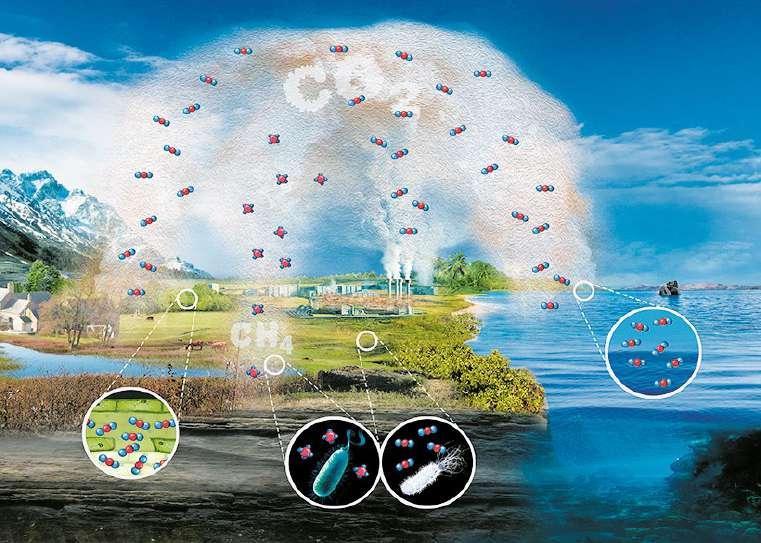
Moving forward responsibly will require an iterative and adaptive approach, according to our findings and those of the National Academies in their landmark 2021 report on a federal research agenda for ocean-based carbon dioxide removal. Governments and other stakeholders need to:
Support more research to understand which approaches are viable for large-scale deployment with minimal negative impact on ocean systems, ecosystems, and coastal communities. This must include increased levels of funding from governments, philanthropies, and the private sector for collaborative research, both in laboratories and, if necessary, at sea. Scientists will need to measure, report, understand, and verify environmental and social impacts. Establishing an independent, interdisciplinary committee, drawing on scientific experts from the major international scientific bodies, could help advance consensus on priorities for a global research agenda and what constitutes responsible field tests Build governance frameworks, at the local, national, and international levels, that ensure research and small-scale pilots are conducted responsibly and all stakeholders are informed and included.
Top priority within in this is to draw up an international code of conduct for at-sea research trials and make adhering to it a condition for receiving public and/or philanthropic funding or permits. It will also be important to convene a ministerial dialogue on ocean carbon removal – under the joint auspices of the UNFCCC, CBD, London Convention, and London Protocol – to respond to the recommendations from the scientific committee, create a forum and agenda for further discussions, and promote greater coherence across existing international frameworks.
Lastly, we must begin to lay the foundation for robust governance of large-scale deployment in the future, by initiating a process to explore a new international framework for ocean carbon removal. Companies and investors are moving ahead with the development of ocean carbon removal. This should be done in ways that minimize risks to the health of the ocean and the welfare of communities that depends on it. To fully understand what these interventions could do to safely meet global climate goals, and to ensure that decisions are not just driven by efficiency or profits, we will need far greater investment in research and robust governance. This will not be quick or easy, so there is every reason to begin now.
www.EQMagPro.com 25 EQ DECEMBER 2022
FEATURED
Source: wri
TATA POWER RENEWABLE ENERGY LIMITED RECEIVES ‘LETTER OF

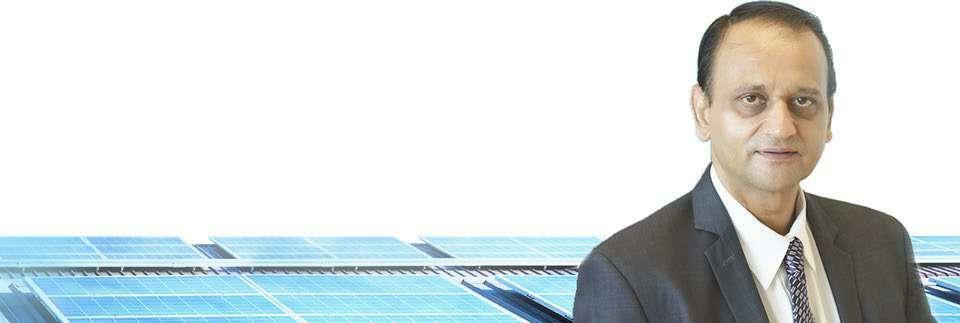
AWARD’ TO SET UP 150 MW SOLAR PROJECT IN MAHARASHTRA
Treaches 5,786 MW with an installed capacity of 3,877 MW (Solar – 2,949 MW & Wind – 928 MW) and 1,909 MW under various stages of implementation.
INDIA EXPECTED TO SEE FASTER PROGRESS ON CLIMATE GOALS: REPORT
According to “Global Carbon Budget Report 2022”, the top four CO2 emitters in 2021 were China (31 per cent), the US (14 per cent), the European Union (8 per cent) and India (7 per cent). The report, “Big Four: Are major emitters downplaying their climate and clean energy progress?”, by the UK-based Energy and Climate Intelligence Unit, suggests interconnected global crises and market mechanisms are driving the shift towards electric vehicles, low-carbon heating and renewables around the world, in particular in those four countries. Rapid price reductions, which make wind and solar power vastly cheaper than fossil fuel alternatives, concerns over energy security and access, and in Europe, the support for Ukraine, are driving this momentum, while EV sales are accelerating with major markets reaching tipping points. In the three countries, these forces are strong enough that they may well be on track to outstrip their emissions targets under the Paris Agreement, which indicates a more positive picture for limiting global warming to 1.5 degree Celsius, the report said. In India, the authors noted, the rollout of renewable energy, particularly solar, is accelerating rapidly and will transform India’s electricity sector this decade. In August, India released its updated nationally determined contributions and now stands committed to reducing emissions intensity of its GDP by 45 per
cent by 2030, from the 2005 level, and achieving about 50 per cent cumulative electric power installed capacity from nonfossil fuel-based energy resources by 2030. These NDCs are, however, contingent on delivery of finance and technology transfer. NDCs are national plans to limit global temperature rise to well below 2 degrees Celsius, preferably to 1.5 degrees Celsius, as advocated in the Paris Agreement. “Coal generation will become an increasingly unprofitable back-up for wind and solar, a function that will itself inevitably fall away as storage takes off,” the report said. Citing the draft National Electricity Plan, it said the total generating capacity of India’s coal-fired power plants doubled between 2007 and 2017 and the Central Electricity Authority sees coal-fired capacity increasing by less than 20 percent over the next decade. “Over the same period, the capacity of renewable generation is set to soar by 250 per cent,” according to the report. “This picture is reinforced by the plans of some leading companies. The giant Adani conglomerate plans to put 70 per cent of its capital investment this decade into the energy transition, including renewables and green hydrogen – a total of USD 50-70 bn (billion). Reliance Industries will invest USD 80 bn in renewable energy projects in Gujarat alone” the report read. Financing India’s decarbonisation transition is also helped by a significant partnership with Germany, signed earlier in 2022, that could unlock up to USD 10.5 billion in assistance through to 2030 to boost clean energy resources. PTI GVS RHL.
Source: PTI news service
26 EQ DECEMBER 2022 www.EQMagPro.com
Tata Power Renewable Energy Limited (TPREL), a subsidiary of Tata Power receives the ‘Letter of Award’ (LoA) from the Maharashtra State Electricity Distribution Corporation Limited (MSEDCL) to set up 150MW solar project in Solapur, Maharashtra.
FEATURED
RENEW POWER PLEDGES TO RESTORE AND GROW 1 MILLION TREES BY 2030
• Pledge, announced at COP 27 on November 8, is part of its commitment to 1t.org, the World Economic Forum’s trillion trees initiative. • ReNew is among the first in its category from India to do so ReNew Power, one of India’s leading renewable energy companies, will plant and grow one million trees by 2030 as part of its commitment to 1t.org, which is part of the World Economic Forum’s efforts to accelerate nature-based solutions and was set up to support the UN Decade on Ecosystem Restoration. The pledge was announced by Vaishali Nigam Sinha, Chief Sustainability Officer, ReNew Power, during the ongoing COP 27 Climate Change Conference at Sharm el-Sheikh, Egypt. ReNew, a member of the 1t.org Corporate Alliance and the 1t.org India Platform is one of the first companies in its category from India to have submitted the 1t.org pledge, contributing to its ambitious global effort. ReNew Power is dedicated to preserving and conserving trees. Earlier this year, on World Environment Day, ReNew announced a target of planting 100,000 trees across 70 of its operational facilities in India by 2025, as part of its ESG targets. This commitment has now been scaled up with the pledge to 1t.org. This promise will go a long way towards contributing to India’s goal of expanding its forest cover to 33% by 2030. Such initiatives are important because human activities have led to the loss of millions of hectares of forests globally over the past few decades. Even, about 10 million hectares of trees are cut down every year.


Sumant Sinha, Chairman and CEO, ReNew Power, said: “As an organisation pushing for a carbon-free world, we want to lead by example. It’s time to implement the commitments we have set for the greater good of the planet before we create more targets. The first and most basic step is to understand the key elements affecting climate change, one of which is deforestation and lack of green landmass. As a member of 1t.org, ReNew Power is proud to contribute to its goals of restoring and growing trees. With our commitment to plant a million trees by 2030, we will also be working towards meeting India’s green goals.”

Vaishali Nigam Sinha, Chief Sustainability Officer, said: “The transition to clean energy is a massive task to accomplish. Cli- mate change is more prevalent than it ever was, and collective action needs to be taken right now to combat the crisis that is upon us all. While companies work on transitioning operations to renewable or clean energy, it is also important to take additional steps to overcome this crisis – such as investing in the restoration of trees.”

FEATURED
INDIA HAS THE POTENTIAL TO BECOME A WORLD LEADER IN PRODUCTION OF ELECTRIC VEHICLES: BERKELEY RESEARCH
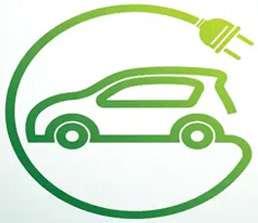
A study by the Department of Energy's Lawrence Berkeley National Laboratory (Berkeley Lab) and University of California, Los Angeles (UCLA) revealed that electric trucks would be more affordable to operate than diesel and India could become a world leader in producing electric vehicles.
UIndia has the potential to become the world leader in electric vehicles production, a research by Berkeley National Laboratory and UCLA said, underlining that making the transition from dieselfuelled trucks to electric-charged will enable the country to meet the goal of net zero greenhouse gas emissions by 2070. India imports 88 per cent of the oil it uses and of the total petroleum consumed by the country's transport sector, nearly 60 per cent used by freight trucks. A study by the Department of Energy's Lawrence Berkeley National Laboratory (Berkeley Lab) and University of California, Los Angeles (UCLA) revealed that electric trucks would be more affordable to operate than diesel and India could become a world leader in producing electric vehicles. The transition will also help India reduce its reliance on imported oil, improvethe air quality, and meet the goal of net zero greenhouse gas emissions by 2070, the study said. "Electric trucks would be instrumental in enhancing India's energy security and reducing the goods transport cost," said Nikit Abhyankar , Berkeley Lab research scientist and author of the report "Freight Trucks in India are Primed for Electrification."
Based on India's current grid emissions, electric trucks would reduce greenhouse gas emissions to nine per cent from 35 per cent per kilometer compared with diesel trucks, the report said.
"India has embarked on very ambitious electrification policies prior to this," said Deepak Rajagopal, an author of the reporrt and a faculty scientist at Berkeley Lab and UCLA. "We find that the time is now ripe to put targeted policies on trucking," Rajagopal said in a statement released by Berkeley Lab.In related research published last year, Berkeley Lab scientists determined how battery-electric trains can deliver environmental justice, cost-savings, and resilience to the US.
Source: energy.economictimes
IAF PROCURES ELECTRIC VEHICLES TO REDUCE CARBON FOOTPRINT
"In order to achieve reduction in carbon footprint and in keeping with the government of India's initiative on introduction of green mobility, the IAF has inducted a fleet of Tata Nexon electric vehicles," the IAF said in a statement.

The Indian Air Force inducted a fleet of electric vehicles in keeping with the government's initiative on introduction of green mobility. Air Chief MaMarshal VR Chaudhari flagged off the first batch of 12 electric vehicles in the presence of other senior officers and staff. "In order to achieve reduction in carbon footprint and in keeping with the government of India's initiative on introduction of green mobility, the IAF has inducted a fleet of Tata Nexon electric vehicles," the IAF said in a statement. It said the force is planning to enhance the usage of electric vehicles in a progressive manner by procuring e-vehicles against downgraded conventional vehicles. "Augmentation of the e-vehicles ecosystem, including installation of charging infrastructure at various Air Force bases, is also planned. The first batch of electric cars introduced will be deployed in Delhi NCR units for performance monitoring and analysis," it said. "To create a standardised inventory of vehicles, IAF has already joined hands with the Indian Army in the ongoing procurement of electric buses and electric cars," the IAF said. It said these proactive measures reaffirms IAF's commitment to
the national objective of transformation towards environmentfriendly mobility .
Source: energy.economictimes
28 EQ DECEMBER 2022 www.EQMagPro.com
FEATURED
BUSINESS BRIEFS ENVIRO INDIA INSTALLS 1,098 SOLAR PANELS IN
DELHI-NCR
Get latest articles and stories on Latest News at LatestLY. Gurugram-based facilities management company Enviro India said it has installed 1,098 solar panels to date in its commercial and residential properties across Delhi-NCR.

Gurugram, Nov 14 (PTI) Gurugrambased facilities management company
Enviro India said it has installed 1,098 solar panels to date in its commercial and residential properties across Delhi-NCR. The initiative has contributed significantly to mitigating energy consumption costs by producing 4,941 kWp units of energy per day. "Enviro has been installing solar panels since 2013 to help India achieve a low-carbon, sustainable future. The ideal geographical location of India makes it one of the leading solar power generators in the world, and we have leveraged this advantage to generate 1,22,23,305 kWp of electricity through our solar installations," Enviro India CEO and President Ajay Kumar Singh. Further, Singh said scale of our operations gives us the con fidence to pass on the cost-benefit to our clients and make it cost-positive for them over time. We look forward to offer ing our expertise to other organisa tions in procurement, deployment, maintenance, and operations of solar panels". PTC India Financial Services signs pact with IIT Delhi PTC India Financial Services Ltd said it has entered into an agreement with IIT Delhi to educate students in the areas of climate finance and renewable energy. The Memorandum of Understanding (MoU) is for 10 years, PTC India Financial Services Ltd said in statement. "This will give students first-hand exposure to key industry trends in green energy economics, climate finance, and renewable energy," the statement said. IndiaRF invests Rs 550 crore in Impresario Entertainment and Hospitality * Piramal Enterprises and Bain Capital-promoted India Resurgence Fund (IndiaRF) said it has made an investment of Rs 550 crorre in Impresario Entertainment and Hospitality. Following the transaction, IndiaRF has become the majority shareholder of Impresario, the company said in a statement. The fresh capital will be utilised for further expansion of Impresario's business, which also received an investment from L Catterton in 2017. "We plan to work alongside and augment the efforts of the management team, by leveraging on our deep operational engagement across multiple sectors," IndiaRF Managing Director Shantanu Nalavadi said. Fintech platform CheQ to hire over 100 workforce * Fintech platform CheQ said it is planning to hire over 100 employees in the near term and plans to expand its engineering and product teams.The company, which currently employs 50 people, is actively hiring software engineers, engineering managers, technical leads and product managers, it said in a statement.
"Our selection process revolves around the candidate's experience. We prom ise tremendous speed in the hiring process, along with exposure to our leadership, industry competitive com pensation and finally a smooth inte gration into the exiting world of fintech," CheQ Founder and CEO Aditya Soni said.



www.EQMagPro.com 29 EQ DECEMBER 2022
Source: latestly.com FEATURED
DECARBONISATION
ASIA’S NET-ZERO TRANSFORMATION: THE VITAL ROLE THAT BANKS CAN PLAY
Different types of financing are required for banks’ stakeholders and clients, particularly in Asia where countries are so diverse.
McKinsey chatted with Eric Lim, chief sustainability officer (CSO) at UOB, about the role that banks can play in Asia’s transition to net zero. He stressed that the differences between countries in the region require individualized approaches with innovative finance solutions.
McKinsey: You’ve been CSO for about 18 months. Can you tell us about the key highlights?
Eric Lim: The last 18 months have been tremendously interesting. Build work is difficult because there’s nothing to reference. I think one of the things we’ve done well is the level of alignment we’ve created, all the way from the board to the broader management team and down to the various parts of the organization. Alignment is important for an area like sustainability because we have to work out the strategic components at the top, as well as execute the strategy and bring the whole organization along. At the early stage, we would meet people who didn’t understand what sustainability meant in their jobs. Alignment allows an organization to build trust and be able to move forward without too much internal trauma.
McKinsey: Where are your stakeholders in their transition journeys and what are the challenges there?
Eric Lim: Our clients tend to be in distinct groups in certain industries. First, there are those that already have the technologies to move towards decarbonization or net zero. Here clients come to us saying, “I’ve got a green business model I need to finance, or I’ve got a building I need to retrofit.” They tell us what they’re looking for and how we can support them. Then there are the more challenging hard-to-abate or carbonintensive sectors, for example oil and gas, and coal. These clients realize that the writing’s on the wall, and that they need to come up with high-quality transition pathways. They ask, “How do we do it in a way that keeps us commercially viable, but socially and environmentally responsible?” Often this depends on whether the industry in question has the technologies available. This is where we talk about transition finance and support the technologies we need to bring to market through earlystage research and financing. Blended finance helps to scale technologies across the ecosystem. Then pure bank financing or private capital can take on the very mature technologies in companies that already know how to use them, and bring them to scale.
McKinsey: What are the challenges for a bank in achieving net zero?
Eric Lim: When we started our net zero journey, we knew it was important for us to step back and ask ourselves what we were really trying to achieve. It was clear that we wanted to have a positive impact. So we considered where we could create the largest impact. We looked at our portfolio, reviewed our industry focus areas, and prioritized those sectors. We’ve been able to cover about 60 percent of our wholesale portfolio, and a majority of our estimated financed emissions. Doing this required us to understand the entire value chain of economic activity and where our clients are situated. We could then identify some of the levers that we could rely on to bring us to decarbonization. That also gave us a sense of where there were gaps.
There is no point in a bank achieving net zero through portfolio restructuring if the real economy doesn’t get it right. It’s important to go back to the concept of transition pathways. For banks to play an effective role, we have to finance the green transition but also be able to lean into the heart of industries and sectors and help our clients transform. That said, the reputational risk lies upon the fine line between transition finance and greenwashing. Companies must put out high-quality transition plans that are properly based on science, disclosed and accepted.
McKinsey: What other enablers are critical to unlock this transition?
Eric Lim: This segues into the role of national governments and regulators. They can provide tremendous help with clear rule-setting and larger economic frameworks. We know what to do when the rules are clear and when commercial incentives are aligned to the outcomes that we’re collectively trying to achieve. When governments make national development plans as clear as possible, they allow market participants to be able to invest with confidence. And that enables capital to be unlocked. The economic framework is also very important. I think carbon taxes will play a vital economic-leveling role in helping to shift the economies away from fossil fuels or highcarbon industries. When the larger economic frameworks are properly aligned, the new economy players will be incentivized to invest in research and to scale.
McKinsey: How does the pace at which different regions in Asia operate impact the bank’s strategy?
Eric Lim: We are a Singapore-domiciled bank with subsidiaries across Malaysia, Thailand, Indonesia, Vietnam, and with a presence in North Asia and the developed world. We’ve significantly placed the focus of our longer-term strategy on ASEAN. The region is important as its economies are going to be greatly affected by the physical effects of climate change and transition risks. However, Asia still has an abundant natural resource base, which is an advantage. ASEAN is not a single bloc like the EU and each jurisdiction has a different economic model, so we can’t take a broad brush to the region; we have to consider each country separately. The important factor in helping each one is to have on-the-ground relationships and engagements with key stakeholders. Energy continues to be a huge need across ASEAN. We have to crack our dependence on fossil fuels as an energy source and switch to renewables. This is easier said than done. Intermittency and storage are an issue for renewables, while fossil fuels are extremely stable and the economic models significantly cheaper. One of the areas that we’re going to have to figure out country by country is how the energy sector can be transformed to create more energy with a much lower carbon footprint for our growing needs. This also means that environmental commitments made must incorporate energy security, as well as economic and social equity and equality. UOB believes strongly in a just transition for the region, one that supports continued economic growth and improvements in energy access across the diverse economies.
30 EQ DECEMBER 2022 www.EQMagPro.com
McKinsey: There are many green projects that aren’t making money yet. Are there solutions to address this?

Eric Lim: When we look at technologies that either don’t exist or don’t yet exist in a commercially-viable way, the more innovative or different vehicles of financing come into play. For technologies that do not exist (such as alternative material technologies for cement and steel), national governments play an important role—a single national government probably can’t crack this alone, but a coalition of governments could bring into play the right kind of research funding. Then there are technologies that exist but not at scale. This is where a proper application of blended finance may be appropriate, and especially critical for the developing markets in ASEAN and Asia. When technologies are commercially available and applicable at scale, conventional financing will come in. I believe that 15 years from now, we won’t talk about green or sustainable financing as if it were a special class of financing. All financing will be green or sustainable, other than a category of non-sustainable financing that will come with higher risk rates, higher regulatory capital, higher pricing, and so on.
ONE WAY TO HELP SOLVE NET-ZERO CHALLENGES: WORKING TOGETHER AS AN ECOSYSTEM
It is vital to manage three areas when negotiating the rocky 1.5° pathway: clear policies, risks to private capital, and tradeoffs.
McKinsey talked to Helge Muenkel, chief sustainability officer of DBS Bank, about the challenges—particularly for private finance—in the transition to net zero in Southeast Asia.
McKinsey: What do you see as the top three challenges in mobilizing enough capital for the transition to net zero in Southeast Asia?
Helge Muenkel: The capital needed to address the United Nation’s Sustainability Development Goals (SDGs) is very significant. One study by the OECD indicated that we have an annual funding gap of around USD4.2 trillion dollars. When that amount is broken down into regions, Southeast Asia’s numbers are very high. I think there are three important points to mobilizing capital here. The first one is that we need very clear policy certainty. We want to unlock capital, especially private capital, but to do so, we need to understand the direction of travel. If the private sector doesn’t believe the direction of travel, they won’t want to unlock capital. Second, I don’t think there is necessarily a lack of capital, especially of private capital, but rather that there often are certain risks that the private sector doesn’t want to take. So how can we come up with new financing structures that slice and dice the risk in a certain way to really unlock private capital? For example, we need to be a bit smarter around blended finance and different financing structures to make private capital move at scale. The third challenge, especially in Asia, is managing tradeoffs. Climate is only one of many sustainability challenges. We have 17 SDGs for a reason, and they cut across environmental, social, and economic matters. Sometimes tradeoffs have to be made between them. For example, it’s good for the climate if everyone drives electric vehicles, but you have to mine a lot of lithium, cobalt, and nickel for the batteries—that often brings with it potential human rights issues or issues around nature and biodiversity. So we need to be able to manage these three things effectively—policy certainty, blended finance and risk sharing to unlock private capital, and optimizing tradeoffs.
McKinsey: What do you think are the key unlocks to addressing these?
Helge Muenkel: Let me run through a specific example that can highlight this. Let’s assume we want to finance renewable energy in Vietnam. There are two sets of risks, one within power purchase agreements (PPAs), and those outside of PPAs. Within PPAs, there are technical challenges—termination clauses, curtailment risks, arbitration, or changes of law and regulation; highly technical things. Outside of PPAs, there are other concerns: for example, it is not sufficient just to develop solar PV and wind. One also has to develop and upgrade transmission and distribution grids as well as energy storage systems. If you don’t do those, then you have a problem—among others—with intermittency. These two sets of risks sometimes make the transition pathway really difficult to finance. So, if you can create a financing structure that addresses different types of risks and allows private capital to be more comfortable with the overall structure, then you can start to unlock capital. McKinsey: DBS Bank has just announced net-zero commitments from nine sectors across various geographies. Many of the countries, that have set nationally determined contributions (NDCs), have set different dates, and few have clear policy frameworks or plans to get there. In this context, how is DBS going to achieve the targets, and what is going to be critical to accomplish this? Helge Muenkel: Many of DBS’s key markets do not have NDCs that are aligned with being net zero by 2050. India’s, for example, is aimed at 2070, and China’s at 2060. We believe in ecosystem building. In the end, no one can accomplish the transition alone. We need everyone to come together—government and regulators, the private sector, the finance sector, all of us embedded in the community at large. And we as a bank have a critical role to play as part of this ecosystem. We aim to be a proactive force and thought leader, empowering our clients and other parts of the ecosystem to transition. Targets can develop over time, they are not static. Back to our approach, DBS has focused on sustainability for many years.
www.EQMagPro.com 31 EQ DECEMBER 2022
Source: mckinsey
DECARBONISATION
But our recent announcement was a further acceleration in our efforts. We announced science-based decarbonization pathways for a large number of sectors and science-based interim targets for 2030. And how do we now get this out of the Board Room into the trenches? Within DBS, our focus is across four core areas. One is that we believe it’s really important to sell the purpose and culture within the organization. We have a vision to be the best bank for a better world (and that ‘better world’ encapsulates our approach to sustainability). We have the privilege of senior management support, but we need to make sure that the right tone is coming from the top constantly and is nurtured throughout the bank. The second area is around governance structure, which is vital for achieving our targets. As a result, we have established a board-level sustainability committee, and among others, also brought in an academic from Oxford University as a board member to bring in fresh perspectives. The third one is around capacity building. We have 33,000 employees, all of whom can in some way be part of this journey—but we need to equip them. A lot of training and development must take place to ensure that we can conduct intelligent discussions around sustainability with our clients to nourish relationships with them. And the fourth one is data and new analytical tools. We need to be able to digitalize data and integrate it into our systems as well as develop new analytical tools effectively to make our relationship managers’ jobs as smooth as possible—it’s not easy for a relationship manager who has done something one way for years to suddenly have to hold an informed discussion around climate change and its implications. So capacity building paired with data, and the right analytical tools are very important.
McKinsey: What role do you think the private sector plays in the transition?
Helge Muenkel: We all have a role to play in this ecosystem— governments and regulators, the private sector, the finance sector, the community at large. One entity can’t do it all. We need to look at the ecosystem and make considerations. If, for example, you are thinking about phasing out a coal power plant, you need different people at the table. You need those who are really technical; you need financing. And then you also require government and regulator support to cater for a just transition and ensure that families that are being affected by the closure are taken care of. The private sector can start a dialogue around this. In fact, anybody in the ecosystem can start the conversation. It doesn’t matter; we just have to start to bring people together to find solutions.
McKinsey: We’ve talked about a lot of challenges and things that need to get done, what gives you hope?
Helge Muenkel: I think it’s very promising that we’re seeing an acceleration of efforts. Around 90 percent of global GHG emissions are covered by nation states’ net zero pledges— they may have different qualities and different timelines, but it’s good progress. What makes me most hopeful, though, is the private sector. We have more than 3,000 corporates globally that have science-based decarbonization targets and plans, and we have a huge volume of financing that is seeking some form of ESG or sustainability investment focus. Society is also becoming more aware. I know the clock is ticking and that we’re not yet there, but I think these are all positive signs.
Source: mckinsey
WILL THE NEW CELL DESIGN IMPACT LIFESPAN OF SOLAR PANELS
AS THEY BECOME CHEAPER?
Solar cell technology has been constantly upgraded over the past several years, where conversion efficiency has been rising each year, though the corresponding cost has also dropped expeditiously.
Will this affect the durability of solar panels? According to the 5-year test conducted by the laboratories under US Department of Energy, the new model of solar panels is estimated to retain 80% of initial power generation after 30 years of use.
The Sandia National Laboratories (SNL) unfolded a 5-year research on the degradation of solar modules, where 23 different solar systems from 7 suppliers are purchased under three climate conditions, and 834 installed solar panels were tested for their performance at the end. Recent years saw significant changes to the type of solar cells. The traditional Al-BSF design was the mainstream variation on the market during 2018 at a sizable ratio of 90%, and the market had steadily shifted its attention to cell designs such as PERL, PERT, SHJ, and TOPCon after 2020. As pointed out by the report, these new solar cells and modules lack long-term field data. Due to automated production under economies of scale, the cost of solar modules adopted with newer cell designs that come with a higher efficiency had dropped 85% over the past decade. Marios Theristis, leader of the team, pointed out that a lack of long-term field data for new technology will deter from providing answers to the doubts that people have on the durability of solar panels under the swift changes of the solar market, which is why the team decided to make direct pur
chase and implement analyses on retail solar panels, before announcing the relevant date anonymously. The team also worked with the National Renewable Energy Laboratory (NREL) and University of Central Florida (UCF) on installing the same systems under different climate conditions. The team unfolded the experiment in New Mexico, Colorado, and Florida. Performance and initial power stability of solar panels were tested under standard conditions during the beginning of the experiment, before regular tests on monitoring the status of degradation were executed throughout the five subsequent years. The team discovered that the degradation rate was highly nonlinear at roughly -0.6% each year, which was similar to modules in the past, despite having manifested seasonal changes. Among the 23 different solar systems, 6 of them had exceeded the warranty limit in degradation rate, while 13 of them had rendered a potential lifespan of more than 30 years (assuming that degradation is stable). In the face of changing solar cell technology and plummeting cost as solar panels elevate in installations, consumers and stakeholders are bound to be interested in knowing if solar panels are consistent in durability, for which Theristis believes that the results were quite remarkable, though he also pointed out that 26% of solar systems would exceed the limit of warranty, and that the degradation rate must be brought down in order to prolong the lifespan of solar panels. Comprehensively speaking, the degradation rate of solar modules did not seem to have been affected by the rapid drop of cost over the past decade.
32 EQ DECEMBER 2022 www.EQMagPro.com
energytrend
Source:
DECARBONISATION
MEYER BURGER RECEIVES AWARD FOR SOLAR ROOF TILES AND ANNOUNCES FIRST SALES PARTNER

* After completion of the current pilot phase, the market launch of Meyer Burger Tile is planned in the second half of 2023. Manufacturing to take place in Europe, with initial production capacity of one million tiles per year
AAs part of the pilot phase of its solar roof tile, Meyer Burger Technology AG announced its first distribution partner from the roofing trade: With immediate effect, Dachdecker-Einkauf Süd eG (DE Süd), one of the marketleading specialist roofing distributors in Germany, is to supervise the first pilot projects and implement these together with their customers from the roofing sector. The solar roof tiles come from the pilot production of Meyer Burger and contain high-performance solar cells from the production plant in Thalheim (town of Bitterfeld-Wolfen). “We are delighted to be able to provide the trade with such an innovative product for the product launch, together with Meyer Burger,” says Björn Augustin, Executive Board member of DE Süd. The solar roof tiles have already been presented this year at the trade shows Intersolar as well as Dach+Holz, where they met with a high level of interest among installers, roofers and end customers. In its current December 2022 issue, the renowned trade journal pv magazine named the Meyer Burger Tile a “highlight top innovation”. The choice was made by an independent jury. The award statement reads: “A premium solar roof tile can help to bring photovoltaic systems onto roofs that have not yet been covered. The solution could help convince preservation authorities and house owners who previously decided against this solution for aesthetic reasons. The solar roof tile could also encourage more roofers to participate in the energy transition. All the better that the Meyer Burger Tile also has other compelling features.” After the completion of the current pilot phase, the market launch of the Meyer Burger Tile is planned for the second half of 2023. For mass production of the solar roof tile, Meyer Burger is planning to work with a specialized European
contract manufacturing company. The solar cells and the connection technology are to come from Meyer Burger’s own production, and the company will also select and procure all materials and components. As a result, Meyer Burger not only ensures that the product conforms with the company’s high quality standards, but can also leverage its existing supply chains and protect its intellectual property. Meyer Burger Tile is an innovative roof tile solution that is characterized by appealing aesthetics and superior energy yield, as well as simple installation and maintenance. The variable cover length of the roof tile gives roofers maximum flexibility, as they are no longer bound to fixed sub structure dimensions. “The design of our Meyer Burger Tile enables a uniform and aesthetic appearance across the entire roof area and is therefore ideal for demanding archi tectural applications,” says Moritz Borgmann, Chief Commercial Officer of Meyer Burger The tile is intended for use in private rooftop systems in new construction or roof replacement scenarios, property in redevelopment areas and listed buildings, as well as on buildings with limited roof load. The solar roof tiles will provide an industry-leading conversion efficiency of up to 17 percent, with further improvements planned. The solar roof tiles are hailstorm-proof up to 55 millimeters hailstone size and are classified as rigid roofing, which enables installation up to the roof edge without additional safety clearance. Meyer Burger offers a product and performance guarantee of 30 years.

www.EQMagPro.com 33 EQ DECEMBER 2022
* Dachdecker-Einkauf Süd eG (DE Süd) is the first distributor to provide Meyer Burger Tile solar roof tiles to roofers in Germany. First customer projects already being implemented
* Meyer Burger Tile named “highlight top innovation” by independent specialist jury of trade journal pv magazine
DECARBONISATION
CHARTING THE GLOBAL ENERGY LANDSCAPE TO 2050: EMISSIONS

At the end of COP27, concerns are growing that a 1.5º Pathway is getting out of sight. Our latest Global Energy Perspective offers important insight on how temperature increases vary across scenarios.
s world leaders and corporate representatives have returned from COP27 in Sharm el-Sheikh, a major challenge remains to bend the curve of global greenhouse-gas (GHG) emissions and mitigate the worst outcomes of climate change. While the global media’s focus will quickly shift to other, more immediate world events, continuous recordbreaking and extreme weather conditions throughout 2022 are a reminder that climate change is already affecting millions of people. With the trend of global warming continuing in the coming years and decades, these impacts are expected to become increasingly visible—and the consequences increasingly dire. This article summarizes our latest thinking on global emissions trends, based on the McKinsey Global Energy Perspective 2022 (see sidebar, “McKinsey’s Global Energy Perspective 2022”), and describes nine requirements for an orderly transition. While emissions are expected to peak in the next few years across most of our scenario outlooks, even in our most progressive scenario (which assumes that countries that currently have net-zero commitments will deliver on those targets), the world is likely to overshoot the 1.5ºC target. Indeed, an emerging take-away from Sharm el-Sheikh is that there are growing concerns that the 1.5ºC target is likely no longer realistic.1 Still, every 0.1ºC matters in trying to limit the impacts of climate warming. Despite net-zero commitments and a global focus on increasing the rate of implementation and availability of finance, global GHG emissions are on a trajectory that leads to an expected global temperature increase of between 1.7ºC and 2.4ºC by 2100, depending on the scenario Following a decline in 2020, global emissions showed a strong rebound and are projected to return to 2019 levels this year. The current energy crisis in Europe will at least temporarily lead to further increases in emissions as gas is replaced by oil or coal in certain applications and countries. At the same time, many countries have updated their decarbonization plans over the past two years to include more ambitious reduction targets. Across all four scenarios explored in our Global Energy Perspective 2022, global energy-related CO2 emissions are projected to peak before 2030 (see sidebar, “McKinsey’s Global Energy Perspective 2022”).2 By 2050, projected emissions are expected to be 30 to 70 percent below those in 2019. In the Achieved Commitments scenario, for example, global energy-related CO2 emissions are expected to peak around 2023 and decline by 69 percent to 11 gigatons of CO2 (GtCO2) by 2050. Across these scenarios, the global mean surface air temperature (GSAT) is expected to increase by 1.7ºC to 2.4ºC by 2100. However, given the uncertainties around the relationship between emission concentrations and global-warming impact, our scenarios show that global warming could even exceed 2.1ºC to 2.9ºC by 2100 with a one-in-six probability.3 Therefore, even though projected emissions reductions have accelerated compared to earlier outlooks, attributed in part to stakeholders’ more ambitious emissions-reduction efforts and commitments, the world remains far from achieving the 1.5º Pathway.
Countries that have announced, pledged, or adopted climate plans to reduce emissions in the coming decades account for over 91 percent of global GDP and around 88 percent of global CO2 emissions. Additionally, several regions and cities have adopted or pledged more ambitious targets, signaling a willingness to go beyond (supra-) national efforts. Corporations are following governmental commitments or even outpacing them in setting targets to curb their carbon footprints: around 2,000 (multi)national companies have established science-based targets. The momentum to curb emissions has penetrated most parts of the world and global economy, indicating significant public support for addressing climate change.
the last 20 years across numerous drivers of GHG emissions growth, including economic development, energy demand, and related emissions. As economies recovered, CO2 emissions in 2021 rebounded 4 percent after declining 5 percent in 2020. Both coal and gas emissions were higher than 2019 levels and oil emissions only partially rebounded in 2021, mainly due to the slow recovery in aviation. So, while many expected COVID-19 to cause a more structural change that could contribute to lower emissions levels, global CO2 emissions are now back to pre-COVID-19 levels. In 2020,

34 EQ DECEMBER 2022 www.EQMagPro.com
the
COVID-19 pandemic
caused the sharpest drop in
A
CO2 EMISSIONS IN 2021 REBOUNDED TO HISTORIC TRENDS ALONGSIDE THE GLOBAL ECONOMIC RECOVERY
DECARBONISATION
MEANWHILE, THERE IS AN EVER-INCREASING FOCUS ON NET-ZERO COMMITMENTS
FOSSIL-FUEL
CONSUMPTION
IS PROJECTED TO BE REPLACED BY ELECTRICITY, HYDROGEN, AND BIOFUELS

Global energy consumption is expected to flatten in the coming decades: despite the rapid growth of the global economy and population growth of two billion people, energy consumption is projected to grow by only 14 percent by 2050, from 2019 levels. Continued reductions in the energy intensity of GDP are a key driver, triggered by greater end-use efficiency in buildings, transport, and industry. Electrification also plays a role in reducing energy intensity as a shift to electrical solutions tends to come with a step change in efficiency in many segments, such as space heating and passenger cars. As a result of declining fossil-fuel consumption, energy-related CO2 emissions are projected to decline at similar rates, with coal and oil emissions declining first and natural gas emissions toward 2050. While reducing energy-related CO2 emissions will be key to decarbonization, the abatement of other GHGs is also needed.

While CO2 emissions across the board are expected to decline due to strong policy support and technology improvements, non-energy related CO2 emissions (which constitute 12 percent of 2019 CO2 equivalents [CO2e] and include, for example, emissions from agriculture and deforestation) are projected to decline at a slower pace than energy-related emissions. Methane contributes the greatest share of non-CO2 emissions. In 2021, over 100 major emitting countries committed to the Global Methane Pledge that aims to reduce methane emissions by 30 percent by 2030. Achieving this target requires deployment of new technologies, like high-resolution satellite imagery that can help identify the most polluting sources.1 However, countries that have given no indication that they will commit to the Pledge are expected to increase their methane emissions, which may result in a total net reduction of just over 10 percent by 2030 in the Achieved Commitments scenario. Given methane’s significant warming impact, methane emissions need to
CO2 emissions are expected to peak in the mid-2020s across scenarios. In the Achieved Commitments scenario, emissions are expected to decline by around 69 percent by 2050—compared to 55 percent in the Further Acceleration scenario and 35 percent in the Current Trajectory scenario. Depending on the scenario, the global mean surface air temperature could increase by more than 1.7ºC to 2.4ºC with 50 percent probability. This global mean increase implies that certain regions could experience even higher temperature increases. Given significant uncertainty around temperature increases, the average global increase could even exceed 2.1ºC to 2.9ºC, with a one-in-six probability. Even if countries achieve their net-zero commitments, we could exceed 2ºC global warming with a higher probability than throwing six with a die. To keep global warming below 1.5ºC, the global energy system would need to accelerate its transformation significantly, shifting from fossil fuels toward efficiency, electrification, and new fuels—even more rapidly than the net-zero commitments that have been announced.
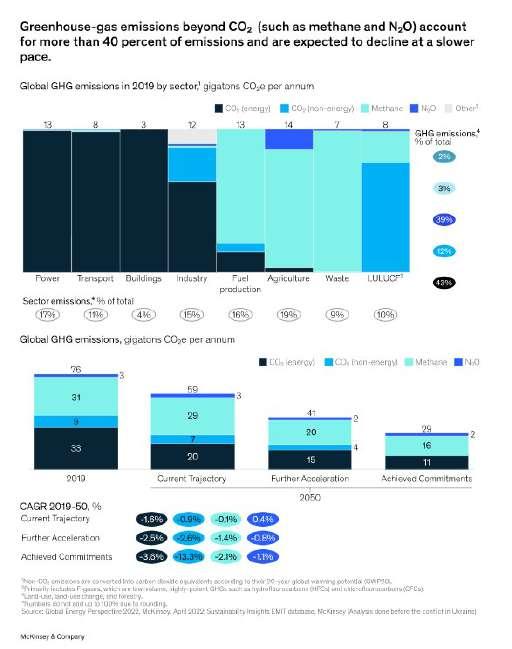
www.EQMagPro.com 35 EQ DECEMBER 2022
DESPITE THE GROWING FOCUS ON INCREASING THE RATE OF IMPLEMENTATION AND AVAILABILITY OF FINANCE, AS WELL AS ADOPTION OF NET-ZERO COMMITMENTS, THE CURRENT TRAJECTORY OF GLOBAL GHG EMISSIONS COULD LEAD TO A GLOBAL TEMPERATURE INCREASE OF 1.7ºC TO 2.4ºC BY 2100, DEPENDING ON THE SCENARIO
DECARBONISATION
IN ADDITION TO ENERGY-RELATED CO2 EMISSIONS, OTHER GREENHOUSE GASES NEED TO BE ABATED TO ACHIEVE CLIMATE TARGETS
DECARBONISATION
LIMITING GLOBAL WARMING WILL REQUIRE A JOINT EFFORT FROM PRIVATE COMPANIES, PUBLIC INSTITUTIONS, AND CITIZENS

Given the complexities involved, a critical step at this juncture is to better understand the fundamental requirements to solve the net-zero equation. Nine requirements can be grouped into three categories:
Physical building blocks: These encompass technological innovation, the ability to create at-scale supply chains and support infrastructure, and availability of necessary natural resources. Commitments and enabling mechanisms: These consist of governing standards, tracking and market mechanisms, and effective institutions; commitment by, and collaboration among, public-, private-, and social-sector leaders globally; and support from citizens and consumers. Economic and societal adjustments: These comprise effective capital reallocation and financing structures, management of demand shifts and near-term unit cost increases, and compensating mechanisms to address socioeconomic impacts.
THE 1.5º PATHWAY IS GETTING OUT OF SIGHT, GIVEN THE SHORT TIME FRAME THAT REMAINS TO KEEP EMISSIONS WITHIN THE CARBON BUDGET

Cumulative CO2 emissions are the main driver of global warming, not just the timeline to net zero, thus every year of continued emissions reduces the remaining carbon budget to stay within 1.5°C warming. Time is of the essence—the longer it takes before emissions peak, the steeper the downward trajectory needed to limit global warming. The next years will be decisive. If action is delayed, an even faster pace of transition will be required and thus the transition will likely be more disorderly.
The next decade of the energy transition will be crucial. Even as reaching a 1.5º Pathway is becoming increasingly infeasible, the physical and societal impact of global warming increases with every additional 0.1ºC. Moreover, delaying the warming trajectory is crucial to give communities more time to adapt. Striving toward net zero and the 1.5º Pathway would limit the extent of physical climate risks and reduce the odds of triggering the most catastrophic impacts of climate change. The transition itself is not without risks, including that of energy-supply volatility and supply-demand imbalances. Yet, the transition is also rich in opportunity with meaningful growth prospects, as shifting energy systems and accelerating decarbonization trends can bring new markets for low-emissions products and services. In parallel, while acting quickly will be key to achieving a low-carbon future and reaping the rewards, preparing for a world with climate-change impacts is already relevant—and becoming ever more important.
Source: mckinsey


36 EQ DECEMBER 2022 www.EQMagPro.com
COULD SUPPLY-CHAIN ISSUES DERAIL THE ENERGY TRANSITION?
Electric-vehicle penetration is the biggest driver of oil demand declines in the energy transition. However, emerging supply bottlenecks for key battery materials could be an unexpected barrier.
The need for oil-based fuels to provide the ongoing security of the supply that consumers demand may be greater than industry or policy makers appreciate, even in the era of energy transition. In McKinsey’s energy-transition scenarios, the least-aggressive scenario (Fading Momentum) shows that electric-vehicle (EV) growth could be capped by nickel supply in particular and, in the more aggressive scenarios, the risk extends across all four of the key “active materials” needed for batteries.

EVS DRIVE THE OIL-DEMAND OUTLOOK
Most oil-demand forecasts are driven by the energy transition, with EV penetration playing the lead role in reducing demand for liquid fossil fuels (Exhibit 1). Other drivers include increased usage of alternative fuels in aviation and maritime and increased plastic recycling—but EVs are the heavy hitter in terms of impact on total oil demand.
While current EV sales in the US account for less than 5 percent of sales, McKinsey projects this to rise to between 29 and 59 percent by 2030, depending upon the scenario considered.1 The range in outcomes is driven by CO2-emission reduction targets, EV targets of major OEMs, growing national restrictions on internal-combustion-engine (ICE) sales, consumer preferences in EVs over ICEs, and the ICE versus EV total cost of ownership (TCO) (Exhibit 2).

While some of these EV drivers have trended toward higher EV penetration in the past five years, TCO could be the biggest bottleneck for EV penetration to reach the higher end of the projected range, due to constrained materials’ supply (lithium, nickel, cobalt, and copper). Since July 2022, spot prices for battery-grade lithium grew by over 400 percent year over year, while nickel prices more than doubled in the same period, owing to recent market disruptions following the Russian invasion of Ukraine and years of underinvestment in the mining sector.2
MATERIALS ARE MATERIAL
Four key materials have the potential to stall EV penetration: lithium, nickel, cobalt, and copper.3 These “active materials” are critical to an EV’s operation:
• Lithium is used across cathode chemistries (and potentially next-generation anodes).
• Nickel and cobalt are used in certain cathode chemistries.
• Copper is used for windings and rotors in motors.
Currently, these materials account for about 50 percent of a battery’s total cost.4 Accelerating EV penetration is focused heavily on reducing other battery-making costs. However, success will also need these materials to be available in much higher volumes than they are at present and at a lower cost, which is currently unlikely.
BOTTLENECKS ARE STARTING TO EMERGE
EV projections show demand for these materials ranging from two to 12 times the current levels by 2030, depending on the mineral, with the largest growth rate for lithium (Exhibit 3).5 Minerals supply from open mines and those with a high prob
www.EQMagPro.com 37 EQ DECEMBER 2022
DECARBONISATION
ability of opening may be able to partly meet this growth. However, the supply falls short of reaching all demand, and harder measures (such as curtailing demand or opening less-economical mines) may be required.
OIL INDUSTRY
AND POLICY MAKERS
The reality is that potential drivers, such as EV penetration, could slow or stall—meaning that the anticipated massive energy transition may not be as inevitable as expected. The demand for oil-based fuels and reliable refining capacity could in theory suddenly exceed supply, particularly if the industry includes assumptions of higher EV penetration into their maintenance and rationalization plans and refining-capacity investment. The conflict in Ukraine that disrupted supply chains so dramatically has shown just how quickly events can change (in this case, energy-supply security and high prices) and overwhelm longer-term climate-change goals.
RAW MATERIALS PRODUCERS
As demand grows, miners will likely need to reconsider their growth portfolios, and pivot toward recycling with a combination of research and selective M&A. Technological innovation could prevent bottlenecking, accelerate growth (such as advanced analytics in mining and processing), and reduce the carbon footprint in operations (for example, fleet electrification and water management). In addition, if miners wish to gain quality and green premiums in the context of tightening supply-demand balances, producers may need to make sure that they understand their customers’ product specifications and requirements, and consider partnering with consumers.

Under the Fading Momentum scenario, the gap between the supply of materials and the demand required to reach 29 percent of new car sales is around 3.7 to 5.2 million metric tons (Mt) by 2030. While lithium, copper, and cobalt have higherlikelihood measures that may help to close the supply-demand gap, nickel faces an approximate 0.6 to 1.1 Mt gap that the industry will be challenged to close. To meet this demand, the industry may have to sacrifice EV performance with lower-nickel-content cathode chemistries with a lower energy density, or quickly move toward opening less-economical mines that will earn a profit if nickel prices remain high. Under the Current Trajectory scenario, the challenges multiply. The supply-demand gap for nickel and copper remains even after considering likely supply mitigating measures (for example, a possible 3.6 Mt in new copper mining supply based on announced projects).6 New mines also often face ESG constraints that delay new capacity coming online. As a result, meeting the Current Trajectory scenario requires more challenging and less-likely industry measures to come online. Any scenario that is more aggressive hits very hard limits across all four critical minerals that could make the scenario infeasible from an EV-penetration standpoint. In the Further Acceleration scenario, the supplydemand gap for lithium, nickel, cobalt, and copper exceeds the likely ability of the industry to meet the supply by 2030 and to reach the 59 percent EV penetration assumed. Meeting this target will be challenging, and will require both a large increase in supply (billions of dollars of capital expenditure invested in the next two to four years) and demand substitution (customers accepting lower-range vehicles with less expensive battery chemistries, transitions to using fewer battery-grade minerals in other industries, and shifting uses of materials, such as stainless-steel producers using more class 2 nickel). While these solutions are possible in the long term, they are not guaranteed to be available in time to meet EV demand in 2030.
TAKE DEMAND FORECASTS WITH A PINCH OF SALT
Demand forecasts might not be as reliable as previously thought; they should be viewed with a critical eye, as the entire EV supply chain will be affected by the ongoing shortage of critical battery minerals—including oil industry and policy makers, raw-materials producers, and automotive OEMs.

AUTOMOTIVE OEMS AND EV-BATTERY MAKERS
When considering technology development and growth plans, raw-materials consumers will need to factor in potential resource constraints. Raw-materials suppliers will require a clear understanding of consumers’ growth, technology mix, and material needs before they commit to large capital investments. This will take place in various ways (and has already in some cases), such as equity ownership of raw-materials production, off-take agreements with producers, and partnerships with rawmaterials suppliers. Whichever strategy is used, companies in the supply chain—for instance, battery and cathode-active material producers and EV OEMs—will need to secure raw materials for their aggressive growth plans and decarbonize their own supply chains. These producers and OEMs in turn will also need to make decisions on how to optimize their production to account for potentially constrained resources (for example, by producing batteries with less materials-constrained battery chemistries).
38 EQ DECEMBER 2022 www.EQMagPro.com
Source: mckinsey DECARBONISATION
HOW CONSUMER COMPANIES CAN EMBRACE CHANGE AMID VOLATILITY

Ithink in today’s world you need to be a triathlete. You essentially need to have three mindsets: One of growth, one of frugality, and the final one is of learning. Think about growth—yes, we’re facing very tough economic circumstances. At the same time, it’s mostly a supply shock crisis. And quite a few consumers are still excited to spend more, particularly in Gen Z, and want to splurge. So, find the growth and go for it would be my number one mindset. The second one is frugality. But at the same time, you have to take out cost where it doesn’t add any value to reinvest it back into innovation and growth, the first mindset. So, embrace frugality because you’re saving for your customers and your consumers. And then the third mindset is one of learning. We’re living in times that are so uncertain unless you have a very open mindset. As a CEO and as a leader, understand that you don’t know what you don’t know. So, you can react fast but also use data to be more ahead of competition so you’re not only fast, but you’re faster than competition. Because I think in the end, the people that have a growth mindset are frugal and act fast.
HOW DO THESE MINDSETS APPLY TO CONSUMER COMPANIES?
I think what you see consumers do is a couple of things. So, they see zero boundaries between the physical and the online. As a consumer company, think about where you are in that ecosystem: Where am I building brands, where am I selling, and how do I play in that zero-boundaries world? I think the second part we see is, there is this tendency to go zero mainstream. People splurge and people save but the middle, eh. So as a consumer company, think about your brand portfolio. As a retailer, think about your assortment. Are you sufficiently polarized at the top end and the bottom end and not stuck in the middle? I think the third one is consumers increasingly are zero tolerant of companies that are only driving toward profit, not purpose and sustainability. So, actually thinking about what you stand for as a company, not just for your consumers and your brands, but also for your employee value proposition. So, specific to what we see going on in the consumer world, it’s important to think about where you live in your zero boundaries. Think about where you are in your zero mainstream. And think about where you are in net-zero in terms of playing to purpose and sustainability.
Source: mckinsey
www.EQMagPro.com 39 EQ DECEMBER 2022
Senior partner Dymfke Kuijpers shares more on being a business ‘triathlete’, and how consumer companies can embrace three mindsets to navigate current economic headwinds.
DECARBONISATION
NET ZERO BY 2050 POSSIBLE, BUT CLEAN ENERGY INVESTMENTS NEED TO OUTWEIGH FOSSILS FAST: REPORT
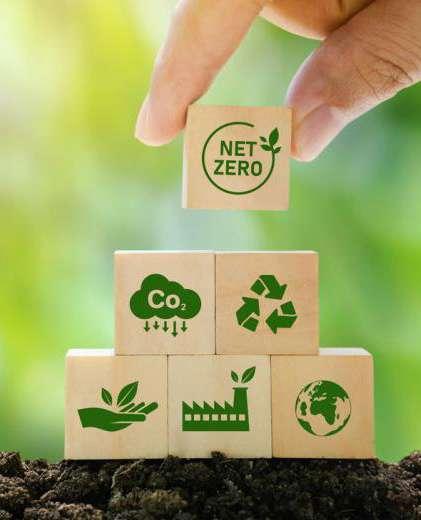

Heavy
t is still possible to keep the temperature increase to 1.77 degrees Celsius with determined action, according to a new energy economy analysis. But investments in the clean energy sector must triple that of fossil fuel to reach Net Zero by 2050. Greenhouse gas emissions from developing economies, particularly India, will continue to rise until the end of the present decade and will only begin to decline by the early 2030s, according to the 2022 New Energy Outlook report. The report by global, clean energy research provider BloombergNEF analysed Net Zero scenarios or pathways that limit global warming to 1.77 degrees Celsius above pre-industrial levels by 2050, with a 67 per cent assurance. Emissions in Europe, the United States, Australia and Japan have already peaked this year and will decline rapidly after that, according to their projections. However, China’s drop takes a blended approach; emissions peak this year and stabilise for a while before they realign with developed countries’ trajectories. Limiting global temperature increases to 1.5 degrees Celsius will not be easily achieved, found the researchers’ modelling. Nevertheless, “there are still plausible pathways to stay within 1.77 degrees Celsius of warming in our Net Zero scenario,” the report said. “Our modelling suggests emissions need to fall by 30 per cent by 2030 and overall by 6 per cent a year to 2040,” the study added. “Even then, a revolution will be needed in the energy sector to increase momentum and accelerate emissions reductions.”
Using CCS results in 11 per cent of all emissions being reduced from 2022-50. “The annual rate of emissions captured by CCS grows from very low levels today to 1.7 gigatons of carbon dioxide in 2030, 4.9 gigatons in 2040 and 7.3 gigatons by 2050 — a volume comparable to the combined power sector emissions of China, the US, and Europe in 2021,” the report read. The usage of hydrogen grows five-fold in the Net Zero projection for 2050 from 90 million tonnes now to 501 million tonnes in 2050. It is driven by the energy industry (163 million tonnes), steel making (144 million tonnes) and transport (88 million tonnes) sectors for either aviation or shipping. Net Zero scenario requires a global investment of $194 trillion by 2050 to make this large-scale clean energy transition. “The ratio of investment in clean-energy supply to fossil sources (excluding demand areas) must average 2.9 in this decade, and then rise to 4.9 in the 2030s and 9.7 in the 2040s,” the report said. “This means that, for every dollar invested in fossil-energy supplies between now and 2030, $2.9 should be invested in clean energy supplies such as renewable energy, clean hydrogen and carbon capture, rising to nearly $10 after 2040,” it added. Net Zero projections are not reflective of their assessment of countries’ internal measures and responsibilities, the authors clarified. They mention that the findings are only an analysis of the carbon budget of various sectors, including aviation, petrochemicals, power, rail and road. It also takes into account economic growth and demand factors. While the 27th Conference of the Parties to the United Nations Framework Convention on Climate Change (COP27) did not result in decisive actions toward phasing out fossil fuels, governments and the public sector could still work closely together to transition to low-carbon energy technologies, the authors said.
On the contrary, if no new policies were carried out to transition to a low-carbon economy, the emissions would fall on average at a rate of 0.9 per cent every year, as per the economic transition scenario. This aligned with 2.6 degrees Celsius temperature warming by 2100. Switching the sources of power generation from fossil fuels to renewable energy is the need of the hour, the report highlighted. This would account for nearly half of the reductions in carbon emissions, according to the author’s net zero calculations. About 25 per cent of total emissions can be reduced using low-carbon electricity in the transport sector and industrial processes. The rest of the emissions can be abated by hydrogen and carbon capture and storage (CCS) by 6 per cent and 11 per cent, respectively.
CCS is the process of using technology to capture carbon emissions from industrial processes or power generation, from where it is transported and stored underground for posterity.
40 EQ DECEMBER 2022 www.EQMagPro.com
investment, hydrogen and carbon capture & storage can help keep the temperature increase to 1.7 degrees Celsius
AND CARTURE CAPTURE NEEDS PUSH Source: PTI DECARBONISATION
I HYDROGEN
POWER SECRETARY PITCHES FOR REDUCING COST OF SMART METERS




The government asked smart meter makers to bring down the cost of the device to make it more affordable. Power Secretary Alok Kumar said safety, quality and design should be the key parameters for manufacturing of smart meters. “I urge the manufacturers to think of innovative ways to reduce the price of the meters to half without compromising on quality. We have improved the loss reduction aspect and are working on the expansion of RDSS scheme and smart distribution,” Kumar said while addressing industry body Indian Electrical & Electronics Manufacturers’ Association’s (IEEMA) ‘9th Metering India 2022’ event here.
Besides, IEEMA should focus on capacity building of the utilities and finding opportunities to change conventional meters into smart meters with sustainable disposing option, he said. Smart meter costs around USD 50 As per industry estimates, a smart meter costs around USD 50, including manufacturing and installation charges.
Around 25 crore smart prepaid metres are to be installed by March 2025 under the Revamped Distribution Sector Scheme (RDSS) at an outlay of Rs 3.3 lakh crore. Amit Kumar, Chairman of IEEMA Meter Division and Vice President of Schneider Electric India Pvt Ltd, said the combined annual production capacity of the Indian meter industry is more than 100 million smart meters which is sufficient to meet the 2025 target.




These new age smart meters help reduce the operation and maintenance cost, and enhance the quality of service. Metering is an important infrastructure for the country. Jitendra K Agarwal, Joint MD of Genus Power and Chairman Elecrama 2022, said. The IEEMA has around 1,000 member organisations across the entire value chain in power generation, transmission and distribution, equipment, and electronic goods. Elecrama is part of IEEMA.
Source : psuwatch
www.EQMagPro.com 41 EQ DECEMBER 2022 INDIA
IIT GUWAHATI REPORT MULTIFUNCTIONAL ENZYME THAT CAN BREAKDOWN WOODY BIOMASS FOR CONVERSION TO BIOETHANOL
Indian Institute of Technology Guwahati researchers have studied the efficacy of a specific bacterial endoglucanase enzyme, RfGH5_4 from Ruminococcus flavefaciens in breaking down woody biomatter into simple sugar that can be fermented efficiently to produce bioethanol – a promising renewable fuel that can replace petroleum-based fuel systems.

IIT Guwahati researchers and researchers from the University of Lisbon, Portugal have recently published the discovery and observations of the research in the International Journal of Biological Macromolecules. The published paper is the research work carried out by Mr. Parmeshwar Vitthal Gavande, Doctoral student of Prof. Arun Goyal, as a part the PhD thesis work. The IIT Guwahati scientists have shown the efficacy of a new type of endoglucanase called RfGH5_4 in breaking down lignocellulosic and hemicellulosic biomass for the eventual conversion to bioethanol fuel. The enzyme was derived from a bacterium called Ruminococcus flavefaciens. The IIT Guwahati team chose Ruminococcus flavefaciens because this bacterium is found in the gut of cows and other cud-chewing animals which have faced the cellulosic pressure for millions of years. The particular gene encoding the cellulase enzyme, RfGH5_4 was fished-out from R. flavefaciens. The researchers have thus developed this efficient machinery of RfGH5_4 to break down cellulose and cellulosic structures into simple sugars. The bacterium harbours a cohort of at least 14 different multimodular enzymes that can break down cellulose, one of which is RfGH5_4.
Elucidating the structural basis, Mr. Parmeshwar Gavande, PhD Research Scholar and the First author, elaborated, “The structure of RfGH5_4 was deciphered using extensive molecular dynamics and computational approaches at ParamIshan Supercomputer facility of IITG. RfGH5_4 was found to contain some highly flexible loops in its core structure making room for different carbohydrate polymers during the reaction, thus imparting the multifunctionality to RfGH5_4”
Prof. Arun Goyal, Department of Biosciences and Bioengineering, IIT Guwahati, said, “We characterized Endoglucanase, RfGH5_4 and found that it hydrolysed carboxymethyl cellulose (a lab-scale analog of cellulose) as well as normal amorphous cellulose with greater catalytic efficiency. Our stud ies also showed that this enzyme acted on lignocellulosic substrates from differ ent agricultural residues such as cotton stalk, sorghum stalk, sugarcane bagasse, etc. and had good affinity for hemicellulosic substrates as well which include β-glucan, lichenan, xyloglucan, konjac glucomannan, xylan and carob galactomannan . The IITG team’s earlier work on cloning, expression and biochemical characterization of RfGH5_4 revealed that this particular endoglucanase is multifunctional and catalytically efficient. With this knowledge, they characterized the structure of this enzyme, its reaction mechanism and the structural basis of its multifunctionality. Adding to the characteristics of RfGH5_4 they further emphasized that its multifunctionality make RfGH5_4 stand out from the plethora of other cellulases that are present in nature and available commercially ”.

“Agricultural residual biomasses are wasted or burned causing various environmental hazard including global warming and climate change. Their deconstruction by RfGH5_4 might extend its usage in food medicine as well”, Prof. Goyal foresees to employ RfGH5_4 serving the humanity. The presented research constructively tries to lend a helping hand in addressing the Sustainable Development Goals 2030 (SDGs) of United Nations”, Prof. Goyal further added.
RfGH5_4 is sufficiently active at ambient temperatures. Therefore, it might be suitable for the Simultaneous Saccharification and Fermentation (SSF) of lignocellulosic biomass, the process greatly admired in industry. The research has shown that multifunctional RfGH5_4 cellulase might be used for the efficient and cost-effective production of lignocellulosic bioethanol on an industrial scale. Thus, its ability to break down cellulose and hemicellulose makes it possibly useful in various other applications such as the textile, food and pulp industry, synthesis of prebiotics, and pharmaceuticals, among others. The findings of this research work were also recently presented by Mr. Gavande at the International Conference of Biotechnology for Better Tomorrow (ICBBT-2022) at Bali, Indonesia, and received the Best Oral Presentation Award for it.
42 EQ DECEMBER 2022 www.EQMagPro.com INDIA
Source: PTI
JSW RENEW ENERGY COMMISSIONS 27 MW WIND ENERGY CAPACITY IN TUTICORIN
JSW Energy said that its arm JSW ReNew Energy has commissioned 27 MW wind
phase of its 450 MW wind project.
“JSW Renew Energy Two Ltd, a step-down subsidiary of JSW Energy, has started phase-wise commissioning of 450 MW ISTS-connected wind power project awarded under SECI (Solar Energy Corporation of India) tranche X at Tuticorin in Tamil Nadu with commissioning of the first phase of 27 MW,” a BSE filing stated. This is the company’s first greenfield wind power project to be commissioned and is a testament of the group’s project execution capabilities, it stated. The project has the power purchase agreement with the SECI for a period of 25 years. In addition to this project, the company is also constructing 1.8 GW of greenfield renewable energy capacity in pursuit of reaching 10 GW capacity well ahead of its FY25 timelines, and 20 GW capacity by FY30.
Prashant Jain, Joint Managing Director and CEO of JSW Energy, said in the statement, “We are happy to announce the first part commissioning of the SECI X wind project ahead of the schedule. This is an initial step towards progressive commissioning of the greenfield 450 MW wind project.

With this, renewables capacity continues to gain share in our operational capacity mix as we are committed to achieving net zero by 2050.”The company is evaluating opportunities to foray into emerging energy businesses of hydro pumped storage, battery energy storage, green hydrogen, and becoming an energy products and services company, it stated.
JSW Energy has set an ambitious target for a 50 per cent reduction in its carbon footprint by 2030 and achieving carbon neutrality by 2050 by transitioning towards renewable energy. The company has set a target to reach 20 GW capacity by 2030, with the share of renewable energy increasing to 81 per cent. Around 2.63 GW of renewable energy projects are currently under-construction/in-pipeline, with wind projects of 1.26 GW tied with SECI expected to be fully commissioned in the next 12-18 months. Further, the company has received LoA (letter of award) for 300 MW wind project from SECI under its tranche XII auction. With the acquisition of Mytrah Energy’s 1.75 GW RE assets and 700 MW Ind-Barath Thermal Power Plant, total locked-in capacity will increase to 9.9 GW. The JSW Neo Energy, a wholly-owned subsidiary of JSW Energy, is a vehicle formed as part of re-organisation of business to own all the renewable/green and new energy businesses.

WEST BENGAL PLANNING GREEN HYDROGEN PLANT IN DURGAPUR

Speaking at the ABP Group-organised INFOCOM 2022, Biswas said nearly Rs 11,900 crore of investment has been lined for the power sector under the Centre’s Revamped Distribution Sector Scheme (RDSS). “Recently, the Union government has identified West Bengal as a potential state for green hydrogen and ammonia manufacturing zone, and the West Bengal Power Development Corporation Limited (WBPDCL) is planning to install a green hydrogen plant at Durgapur as a pilot project,” he said. The minister said the state government will “immediately” undertake major upgradation at the Kolaghat and Bandel thermal power stations. “The pursuit towards energy transition has got a major fillip through the RDSS programme under which Rs 11,895 crore shall be invested for loss reduction, installation of smart meters and system modernisation to put forward the sector on the path of a sustained improvement trajectory,” Biswas said. He also said a 660-MW supercritical thermal power station is un-
and two 800 MW thermal power units at Bakreshwar (Birbhum district) and Santaldih (Purulia district), respectively,” the minister said. Besides, the West Bengal Cabinet has approved a 500-MW floating solar plant at Bakreshwar dam, Biswas said.
www.EQMagPro.com 43 EQ DECEMBER 2022 INDIA
energy generation capacity at Tuticorin in Tamil Nadu as part of the first
West Bengal is planning to set up a green hydrogen plant in Durgapur, with the central government identifying the state as a potential region for its production, Power Minister Aroop Biswas said.
Source: PTI
INDIAN COAL MAGNATE GAUTAM ADANI GOES GREEN
Asia’s richest man, Gautam Adani, made his vast fortune betting on coal as an energy hungry India grew swiftly after liberalizing its economy in the 1990s.
He’s now set his sights on becoming the world’s biggest renewable energy player, by 2030, by promising to align his investments with the government’s own priorities. As India grapples with climate change, the Adani Group, whose operations also span ports, power, farming and defense manufacturing, announced in September plans to invest $70 billion in solar, wind and other green energy projects over the next decade. Adani, 60, has profited since fellow Gujarati Narendra Modi, India’s most influential prime minister in decades, took office in 2014. The college drop out from a middle-class family fits the government’s need “national champions,” both to meet domestic goals and as private sector partners in strategic projects outside India, said Mihir Sharma, an economist at the Observer Research Foundation, a New Delhi-based think tank. “It isn’t that government policies are shaped by the Adani Group so much as the Adani Group is a willing and able partner in what the government decides are its priorities,” Sharma said. Since Modi became prime minister, having at times campaigned using a private jet owned by the tycoon, Adani’s net worth has shot up nearly 2,000% to $125 billion, according to Bloomberg’s Billionaire Index. He surpassed Amazon boss Jeff Bezos to briefly become the world’s second richest man in September after a surge in the value of his seven listed entities. Adani’s businesses have won multibillion dollar contracts to build ports, highways and power plants. The industrialist’s ambitions include developing drones and ammunition, key to the government’s goal of boosting military-related exports to $5 billion while slashing costs for expensive imports. Adani has also invested in agriculture, a huge priority for Modi given the importance of the farm vote. One of eight children in a middleclass family in Ahmedabad, in Modi’s west Indian home state of Gujarat, Adani began his career trading diamonds in the financial hub of Mumbai. He returned home to join his brother in importing plastics before establishing Adani Enterprises in the 1980s, trading in everything from shoes to buckets. His career has known ups and downs: he was kidnapped for ransom in 1988 and survived 2008 terror attacks in Mumbai by hiding in the basement of a hotel militants were holding under siege. Though his wealth was built from coal mining and other heavy industries, early on Adani recognized the promise of renewable energy, said Tim Buckley, director of Australia-based Climate Energy Finance, who has been tracking investments in renewables in Asia for decades. Adani has capitalized on Indian government incentives promoting self reliance and achieving net zero by 2070, recently receiving nearly $90 million in government subsidies to produce solar modules. “I don’t think Gautam Adani really thinks about climate science — but what he does do is understand the geopolitical and economic interests of India and he positions himself to solve that problem for his own and India’s benefit,” Buckley said “He wants to be. up
there with Bill Gates, with Elon Musk. The only way he can do that is by being a credible global billionaire, rather than the biggest fish in the Indian market. Adani Green is what he will want to be his legacy,” he added. Adani’s green energy push isn’t limited to India. He recently announced plans to build a 10 gigawatt clean energy project in Morocco that will help meet Europe’s energy needs. Still, he has not yet abandoned his fossil fuel roots. In December 2021, the Adani Group began exporting coal from Australia’s Carmichael mine after years of disputes with environmental groups. The project 300 kilometers (185 miles) west of the Queensland coast includes a rail line for shipping coal from the Galilee Basin to countries in Asia, including India. Energy-hungry Bangladesh will soon start receiving a share of its electricity from an Adani coal-fired plant under construction in eastern India. Adani recently announced plans to invest more than $4 billion in a petrochemicals complex that will include an ethane cracker and a plant that will convert natural gas into plastics. Critics say such projects run counter to Adani’s green energy zeal. The company says such a mix is inevitable given the need to meet soaring demand while India makes a transition to a cleaner future. “While we are fully committed to clean energy, existential demands dictate that we have to stay the course with traditional fuel sources until reliable alternatives are in place,” the company said in a statement. It said use of fossil fuels will be phased out, and “that is why it is our long-term vision to remain focused on clean, reliable, affordable energy.” In Adani, India has a rival for some of China’s big business empires. Last year, Adani Ports and Special Economic Zones inked a deal with Sri Lanka to develop and run a terminal in Colombo Port, the country’s busiest and largest port. That was a triumph for New Delhi’s push for influence in the island nation, where China has invested billions of dollars in infrastructure, including taking over Hambantota, a port in southern Sri Lanka that has struggled to generate profits. Earlier this year, Adani Ports gained a 70% stake in Israel’s Haifa Port, near Haifa Bay Port, which is managed by China’s Shanghai International Port Group. The group committed to investing in projects in Tanzania after a Chinese-managed port deal, part of its ambitious Belt and Road Initiative, ran into difficulties. Stretching to expand internationally, the group has had to address concerns over rising debt levels. Adani Enterprises, the group’s main listed company, has announced it will seek shareholder approval for a share offering to raise more than $2 billion. Adani’s bid to take over NDTV, a leading Indian broadcaster, has raised concern he might, given his close ties with Modi, move to stifle the network’s often critical stance toward the government. Adani did not agree to requests for an interview. The company sent written comments to questions through a company spokesperson that defended the Adani Group’s strong track record in winning government contracts and pursuing opportunities both inside and outside India. “Strategic priorities, both domestic and foreign of any country, may be instrumental in creating business opportunities,” it said. “If it is attractive enough, we are willing to invest, cutting across geographies and sectors.” RN Bhaskar, a journalist who wrote a biography on Adani, says it was natural for the tycoon to tie his fortunes with those of Modi and his party as they rose to power, just as he earlier was friendly with the rival Congress Party, which governed Gujarat state when many of his early projects began. “A key element to Adani’s success has been his ability to manage relationships. He’s close to every politician that is in power,” Bhaskar said. “In India, big business works only through alignment with the government — India is in the same phase as the robber barons and Rothschilds of the 19th Century. If tomorrow, an opposition party took over, Adani would be close to them too.”

44 EQ DECEMBER 2022 www.EQMagPro.com
Source:
INDIA
PTI
GENSOL ENGG GAINS ON BAGGING SOLAR PROJECTS

Gensol Engineering rose 1.46% to Rs 1,443 after the company said it won tender for building 30 MWac
Bengal.
The company has in the month of November 2022 in normal course of business has won the bid for the development of 30 MWac (and a minimum of 40 MWdc) floating solar projects. The cumulative order value of these projects is pegged at over Rs 232.49 crore. These grid-connected floating solar projects of 30 MWac capacity on raw water reservoirs at state-owned power generator’s thermal power plants. This 30 MWac capacity is spread over three thermal power stations in Jharkhand (6 MWac at Koderma) and West Bengal (14 MWac at Mejia and 10 MWac at Raghunathpur). The scope of work includes design, engineering, supply, construction, testing, and commissioning of these projects alongwith comprehensive operation and maintenance services for 10 years after successfully commissioning the plant. “Keeping in mind that the global pipeline of new coal power plants has collapsed since the 2015 Paris Climate agreement, new thermal power projects are not being erected, a fact that has prompted such generators to install solar power projects and particularly floating across all its dams,” the company said in a statement. Gensol Engineering offers end-to-end EPC and solar advisory services. The company is engaged in providing technical due diligence, detailed engineering, quality control, construction supervision, and other consulting services for solar projects across many countries, including India. On a consolidated basis, the company’s revenue for H1FY23 stood at Rs 182.80 crore, up by 437% YoY from Rs 34.1 crore in H1FY22. Profit after Tax (PAT) for H1FY23 was at Rs 13.1 crore, up by 465% YoY from Rs 2.3 crore in H1FY22.

AMAZON REVEALED 300 MW WIND-SOLAR HYBRID PROJECTS IN INDIA
“These two projects represent a total of 300 megawatts (MW) of renewable energy capacity and will be based in the states of Madhya Pradesh and Karnataka, “In a news release, the company stated. “Once operational these projects are expected to generate 1,163,000 megawatt hours (MWh) of clean energy, which is the equivalent amount of electricity needed to power 380,000 average-sized households in New Delhi each year,” It continued. Amazon now has five utility-scale renewable energy projects in India, totaling over 720 MW of renewable energy capacity, with three solar farms in Rajasthan. According to Abhinav Singh, Director Of Customer Fulfilment, Supply Chain, and Global Specialty Fulfillment, “As the largest corporate purchaser of renewable energy globally, we continue to build momentum for our renewable energy investments in India. The two new projects represent Amazon’s first wind-solar hybrid projects globally,” “We are on a path to powering our operations globally with 100% renewable energy by 2025 and have worked with government and industry stakeholders in India to unlock more corporate renewable energy procurement in the country. This year, we have reached over 720MW of renewable energy capacity through utility-scale projects in India.”
“This collaboration between Vibrant and Amazon will encourage the adoption of renewable energy by corporates in India. We expect India to be one of the earliest markets in the world to deliver renewable energy through similar hybrid projects. We are honored to collaborate with Amazon on its path to powering its operations with 100% renewable energy by 2025,” said Vibrant Energy CEO Srinivasan Viswanathan.
www.EQMagPro.com 45 EQ DECEMBER 2022
floating solar projects in Jharkhand and West
Amazon and Vibrant Energy, a division of Macquarie’s Green Investment Group, revealed their first wind-solar hybrid projects in India.
Source: PTI
INDIA
Source: Capital Market
PRIVATISATION IS NOT THE ONLY SOLUTION TO DISCOMS WOES SAY NTPC CMD GURDEEP
The union government has been taking initiatives to privatise the discoms.
Privatisation is not the only solution to problems being faced by many power distribution utilities or discoms in the country as many state-owned entities are running efficiently and making profit, NTPC Chairman and Managing Director Gurdeep Singh said. The union government has been taking initiatives to privatise the discoms. But since electricity is in the concurrent list of the Constitution of India, the union government could take steps to privatise discoms in the Union Territories only. Some states including Gujarat, Odisha, West Bengal have privatised the power distribution. Participating in a panel discussion at ENRich 2022 organised by KPMG, Singh said, “I don’t know whether privatisation is the only solution. But yes, it is one of the solutions.” He said private discoms are running efficiently and making a profit and also mentioned that at the same time there are stateowned discoms which are running efficiently and also making profits. “I had been closely associated with them (discoms). There is not only one solution to a problem (of discoms).” About the addition of renewable energy and phasing out coal-based thermal power plants, he opined that coal
is going to stay while the NTPC will do everything to increase non-fossil fuel-based electricity generation. “Our (NTPC’s) growth is going to be more and more on renewable side. But we should never forget that we (NTPC) are a national utility. Our prime responsibility is that power is available and affordable and within that (framework) how we can make it much cleaner and greener. I think this is the only mantra which really keeps guiding us,” he stated. He stated that the NTPC still supplies one-quarter of the electricity in the country. “I keep telling my team that we have gone up in this (supply proportion). How we can go up in the renewable component in that (our supply proportion) But that does not mean that we are going to shut down any coal-based plants,” he added. He also stated that he has no hesitation to share that even decommissioning the coal-based plant is still a little far away. “But we will have to do that. There is no other way. But we should not be in a hurry. What we have to do is to bring flexibility and what we should be working at is how can we reduce emissions…We have to always keep our feet on the ground while having ambitions to fly high,” he said.
AC APPROVES SUBSIDIZED ROOFTOP SOLAR POWER PLANTS ON RESIDENTIAL BUILDINGS ACROSS JK

In a significant step towards a greener future, the Administrative Council (AC) which
Sinha, approved installation of Roof Top Solar power plantson Residential
Rajeev Rai Bhatnagar, Advisor to the Lieutenant Governor, Dr.
J&K attended the meeting. The 20 MW Rooftop Solar Power Plants on Residential Buildings shall be installed by the Jammu and Kashmir Energy Development Agency (JAKEDA), Science and Technology Department, under “Grid Connected Rooftop Solar Programme, Phase-II” of Ministry of New Renewable Energy at aprojectcostofRs104Crore. These Rooftop Solar Power Plants will be connected with the Grid on Net Metering basis. Besides, providing a clean and green environment through reduction of carbon emission, the generation of solar energy through Rooftop Solar Programme shall also offset power requirements of domestic consumers in Jammu and Kashmir. Under the new progressive and investor-friendly policy, the government would extend subsidy contribution equivalent to 25% of the project, for the installation of Grid Tied Roof top Solar Power Plants on residential buildings across all districts of UT of J&K. The project is to be completed by the end of November 2023 and shall be maintained free of cost for a period of five years by JAKEDA through the empanelled vendors.
46 EQ DECEMBER 2022 www.EQMagPro.com
met here under the chairmanship of the Lieutenant Governor, Manoj
Buildings across all districts of J&K.
Arun Kumar Mehta, Chief Secretary,
Source: PTI
Source: PTI
INDIA
INDIA TO PITCH FOR GLOBAL ALLIANCE IN BIOFUELS AT G20: HARDEEP SINGH PURI INDIA TO PITCH FOR GLOBAL ALLIANCE IN BIOFUELS AT G20: HARDEEP SINGH PURI
Union Minister for Petroleum & Natural Gas. Hardeep Singh Puri stated that the country will advocate for a global alliance on biofuels at the upcoming G20 summit, along the lines of the highly successful international solar alliance.

The International Solar Alliance (ISA) was established on November 30, 2015, by India and France to carry out the Paris Agreement. It was designed as a coalition of nations with abun dant solar resourc es to address their unique en ergy needs. In dia, the third-largest consumer and importer of oil in the world, is currently advocating for increased use of biofuels made from sugarcane, cereals, and agricultural waste as a way to reduce reliance on crude oil. “We will utilise our G20 presidency to try and set up an international biofuel alliance like the International Solar Alliance,” Puri said at KPMG’s ENRich 2022 conference. In September of next year, India will host a meeting of the G20 member countries as it assumes the presidency of the group of 20 major economies. Given that countries from Brazil to the US produce biofuels, the alliance would try to create an ecosystem for fuel
standards and engines as well as technological cooperation for a quicker adoption. Puri claimed that India already uses gasoline that has been blended with 10% ethanol produced from sugarcane and other agricultural products. “We have brought forward that target for mixing 20 per cent ethanol in petrol to 2024-25 from 2030. And going by the effort on ground, I can say with some degree of certainty that 20 per cent blending can be achieved even before 2024-25,” he said. The US, Brazil, Argentina, Indonesia, and China are a few of the major nations that produce biofuels. The goal of mixing ethanol and gasoline is to lessen India’s dependence on oil imports, which account for 85% of its needs. Biofuels also help achieve carbon reduction goals because they emit fewer emissions. According to Puri, India is expanding the types of oil it imports by utilising fresher supply sources. The basket has increased to 37 countries from the original 27 countries, he claimed. Diversification would lessen reliance on any one particular region or nation and assist in reducing the impact of supply shocks. Earlier, this month India had called for phasing down the consumption of all fossil fuels at the COP27 summit in Egypt, although that proposition could not make to the final draft given the fixation of developing countries over the loss and damages fund.
AURANGABAD FACILITY OF VOLKSWAGEN MOVES TO 100 PER CENT GREEN ENERGY
Volkswagen Group’s Aurangabad factory has switched to 100 percent ‘green’ energy, well ahead of its 2025 target. It is the first automobile manufacturing unit in Aurangabad to be certified as a Green Energy Plant by Maharashtra State Electricity Distribution Company Limited (MSEDCL).

Commenting on the milestone, Piyush Arora, Managing Director and CEO of ŠKODA AUTO Volkswagen India Private Limited said, “Sustainability is a key pillar of the Group’s corporate strategy. It is also a cornerstone of our manufacturing processes. In the Volkswagen Group, ‘goTOzero’ is not only a roadmap for effective climate protection, it is also an integral strategic initiative towards sustainable mobility.” This pro duction facility is managed by ŠKODA AUTO Volkswagen India Private Limited (SAVWIPL) which is also responsible for the operations of five Volkswagen Group brands – ŠKODA, Volkswagen, Audi, Porsche, and Lamborghini – in India. We take a holistic approach to decarbonisation – from production through service life to recycling. We are enormously proud of achieving 100% Green Energy Certification for our Aurangabad facility well in advance of the target date. This feat moves us closer to our goal of achieving carbon neutrality in our manufacturing operations by the second half of the the decade and motivates us to forge ahead with our Green Future
initiatives,” added Arora. Nearly four years back in 2018, the Aurangabad facility had increased its capacity usage of ‘green’ energy and commissioned a 980 kWp rooftop solar power plant to meet 40 percent of its annual energy requirement. It swapped the external energy supply with renewable energy. Now, the Aurangabad plant will achieve an approximately 48 percent reduction in CO2 every year. As part of its ‘goTOzero’ mission, the VW Group aims to become a carbon-neutral company by 2050.

www.EQMagPro.com 47 EQ DECEMBER 2022
Source: PTI
INDIA
Source: PTI
10-POINT ACTION PLAN TO HELP INDUSTRIES ADAPT AND ENHANCE ENERGY EFFICIENCY
• Independent report highlights 10 actions to help industrial users improve their energy efficiency, and reduce emissions right now
• Improving energy efficiency will reduce energy bills and emissions substantially in the short- to mid-term, without compromising productivity
• Industry is the world’s largest consumer of electricity, natural gas and coal, and accounts for 42 percent of electricity demand
With businesses around the world facing unprecedented pressure from the cost of energy and the urgency of climate change, a new report from the Energy Efficiency Movement shows that improving industrial energy efficiency is the fastest and most effective way for a business to cut energy costs and greenhouse gas emissions. The Energy Efficiency Movement is a global forum of around 200 organizations sharing ideas, best practices and commitments to create a more energy-efficient world. Published, the “Industrial energy efficiency playbook” includes 10 actions that a business can take to improve its energy efficiency, reduce energy costs and lower emissions right now. It focuses on mature, widely available technology solutions that will deliver rapid results and ROI and are capable of being deployed at scale.
“Energy efficiency is a key driving force in India’s journey to carbon neutrality. While energy consumption continues to increase with economic growth, Indian industries have realized the need to adapt more sustainable cost-effective options for a greener future. As an example, in 10 years ABB’s installed base of motors and drives saved nearly 12 terra-watt hours of electricity, equivalent to 1% of India’s annual energy consumption. This 10-point action plan is a blue-print for Indian industries to embark on their energy efficiency journey and walk along the sustainable growth path towards a brighter future,” said Sanjeev Sharma, Country Head and Managing Director, ABB India.

In India, JW Marriott Pune cut down on energy losses by 35 per cent using ABB’s HVAC cooling tower drives solution. ABB’s Ai-enabled building management system installed in its country and business office Disha is helping cut down energy costs by 30 percent with enhanced efficiency. ABB’s Slip Power Recovery System (SPRS) has helped Wonder Cement to save up to 15 percent or 1.8 GWh of energy annually equivalent to power consumed by 9000 households per month. ABB’s Smart Power factory with industry 5.0, first of its kind links robots, motors and drives to industrial IoT, enhancing productivity by 40 percent in the same space with 15 percent enhanced energy efficiency. “Energy efficiency is a win-win for companies and the climate,” said Kevin Lane, senior program manager, energy efficiency, with the International Energy Agency (IEA). “While industry needs to address climate change on all fronts – such as increasing use of renewable energy, investing in low-carbon processes and developing circular business models – energy efficiency stands out as the business-focused opportunity with the best near-term prospects for emission reductions. The 10 actions contained in this report are known, cost-effective resources, and can be employed at scale rapidly to help companies convert climate ambition into action.” Industry is the world’s largest consumer of electricity, natural gas, and coal, according to the IEA, accounting for 42 percent of total electricity demand, equal to more than 34 exajoules of energy.1 The iron, steel, chemical and petrochemical industries are the largest consumers of energy among the world’s top-five energyconsuming countries – China, United States, India, Russia and Japan. This energy consumption carries high costs in the current inflationary environment. It was also responsible for nine gigatons of CO2, equal to 45 percent of total direct emissions from end-use sectors in 2021, according to the IEA. Organizations interviewed for the report include ABB, Alfa Laval, DHL Group, the IEA, Microsoft and ETH Zürich, the Swiss federal institute of technology. The contributors’ recommendations range from carrying out energy audits to right-sizing industrial machines that are often too big for the job at hand, which wastes energy. Moving data from on-site servers and into the cloud could help save around 90 percent of the energy consumed

48 EQ DECEMBER 2022 www.EQMagPro.com
INDIA
by IT systems.2 Speeding up the transition from fossil fuels, by electrifying industrial fleets, switching gas boilers to heat pumps, or using well-maintained heat exchangers will also offer efficiencies. Further actions involve installing sensors and real-time digital energy monitoring to reveal the presence of so-called “ghost assets” that use power when on stand-by, unlike a digital twin that can simulate efficiency actions without interrupting production. Using smart building solutions to control power systems, lighting, blinds and heating, ventilation, and air conditioning (HVAC) will also save energy in industrial facilities. Other recommendations include installing variable speed drives which can improve the energy efficiency of a motordriven system by up to 30 percent, yielding immediate cost and emissions benefits. If the more than 300 million industrial elec tric motor-driven systems currently in operation were replaced with optimized, high-efficiency motors, global electricity consumption could be reduced by up to 10 percent. “There are energy efficien cy solutions available that can help industry mitigate climate change and drive down energy costs, without compromising performance and productivity,” said Tarak Mehta, president, Motion business area at ABB. “With recent technology advances in energy efficiency, the improvement potential in industry is significant and readily available. So, rather than turning the lights off and halting production to save money, this important new report explains practical steps executives can take to reduce energy use and their bills while maintaining current operations.”

Business leaders and experts wanting to learn more about reducing their energy costs and carbon emissions are invited to join a special panel event that dives deep on the opportunities presented in the report and how to capitalize on them. The event will take place at 4pm Central European Time / 10am Eastern, December 13, and will be available afterward as video on demand. ABB is a technology leader in electrification and automation, enabling a more sustainable and resourceefficient future. The company’s solutions connect engineering know-how and software to optimize how things are manufactured, moved, powered and operated. Building on more than 130 years of excellence, ABB’s ~105,000 employees are committed to driving innovations that accelerate industrial transformation. The Energy Efficiency Movement is an initiative that brings together like-minded stakeholders to innovate and act for a more energy-efficient world. The Movement was launched by ABB in 2021 and it has received a positive reaction from throughout industry, with around 200 companies joining as of November 2022.
IISER, IIT RESEARCHERS DEVELOP NEW ARTIFICIAL PHOTOSYNTHETIC SYSTEM TO CAPTURE SOLAR ENERGY


TResearchers from IISER-Thiruvananthapuram and IIT-Indore have developed a new artificial light-harvesting system that can efficiently capture light for power conversion by mimicking photosynthesis, the process by which plants absorb sunlight and produce sugars. he research has been published in the prestigious ‘Royal Chemical Society –Chemical Science’ journal. According to officials, scientists across the globe are trying to replicate the light-harvesting step of photo synthesis in engineered systems for use in solar cells or ar tificial leaves. Biswarup Pathak, a professor in the Department of Chemistry at the Indian Institute of Technology (IIT)-Indore, said, “The light-harvesting cores in plants and other photosynthetic bacteria are chromophores, molecules that absorb visible light and pass it on to other components that use the energy for various chemical reactions. The top-most chromophores that are exposed to the sun absorb the energy. “The chromophores are arranged in arrays and an energised chromophore passes the energy to the adjoining chromophore and so on. There is arapid cascade of energy until the energy reaches its destina
tion.” There have been many attempts at replicating the molecular and atomic structure of the light-harvesting mechanism in the lab. Polymeric structures, detergent-type molecules, vesicles, gels, and other bio-inspired structures have been used to mimic photosynthesis, Pathak explained. The most common problem faced by such molecules is that the light is quenched due to aggregation or bunching up of the molecules together. This leads to poor light capture and conversion efficiencies, he said. Sukhendu Mandal, an associate professor at Indian Institute of Science Education and Research (IISER)-Thiruvananthapuram, said, “This is the first time we have utilised an atom-precise nanocluster in such an application. The opposite charges on the surfaces and the matched electronic energy distribution result in a 93 per cent energy transfer efficiency with a great antenna effect from the UV-to-visible region of the light spectrum.” The researchers also showed that this harvested energy could generate current with much enhanced yields compared to the individual components. “This fundamental investigation into highly-efficient energy transfer systems will provide the basis for designing new light-harvesting materials that can enhance the efficiency of solar cells and reduce energy loss. “This is important given that India aims to achieve net zero carbon emissions by 2070 and to meet 50 per cent of its electricity needs from renewable sources such as solar power by 2030,” Mandal said.
www.EQMagPro.com 49 EQ DECEMBER 2022
Source: PTI Source: PTI
INDIA
TOYOTA FOCUSING ON HYBRID VEHICLES AT THE MOMENT: CHAIRMAN VIKRAM KIRLOSKAR
Toyota unveiled the Innova Hycross hybrid vehicle in India today. At the launch, Vikram Kirloskar –
carbon reduction.
When asked about Toyota Kirloskar Motor’s strategy of focusing on hybrids at a time when electric vehicles (EVs) have started gaining traction in India, Vikram told news agency PTI, “I think the country’s objective is to reduce carbon (emission). You have to look at it holistically and (on a) scientific basis and that’s what we are doing,” he told PTI here, . Kirloskar argued that considering the current low level of renewable energy sources in India, EVs do not necessarily serve the purpose of reducing carbon emissions. He cited a recent study done by the Nature magazine which measured the end-to-end emission on the basis of the source of power in India and said, “The only place where as per that (study) the electric car has lower carbon emission than a pure ICE (internal combustion engine) is in the North East where it’s hydropower. Nowhere else does it reduce carbon.” Asked if it meant Toyota Kirloskar Motor (TKM) will not bring EVs to India in the near future, he said, “If it reduces the carbon content, if the renewable electricity in India starts getting at least more than 50-60 per cent and certainly it will be all electric…we may bring earlier also.” As per government data, total fossil fuel accounts for 57.9 per cent of India’s installed power generation capacity and non-fossil fuel at 42.1 per cent as on September 30, 2022.
Kirloskar
Vice Chairman said that the company will bring electric vehicles in India in future, but at the moment it is focusing on
On whether Toyota has started working on the full electrics for the Indian market, Kirloskar said, “You’ll see soon whenever we have a car.” Kirloskar said TKM is “focusing a lot on sustainability” and like the company’s newly launched Urban Cruiser Hyryder, the Innova Hycross is also “going to be a very green car”. The all-new Toyota Innova Hycross comes with a self charging strong hybrid electric system with a 2-litre petrol engine along with an e-drive sequential shift system. It will also be available with an option of 2-litre engine mated to an automatic transmission. Bookings for the vehicle starts will be available at dealerships from the middle of January 2023. Launched in 2005, the Innova has cumulatively sold over 10 lakh units, accounting for over 50 per cent of total cumulative sales across models of over 20 lakh units. On the suspension of taking orders for diesel Innova Crysta, he said it was due components supply issues and high demand from customers resulted in over nine months of waiting period and the company is working t0 execute the existing orders. The Innova Crysta will continue to be in the market. While demand of vehicles has remained robust, the supply chain constraints, specially of semiconductors still persists, he said adding that he hoped that it would be resolved by middle of next year. “I hope it will get sorted out and we’ll be running absolutely full (capacity),” Kirloskar said. TKM has an installed capacity of 3.1 lakh units annually across its two manufacturing units in Karnataka.
INDIA EYES SMALLER NUCLEAR REACTORS FOR CLEAN ENERGY

TRANSITION: UNION MINISTER JITENDRA SINGH
India is taking steps for the development of small modular Reactors with up to 300 MW capacity to fulfil its
towards clean energy, Union Minister Jitendra Singh said
At a workshop on Small Modular Reactors (SMR) organized by NITI Aayog and the Department of Atomic Energy, he said the participation of the private sector and start-ups needs to be explored in the development of this critical technology within India. He emphasised that technology sharing and availability of funding are the two crucial links for ensuring the commercial availability of SMR technology. Singh said the exploration of new clean energy options is in tune with Prime Minister Narendra Modi’s roadmap for clean energy transition through bold climate commitments which are reflected in the updated Nationally Determined Contributions. SMRs with up to 300 MW capacity, by nature, are flexible in design and require a smaller footprint, Singh said, adding that being mobile and agile technology, SMRs can be factory-built, unlike the conventional nuclear reactors that are built on-site. SMR is a promising technology in industrial de-carbonization, especially where there is a requirement for a reliable and continuous supply of power, the minister added.
50 EQ DECEMBER 2022 www.EQMagPro.com
Toyota
Motor’s
hybrid vehicles keeping in mind the objective of meeting holistic
commitment to transitioning
Source: PTI INDIA
Source: PTI
NTPC STARTS INDIA’S FIRST GREEN HYDROGEN BLENDING OPERATION IN PNG NETWORK
The set-up is geared up to supply H2-NG (natural gas) to households of Kawas township at Adityanagar, Surat
The project would bring India at the centre stage of the global hydrogen economy
India would not only reduce its hydrocarbon import bill significantly but can also bring forex ashore by being a green hydrogen and green chemicals exporter to the world.
NTPC Ltd commissions India’s first green hydrogen blending project. The green hydrogen blending has been started in the piped natural gas (PNG) network of NTPC Kawas township, Surat. The project is a joint effort of NTPC and Gujarat Gas Limited (GGL). The first molecule of green hydrogen from the project was set in motion by Shri P Ram Prasad, head of project, Kawas in presence of other senior executives of NTPC Kawas and GGL. After the start of blending operation, NTPC Kawas held awareness workshops for township residents with help of GGL officials. NTPC and GGL have worked relentlessly towards achieving this milestone in record time after the foundation stone laying by the Hon’ble Prime Minister of India on 30th July 2022. This set-up is geared up to supply H2-NG (natural gas) to households of Kawas township at Adityanagar, Surat. Green hydrogen in Kawas is made by electrolysis of water using power from already installed 1 MW floating solar project.
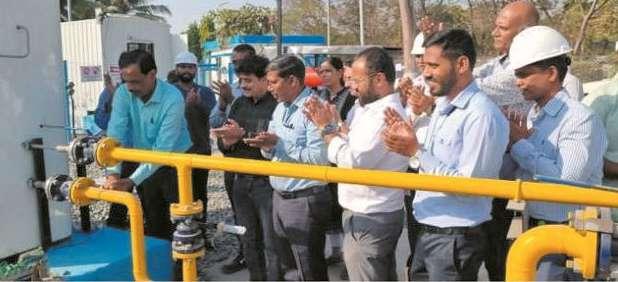
Petroleum and Natural Gas Regulatory Board (PNGRB), the regulatory body has given approval for 5% vol./vol. blending of green hydrogen with PNG to start with and the blending level would be scaled phase wise to reach 20%. Green hydrogen when blended with natural gas reduces CO2 emissions keeping net heating content same. This feat is achieved only by few select countries like UK, Germany, and Australia etc. This would bring India at the centre stage of the global hydrogen economy. India would not only reduce its hydrocarbon import bill significantly but can also bring forex ashore by being a green hydrogen and green chemicals exporter to the world.
PRESIDENT MURMU TO LAUNCH 1,000 MW SOLAR POWER PROJECT IN RAJASTHAN
The President of India, Smt Droupadi Murmu will visit Rajasthan from January 3 to 4, 2023.

The President will inaugurate Samvidhan Udyan at Raj Bhavan, Jaipur. On the occasion, she will also virtually inaugurate the Transmission System for Solar Energy Zones in Rajasthan and lay the foundation stone for 1000 MW Bikaner Solar Power Project. Subsequently, at Raj Bhavan, Jaipur, she will meet the members of ‘Particularly Vulnerable Tribal Groups’ Communities of Rajasthan. On the same evening, at Mount Abu, the President will grace the launch of a National Campaign on ‘RISE-Rising India through Spiritual Empowerment’, organized by Brahma Kumaris. She will also virtually inaugurate the Brahma Kumaris Silence Retreat Centre, Secunderabad, Telangana and lay the foundation stone for Brahmma Kumaris’ Auditorium and Spiritual Art Gallery at Indore, Madhya Pradesh.
The President will grace the inauguration of 18th National Jamboree of the Bharat Scouts and Guides at Pali, Rajasthan.
www.EQMagPro.com 51 EQ DECEMBER 2022
INDIA
Source: PTI
DELHI CAN ACHIEVE 100% RENEWABLES BY 2050
In a first-of-its-kind research, the study speaks to the technical feasibility and economic viability of 100 per cent renewable energy systems for a global megacity like Delhi within the northern Indian grid region. According to the study, batteries, prosumers and utility scale solar meet most of the demand in Delhi by 2050 as fossil fuels are phased out by then. The energy system taken into consideration includes the power, heat, transport and desalination sectors. Given Delhi’s limitations in terms of land availability, it continues to get its power from the northern region, which comprises eight states. It is expected that these states — Jammu and Kashmir (including Ladakh), Himachal Pradesh, Punjab and Chandigarh, Uttarakhand, Haryana, Delhi, Rajasthan and Uttar Pradesh are interconnected with optimised transmission networks.
Delhi’s power demands shot up to over 7GW in July 2022. Further it is expected that the demand will go up from 2,000 TWh in 2030 to around 4.400 TWh by 2050. The adjoining states emerge as new exporters of low-cost renewable electricity which can economically boost the states and also create much needed jobs. A recent announcement by the Delhi Pollution Control Board indicated that starting January 1, no coal will be permitted for use in 2023 although this does not cover thermal power plants. This was mainly with the intention to curb air pollution. The Delhi government also recently announced its intention to become the rooftop capital for the country by 2030 and achieve 50 per cent solar rooftops towards this.
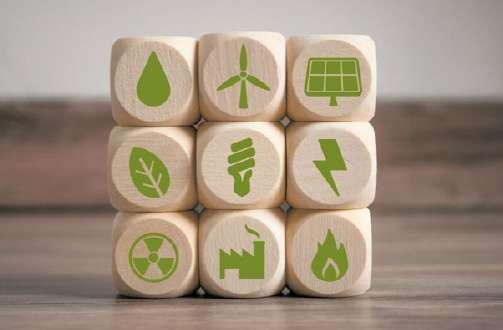
Previous studies have considered urban energy systems for megacities such as Beijing, Vancouver, Cape Town, and Helsinki but remain limited in the details. Urbanisation has been on the rise and it is expected that half the world’s population will reside in cities by 2050. According to UN Habitat, cities consume 78 per cent of the world’s energy and produce more than 60 per cent of greenhouse gas emissions.
While this is encouraging and in the right direction, our study shows that the government needs to be more ambitious given the potential and the co-benefits in terms of reduced costs, GHG emissions, reduced air pollution that the capital has been grappling with for over a decade and a higher number of jobs. This is the time for transformative change and Delhi has the opportunity to drive the energy transition across North India, said Manish Ram, one of the authors of the study.
Cities are already facing the heat of locked-in climate impacts, faced with an increased urban growth and resource challenge, cities would need to be at the forefront of accelerated climate action. Data-driven climate action plans provide a strategic basis for cities to develop roadmaps to holistically mainstream climate action in long-term economic and urban planning, said Shruti Narayan, Regional Director, C40.

INDIA’S ELECTRICITY CONSUMPTION GROWS 11% TO 121.19


BN UNITS
IN DECEMBER
India’s power consumption logged a double-digit growth of over 11 per cent to 121.19 billion units in December 2022 compared to the year-ago period, according to government data.
The robust growth of power consumption indicates sustained momentum of economic activities in December. Experts say power consumption and demand will further increase in January due to use of heating appliances, especially in the northern parts of the country, and further improvement in economic activities. In December 2021, power consumption stood at 109.17 billion units (BU), higher than the 105.62 BU in the same month of 2020, the data showed. The peak power demand met, which is the highest supply
in a day, rose to 205.03 gigawatt (GW) in December 2022. The peak power supply stood at 183.24 GW December 2021 and 182.78 GW in December 2020. The peak power demand met was 170.49 GW in the pre-pandemic December 2019. Electricity consumption in December 2019 stood at 101.08 BU.
52 EQ DECEMBER 2022 www.EQMagPro.com INDIA
A recently published article in the journal Renewable Energy makes a case for Delhi to transition away from fossil fuels by as early as 2050.
Source: PTI Source: PTI
L&T EYES NEW AREAS SUCH AS GREEN ENERGY, DATA CENTRES,
EDUTECH
Technology will be a key differentiator and the company should adopt tech-driven solutions to succeed, L&T CEO and MD SN Subrahmanyan said in his new year address to employees.


Engineering and infrastructure conglomerate Larsen & Toubro (L&T) needs to focus on areas such as green energy, data centres and edutech, which are relatively new to the group, to remain competitive and relevant. Technology will be a key differentiator and the company should adopt tech-driven solutions to succeed, L&T CEO and MD SN Subrahmanyan said in his new year address to employees.
We need to remain competitive and relevant in the emerging business landscape. While we are well attuned to identify and chase opportunities in our core areas, we need to be sharp and smart in areas that are relatively new to us like green energy, data centres, edutech and SuFin,” he said in a town hall. “These businesses will stretch us immediately but have an immense future and we need to pursue the same with vigour,” he added.
L&T is betting big on green energy and had earlier announced plans to invest up to $2.5 billion in the next 3-4 years to start with, across green hydrogen, solar and wind projects. The Mumbai-based company’s building and factories division had won several orders to set up data centres, while it already has a presence in edutech through L&T Edutech. SuFin is an e-commerce platform for B2B industrial products and services. Stating that the future is bright and “great execution” should be the aim, Subrahmanyan said that technology would remain a key differentiator.
“
So, the more we embrace and adopt tech-driven solutions and processes, the easier it will be to succeed. Digital technology brings in data and enables transparency and objectivity in decision making,” he added. On the Environmental, Social and Governance (ESG) front, the company is integrating its goals with our business targets and intends to achieve water neutrality by 2035 and carbon neutrality by 2040. “We cumulatively saved 150 million Kwh of energy, which is equivalent to powering 70,000 homes in a year and avoided emissions of 47,000 tonne CO2 equivalent in 2022, which is equivalent to planting five lakh trees. On the social dimension, we have touched 1.13 million lives through our initiatives on water and sanitation, education, health, and skill building and the target is to touch 1.5 million lives by FY26,” he added. According to Subrahmanyan, at L&T, some of the company’s key projects are led by women, even as traditionally the infrastructure and manufacturing space has witnessed lower participation by women. While talent acquisition is important, retaining good talent is even more critical by creating an enabling environment, he added.
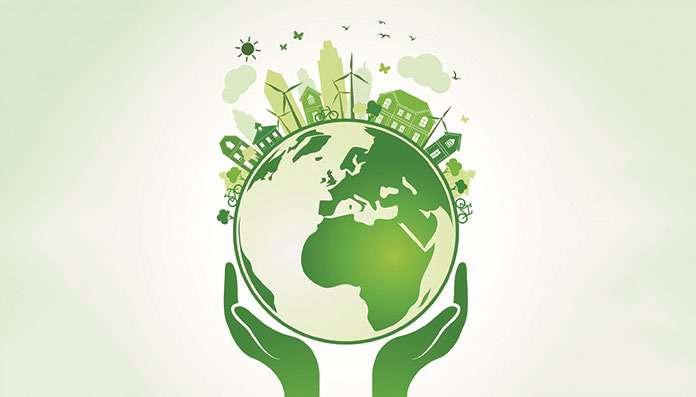 Source: PTI
Source: PTI
INDIA
TATA POWER ANNOUNCES RS 6000 CRORE
INVESTMENT IN ODISHA
Tata Power CEO and MD Praveer Sinha announced a Rs 6,000 crore capital investment by the company in Odisha. Speaking at the Make in Odisha Conclave here, Sinha said the four power discoms of Odisha, where Tata Power has a majority stake, are committed to Rs 6,000 crore capex investment in the next five years.


Sinha said the company will also set up 1,000 electric vehicle (EV) charging points, 1,00,000 solar pumps, microgrids, rooftop and floating solar plants in the next five years. He welcomed the Odisha government’s Renewable Energy Policy 2022 unveiled at the Make In Odisha Conclave here. The Tata Power CEO said the company has been engaged in power distribution across Odisha and is com mitted to ensure ease-of-doing business through quality power supply. “Tata Power is committed to ensure ‘Udyog Ru Pragati’ (progress through entrepreneurship) by offer ing high-quality and affordable power supply to enable a conducive environment for industrial develop ment. Our clean and green energy products and solutions in e-mobility, decentralised generation, agriculture, and demand side management will further ensure an all-round sustainable development of the state,” Sinha said. He said Tata Power is also working with Bhubaneswar Smart City Limited (BSCL) in deploying charging infrastructure at multi-level car parking lots and public utilities like hospitals, universities, malls, and at im
portant city hubs. The company is also in early stages to explore the development of green hydrogen hubs in the Paradeep region to meet industrial demands, he said, adding that Tata Power is also working towards the solarization of the agriculture sector in association with the state government. The company has already installed over 700 solar pumps in addition to 1,200 dual pump for community drinking application across the state. It has planned to install 30,000 solar pumps over the next five years, he said. Welcoming the state’s new Renewable Energy Policy 2022, Sinha said the incentives provisions like electricity duty waiver, wheeling charge waiver, cross subsidy surcharge waiver, state transmission utility charge waiver are very encouraging. He said Tata Power is working towards the electrification of remote villages by setting up microgrids. A technical feasibility study has been carried out in several villages in the Mayurbhanj District to set up microgrids for transformation of the rural/ tribal economy.
Source: PTI
INDIAN ENERGY EXCHANGE FORMS SUBSIDIARY TO EXPLORE
BUSINESS IN CARBON MARKET
Energy exchange platform Indian Energy Exchange said it has incorporated a subsidiary to explore business opportunities in the voluntary carbon market.
The wholly-owned subsidiary company is named International Carbon Exchange Private Limited (ICX). According to a statement by IEX, the new entity will enable participants to buy and sell voluntary carbon credits at competitive prices through its platform and facilitate the reduction of global Greenhouse Gas emissions by 45 per cent by 2030 to get on track to limit global warming to 1.5 degrees. The recently concluded COP27 reiterated the need to ramp-down GHG emissions. India had set a target of Net Zero emissions by 2070.
With our earlier diversification initiative, Indian Gas Exchange, transforming the Gas market in the country, we continue to sustainably transition India’s energy market through efficient and asset-light businesses. Establishing a transparent and reliable carbon trading platform is an important step towards achieving global as well as national sustainability aspirations,” said SN Goel, Chairman and Managing Director of IEX.
Additionally, ICX will facilitate corporates to meet their climate commitments goals by providing a robust market signal for attracting further investments in sustainable projects and help corporates to allocate capex (capital expenditure) towards energy transition in the most optimum manner. As per industry estimates, the annual demand for voluntary carbon credit globally is expected to reach around 1.5 gigatons, with India contributing around 200 million tonnes by 2030, IEX said. Voluntary carbon markets are markets where carbon credits are purchased, usually by organizations, for voluntary use rather than to comply with legally binding emissions reduction obligations. Voluntary carbon markets are growing, driven in part by demand from businesses looking to ‘offset’ their emissions.
Source: PTI
54 EQ DECEMBER 2022 www.EQMagPro.com
BUSINESS & FINANCE
WAFER AND CELL PRICES DROPPED SIMULTANEOUSLY UNDER SUBVERSION OF POLYSILICON PRICES

POLYSILICON MODULES
Polysilicon prices had finally welcomed a small reduction this week, where mono-Si compound feedings and mono-Si dense materials were respectively concluded at RMB 303/kg and RMB 298/kg under an approximate drop of 1.62-2.3%. With the end of the month approaching, the market has started negotiating for polysilicon orders of December, and polysilicon businesses have been perceiving an amplified degree of pressure during negotiation due to the constantly dropping wafer prices seen recently, where polysilicon orders that were signed this week had seen an apparent reduction in concluded prices. Polysilicon businesses are currently maintaining a higher utilization, though the market is now almost out of inventory. As the subversion of polysilicon prices officially arrives, prices are expected to drop alongside the increment of output.
WAFERS CELLS
Wafer prices continued to drop this week, where M10 and G12 were respectively concluded at a mainstream price of RMB 7.1/ pc and RMB 9.3/pc under a gradually expanding reduction to 2.74-4.12%. The two leading wafer businesses had successively lowered their list prices for December, where LONGi dropped 1.4% and 1.6% compared to the quotations last time, while Zhonghuan had lowered its 182 P-type 150um wafers from RMB 7.38/pc in the beginning of the month to RMB 7.05/ pc, as well as from RMB 9.73/pc to RMB 9.30/pc for the 210 P-type 150um wafers. An average price reduction of roughly 4.5% was seen among various sized wafers. Statistics show that approximately 36.1GW of wafers was produced domestically in November under a MoM increase of 7.76%. Leading wafer businesses, due to the current inventory level, have been successively lowering their priced to get rid of inventory, which prompted second and third tier businesses from the downstream sector to follow with the reduction, where some businesses have started planning to decrease their operating rate in order to bring down the level of inventory. The excess supply status will persist within the short term, and there will still be room for wafer price drop.
Cell prices had slightly loosened this week, and conclusions of high-price transactions were relatively difficult. Mono-Si M6, M10, and G12 cells were respectively concluded at a mainstream price of roughly RMB 1.29/W, RMB 1.34/W, and RMB 1.33/W this week under a reduction of 0.74-1.53%. Due to the incessant drop of upstream wafer prices, cell prices were unable to maintain at a high level this week, where mono-Si M6 and below cells had endured a relatively evident degree of decrement, whereas the large-sized cell market, thanks to a stronger level of demand, did not drop all that much. Order prosperity had persisted this week, with the downstream sector having yet to slow down in procurement, and the December orders of a segment of first-tier cell businesses have been fully signed. The declination of cell prices may not last under the tight provision of large-sized cells, and prices may stabilize subsequently.
Module prices continued to stabilize this week, where mono-Si 166 modules were concluded at approximately RMB 1.91/W, while 182 and 210 mono-Si single-sided modules were respectively concluded at RMB 1.97/W, where 182 and 210 bifacial double-glass mono-Si PERC modules were respectively concluded at RMB 2/W. This week’s module prices continued to level to that of last week, where a loosening was seen in the quotations of some businesses, and 440-450W modules were constantly approaching RMB 1.9/W in concluded prices, while large-sized module quotations below RMB 2/W were also steadily rising. In terms of domestic installations, Northern China is seeing a decelerated progress among projects due to the weather and pandemic, while the rush of installations among projects from Southern China has constituted a certain level of support towards module demand. The upstream industry chain’s activation of price decrement recently may trigger a reduction in module prices, and further stimulate demand for end installations. N-type modules had turned sturdy in quotations this week at RMB 2.16-2.2/W. In terms of auxiliary materials, glass prices had maintained sturdiness this week on the weaker end, where 3.2mm and 2.0mm glasses sat at a respective mainstream price of RMB 28/㎡ and roughly RMB 21.5/㎡. Overall demand has slightly subsided due to the attainment of production from previously ignited production lines, as well as the continuous increment of ignition plans for new production lines, and the reduction of partial inventory in finished products from module makers. Glass inventory has now slowed down in depletion, with a small degree of bargaining room seen for partial transactions.
www.EQMagPro.com 55 EQ DECEMBER 2022
Source: energytrend
BUSINESS & FINANCE
PARTNERS GROUP AG TO INVEST $300 MILLION IN SUNSURE ENERGY FOR MAJORITY STAKE
Partners Group AG, a Switzerland-based
(PE)
two people aware of the development said.
is
The private equity firm plans to grow Sunsure, one of India’s largest solar rooftop engineering, procurement and construction (EPC) companies, as a green energy platform, on the lines of how Actis Llp developed renewable energy platforms Sprng Energy and Ostro Energy. Partners Group, which has around $131 billion of assets under management globally, has its India office in Mumbai. It is a key investor in logistics firm Ecom Express Pvt. Ltd. “Partners Group is looking to invest $300 million in Sunsure Energy,” said one of the two people cited above requesting anonymity. Some of the other clean energy platforms in India backed by private equity investors include Actis Llp’s BluPine Energy, KKR’s Virescent Infrastructure, European alternative asset manager EQT and Singapore’s state investment firm Temasek Holdings Pte.’s O2 Power. A Partners Group spokesperson, in an emailed response, said, “We have no comment on this.” Sunsure Energy founder and chief executive officer Shashank Sharma did not respond to phone calls or to text messages. Founded in 2014, Sunsure focuses on large-scale rooftop and open access solar plants that supply electricity to the commercial and industrial (C&I) segment. Open access allows large users of electricity to buy power from the open market, instead of depending on a more expensive grid. These projects are generally insulated from risks such as power procurement curtailment and tariff-shopping by discoms. Also, India has set up a 40 gigawatt (GW) solar rooftop target, with the overall investment in the renewable energy sector expected to the tune of around ₹30 trillion by 2030. Moody’s Investors Service, in a report, said, “In India, renewables projects (solar PV and onshore wind) have already achieved grid parity, where generation costs can match coal-fired power over the project lifetime. Government policies are further encouraging renewables projects by giving them priority in power dispatch, reducing demand risk.” Some of the marquee measures taken by the government to promote domestic renewable energy include imposing basic customs duty (BCD) of 40% on solar modules and 25% on cells with effect

from 1 April, ₹24,000 crore production-linked incentive (PLI) scheme for solar photovoltaic (PV) modules, and domestic content requirement in ministry of new and renewable energy schemes. Also, being on the approved list of solar PV models and module manufacturers (ALMM) is mandatory for a manufacturers’ equipment to be sourced for government-supported schemes and projects from where discoms procure electricity. The National Green Hydrogen Mission targeting fertilizers, refineries and city gas sectors is also expected to be a gamechanger for India. “In India, renewables‘ priority in dispatch will lead to a further decline in coal power utilization. Specifically, we expect coal power utilization to decline from 56% over the last three years to below 50% if the country meets its renewables capacity addition targets of adding 500GW by fiscal 2030,” the Moody’s report added. India has an installed renewable energy capacity of 163GW, with green energy projects recording a foreign direct investment of $78 billion. India’s green energy deal space has also been active. Mint reported earlier that Canada Pension Plan Investment Board-backed ReNew Energy Global Plc is look ing to sell 1GW of operational clean energy capacity; firm BP Plc, Norway’s state-run electricity firm Statkraft, and New York-based I Squared Capital are in the fray to buy Continuum Green Energy (India) Pvt. Ltd, and Singapore’s Sembcorp Industries Ltd is buying US private equity firm Global Infrastructure Partners’ (GIP) clean energy platform Vector Green Energy. Also, Actis Llp’s BluPine Energy acquired 404 megawatt (MW) solar power assets of Kolkata-based Atha Group. Global investors’ interest in India’s clean energy space is sustained and growing, given the Union government’s focus on the unfolding energy transition, the largest such exercise anywhere in the world. Prime Minister Narendra Modi at the G20 summit in Indonesia said that India is on track to achieve its target of generating 50% of its electricity from renewable sources by 2030. Also, global investors are enthused by India’s Long-Term Low Emission Development Strategy that was submitted to the United Nations Framework Convention on Climate Change (UNFCCC) at COP 27; wherein renewable energy, emobility, ethanol blended fuels, and green hydrogen were announced as an alternate energy source.
Source: PTI
56 EQ DECEMBER 2022 www.EQMagPro.com
private equity
firm,
planning to invest $300 million in leading rooftop solar firm Sunsure Energy for a majority stake,
BUSINESS & FINANCE
INDIAN POWER REGULATOR RETAINS PRICE CAP AT ELECTRICITY EXCHANGES


India’s power regulator retained a price cap of 12 rupees ($0.1450) per unit on electricity traded on its spot power exchanges ahead of expected record energy demand in the coming summer months.

The Central Electricity Regulatory Commission (CERC) issued the order for extended retention of the ceiling “until further orders”, citing consumer interests. The move could effectively keep costlier imported coal and gas-based power generation out of the spot market. The CERC had lowered the price ceiling on power exchanges in April, from 20 rupees a unit, in light of desperate buying by state electricity companies to meet surging summer demand. The order was extended twice and was to expire on Dec. 31. The Indian Energy Exchange and unlisted PXIL are the two main power exchanges in India. “Energy requirement and peak demand remained higher in 2022-23 and the trend is likely to continue in the coming months,” the CERC order said, adding that peak hour demand for 2023-24 is projected to be 230 GW, against 215 GW so far in 2022-23. Industry sources expect the cap to remain in place indefinitely because there will be a separate market segment without a price cap. That new segment on the country’s power markets would include costlier electricity from imported gas and coal-based power stations.
TATA POWER RAISES RS 1,000
CRORE
THROUGH NON-CONVERTIBLE DEBENTURES
Tata Power said it has raised Rs 1,000 crore through the issuance of non-convertible debentures on a private placement basis. In a regulatory filing, the company said it has allotted 10,000 unsecured, redeemable, taxable, listed, rated, NonConvertible Debentures (NCDs) worth Rs 1,000 crore, on private placement basis. The maturity of Series I NCDs worth Rs 500 crore is scheduled on January 8, 2030 while the Series II NCDs worth Rs 500 crore would mature on December 29, 2032, it added.
PETRONAS, SEMBCORP, JSW NEO TO VIE FOR CONTINUUM
Petronas, Sembcorp Industries, and JSW Neo Energy are separately considering acquiring
in a potential deal that may have an enterprise value of $1.5 billion, two people aware of the development said.
The companies may submit non-binding bids next month for the deal, which is expected to have an equity value of around $600 million, the people said, requesting anonymity. As reported by Mint in November, others in the fray are oil company BP Plc, Norway’s state-run electricity firm Statkraft, and New York-based I Squared Capital. The sale process, managed by Citibank and Deutsche Bank, may involve a 100% stake sale, in
cluding the sale of US investment bank Morgan Stanley’s 83% stake in the clean energy platform founded by Arvind Bansal and Vikash Saraf in 2009.
www.EQMagPro.com 57 EQ DECEMBER 2022
The maturity of Series I NCDs worth Rs 500 crore is scheduled on January 8, 2030 while the Series II NCDs worth Rs 500 crore would mature on December 29, 2032
Continuum Green Energy (India) Pvt. Ltd
Source: Reuters
Source: PTI
BUSINESS & FINANCE
Source: livemint
RS 10,000 CRORE INVESTMENT IN PIPELINE FOR ANDAMAN & NICOBAR:

MINISTER
The government has planned a transhipment hub, a township and a diesel/solar power plant and a greenfield international airport in the Great Nicobar Island
Union Minister of State for Fisheries, Animal Husbandry, Dairying L Murugan said that the Centre has invested Rs 30,000 crore in the last eight years in the Andaman and Nicobar and investments of more than Rs 10,000 crore are in the pipeline. While addressing a press conference, the minister said the government has planned to establish a transhipment hub, a township and a diesel/solar power plant and a greenfield international airport under a mega infrastructure project on the Great Nicobar Island. Murugan said that this will create major employment opportunities for the local youths and enhance the economy of this place. Meanwhile, Murugan also showed satisfaction with the implementation of the central government’s projects by the local authority.
PUNJAB SANCTIONS RS 60 CRORE FOR SOLAR POWER ENERGY SYSTEM
Punjab govt has sanctioned Rs 60.50 cr to install solar power energy system for rural piped water supply schemes in the state, saving an electricity expenditure of Rs 8-9 cr per year, a minister said
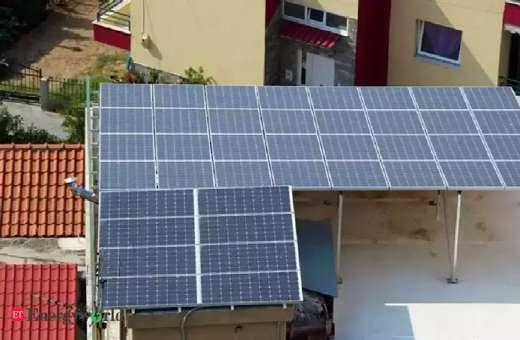
he Punjab government has sanctioned Rs 60.50 crore to install solar power energy system for rural piped water supply schemes in the state, saving an electricity expenditure of Rs 8-9 crore per year, a minister said. Under this project, the solar power energy plants, based on net metering, would be installed at 970 rural water supply schemes, covering 1,508 villages with a cumulative capacity of 8.698 MW.
Water Supply and Sanitation Minister Bram Shanker Jimpa said the government is working to provide basic facilities to the people at their doorsteps. He said this project aims to ensure the financial sustainability of water supply schemes and successful operation and management of rural water supply schemes by gram panchayat water supply committees by reducing the burden of electricity charges. Additionally, this will also lead to an increase in the usage of clean energy and environment sustainability.
LUTHRA ACTS ON FINANCIAL ASSISTANCE SANCTION TO SJVN GREEN ENERGY FOR SOLAR PV POWER PROJECT AT BIKANER
₹4444.71 crore has been sanctioned to SJVN for the project.
JVN Green Energy Limited have been sanctioned financial assistance of ₹4444.71 crore for the purpose of development of 1000 MW AC (1400 MWp DC) Solar PV Power Project being implemented at Bikaner, Rajasthan. Luthra and Luthra Law Offices India acted as Lenders’ Legal Counsel in this transaction. The transaction team consisted of Girish Rawat (Partner), Himanshi Bhadoria (Associate), Abhinav Singh (Associate), and Ishita Bajaj (Associate).
58 EQ DECEMBER 2022 www.EQMagPro.com
T S
Source: PTI
Source: PTI
BUSINESS & FINANCE
Source: PTI
INDIA PLANS $2 BILLION INCENTIVE FOR GREEN HYDROGEN INDUSTRY, SAYS REPORT
The 180-billion-rupee ($2.2 billion) incentive aims to reduce the production cost of green hydrogen by a fifth over the next five years, said a senior government official India is planning a $2 billion incentive programme for the green hydrogen industry, three sources told Reuters, in a bid to cut emissions and become a major export player in the field. The 180-billion-rupee ($2.2 billion) incentive aims to reduce the production cost of green hydrogen by a fifth over the next five years, said a senior government official and an industry manager working in renewable energy. It would do this in part by increasing the scale of the industry, they said. The current cost in India is 300 rupees to 400 rupees per kg, said the manager. The United States and the European Union have already approved incentives worth billions of dollars for green hydrogen projects. Hydrogen can be used as a fuel. It is made by splitting water with an electrical process, electrolysis. If the devices that do that, electrolysers, are powered by renewable energy, the product is called green hydrogen, a fuel free of greenhouse emissions. The Indian aid could be announced in the Feb. 1 budget for the fiscal year beginning April 1, said the government official. All sources declined to be named discussing a budget proposal. The ministries of renewable energy and finance did not respond to queries sent by Reuters. Indian companies such as Reliance Industries, Indian Oil, NTPC, Adani Enterprises, JSW Energy and Acme Solar have big plans on green hydrogen. Adani, led by the world’s third-richest person, Gautam Adani, said in June that it and France’s TotalEnergies would jointly create the “world’s largest green hydrogen ecosystem”.


GREEN AMMONIA, TOO
The Indian government expects industry to invest 8 trillion rupees in green hydrogen and its derivative green ammonia by 2030, said the industry manager and another government official. Green ammonia is made by combining nitrogen with hydrogen using renewable energy sources; it can be used by the fertiliser industry or as a fuel or convenient means of transporting hydrogen. The green hydrogen proposal is likely to be called “Strategic Intervention for Green Hydrogen Transition (SIGHT)” and will be split into 45 billion rupees for electrolyser manufacturing for five years and the 135 billion rupees for green hydrogen and green ammonia production for three years, the manager and second official said. The incentive for making green hydrogen is likely to be 50 rupees per kg for three years, they said. India aims to sell 70% of the production to countries such as South Korea, Japan and in the European Union, an industry official said, adding that derivatives, including green ammonia, had an equally strong demand. The government is estimating global demand for green hydrogen will exceed 100 million tonnes by 2030, from just under 75 million tonnes now, according to other industry sources. In February the government announced plans for India to make 5 million tonnes of green hydrogen annually by 2030, a figure that the first government official said could be doubled, depending on international demand. The government also plans for the country to achieve electrolyser manufacturing capacity of 15 gigawatts in phases by 2030. That would be almost 10 times current global capacity. U.S.-based Ohmium International has commissioned India’s first green-hydrogen factory in Bengaluru. Reliance Industries, Larsen & Toubro, Greenko and H2e Power last year announced plans to build gigawatt-scale factories. Indian oil refineries and fertiliser and steel plants annually use 5 million tonnes of hydrogen made from natural gas, called grey hydrogen. The process produces carbon dioxide. Higher gas prices have pushed the Indian grey hydrogen price to around 200 rupees per kg from 130 rupees a year ago.
www.EQMagPro.com 59 EQ DECEMBER 2022
Source: Reuters
BUSINESS & FINANCE
DELHI TRANSPORT CORPORATION SIGNS MOU WITH TATA MOTORS’

ARM FOR OPERATING 1,500 E-BUSES



Tccording to the agreement, TML CV Mobility Solutions will supply, operate and maintain 1,500 units of 12-metre low-floor airconditioned electric buses for a period of 12 years. Tata Starbus EV is an indigenously de veloped vehicle with superior design and the best fea tures for a sustainable and comfortable commute, according to a statement from Tata Motors. In the statement of Tata Motors released recently, Shilpa Shinde, IAS, Managing Director, Delhi Transport Corporation, said, “We are pleased to have signed an agreement for the largest order of 1,500 electric buses in Delhi. This is a significant step towards embracing electric mobility in the capital city. The induction of zero-emission, noise-free buses will greatly help in improving the city’s air quality.”
Asim Kumar Mukhopadhyay, Chairman, TML CV Mobility Solutions, “It is indeed a historic occasion for us as we sign a definitive agreement for the country’s largest electric bus order. Our relationship with DTC, which stands strong for over a decade, is based on the foundation of mutual trust and cooperation and this order will further strengthen it.” The company said Tata Motors’ latest research and development facilities have steadily worked to engineer new mobility solutions powered by alternate fuel technology, including battery-electric, hybrid, compressed natural gas (CNG), liquefied natural gas (LNG) and hydrogen fuel cell technology. Till date, Tata Motors has supplied more than 730 electric buses across multiple cities in India, which have cumulatively clocked more than 55 million km, with an uptime of over 95 per cent.
60 EQ DECEMBER 2022 www.EQMagPro.com
India’s largest commercial vehicle manufacturer Tata Motors said Delhi Transport Corporation (DTC) has signed a definitive agreement with its fullyowned subsidiary – TML CV Mobility Solutions – for the operation of 1,500 electric buses in New Delhi.
Source: PTI
ELECTRIC VEHICLE
Source: PTI
TRANSITION OF INDIA’S
ENTIRE 2/3-WHEELER FLEET TO ELECTRIC NEEDS USD 285-BN
FINANCING: WEF
Published in collaboration with NITI Aayog, the World Economic Forum (WEF) paper said the last-mile and urban delivery fleets are leading the adoption of electric two-and three-wheelers in India and are likely the first segments to transition completely to electric. But driver-cum-owners are hesitant to make the transition to electric due to higher upfront cost of acquisition, lack of confidence in new technology, unassured reliability, and unestablished resale value, it added. Two-wheelers and three-wheelers account for over 80 per cent of vehicle sales in India and the adoption of electric vehicles has been steadily rising in the past few years. There are about 45 certified vehicle manufacturers of electric two-and three-wheelers in India in an otherwise consolidated auto market and the cumulative sales of these vehicles have reached an impressive 10 lakh units. However, this remains a small portion of the country’s total two-and three-wheeler fleet stock of 25 crore, leaving immense room for sustained growth. “Achieving 100 per cent electrification of India’s two- and threewheeler stock requires a capital allocation of approximately USD 285 billion,” the WEF said. Explaining the calculation, it said given India’s rising incomes and vehicle ownership, it has assumed the overall stock of two and three-wheelers to grow to 27 crore. Capital cost for its transition to electric is calculated based on an average two-wheeler vehicle cost of USD 1,000 (over Rs 81,000) for 26.4 crore two-wheelers and an average

three-wheeler cost of USD 3,500 (Rs 2.8 lakh) for 60 lakh three-wheelers (across vehicle categories, excluding e-rickshaws), bringing the overall capital cost to approximately USD 285 billion. Electric vehicle turnover rate and cost of infrastructure have not been taken into consideration – and will require additional financing, it added. Although electric vehicles (EVs) are costlier to purchase, their running cost is much lower. Gauged by the total cost of ownership, they are already being seen as preferable for ride-hailing and last-mile delivery fleets, which have high daily utilisation. These segments are leading the adoption of electric two and three-wheelers in India and are likely to be among the first segments to transition completely to electric. But for a rapid transition of fleets, capital flow to the ecosystem needs to grow multi-fold and opening large capital pools will require de-risking of the market through deeper collaboration between stakeholders and business model innovation, the WEF said. It also said a long-term policy roadmap is needed to attract greater investments. While purchase incentives by governments have been key drivers for the adoption of EVs, a policy roadmap for demand incentives beyond the current term of policies (usually up to 3-5 years) can help, the WEF said. While incentives will need to be phased out eventually, a roadmap with timelines for a gradual phaseout can help support new corporate investment decisions, it added. This can further be supported by an ambition for a combustion engine phaseout date for new two- and three-wheelers, the WEF said.
Source: PTI
www.EQMagPro.com 61 EQ DECEMBER 2022
ELECTRIC VEHICLE
The complete electrification of India’s entire fleet of two and three-wheelers, the largest in the world, will require financing to the tune of USD 285 billion (nearly Rs 23 lakh crore), according to a new white paper.
RUSTY BATTERIES COULD GREATLY IMPROVE GRID ENERGY STORAGE

AIron-air batteries have a “reversible rust” cycle that could store and discharge energy for far longer and at less cost than lithium-ion technology U.S. company is designing a large battery that it says could help decarbonize the nation’s power sector more cheaply than lithium-ion storage systems—and with domestic materials. The concept, known as the “iron-air battery,” has impressed U.S. experts. Unlike current lithium-ion batteries that require expensive materials mostly from other countries such as lithium, cobalt, nickel and graphite, the proposed battery stores electricity using widely available iron metal. It operates on what scientists call the principle of “reversible rusting.” The low cost and high availability of iron could allow iron-air batteries to store electricity for several days during periods of low solar and wind power generation. One such iron-air battery is being designed by Form Energy, a company based in Massachusetts that’s co-run by a former Tesla Inc. official. Although iron-air batteries were first studied in the early 1970s for applications such as electric vehicles, more recent research suggests that it may be a “leading contender” to expand the nation’s future supplies of green electric power for utilities, according to George Crabtree, director of the Joint Center for Energy Storage Research at Argonne National Laboratory. Lithium-ion batteries, which are used in cars and for utility-scale storage, discharge electric power for about four hours. The much larger iron-air battery can store and then discharge power for as long as 100 hours, giving utilities four days of electricity to bridge renewable power gaps that can occur in U.S. grids. Crabtree, a physicist, predicted that the iron-air battery would also help the U.S. decarbonize industrial operations and buttress the Defense Department’s plans to rely more on renewable energy. Crabtree pointed out that while U.S. researchers helped invent the lithium-ion battery in 1970, it took until 1991 to reach the market. Sony Group Corp., a Japanese company, was the first to sell it. After that, companies based in China took the lead, and they continue to dominate the world’s lithium-ion battery market. Form Energy was born in 2017. It emerged from a consolidation of two smaller U.S. energy storage companies, one of which was led by Mateo Jaramillo, a former executive at Tesla. The co-founders shared a vision to reshape the global electric system by creating a new class of low-cost multiday storage batteries. They began testing several different chemistries to make a competitive and domestically produced battery. They landed on the iron-air battery, which includes a slab of iron, a water-based electrolyte and a membrane that feeds a controlled stream of air into the battery. When discharging, the battery breathes in oxygen from the air and converts iron metal to rust. While charging, an electrical current converts the rust back to iron and the battery breathes out oxygen. Since its founding, the company has raised $832 million from investors, including Bill Gates’ Breakthrough Energy Ventures and ArcelorMittal SA, a Luxembourg-based multinational steel company. Since 2021, Form Energy has signed contracts to build battery storage facilities for two utilities. One is Georgia Power Co., the largest subsidiary of Southern Co. The other is Great River Energy, Minnesota’s second-largest electric utility, which supplies power to electric cooperatives. Form Energy is working with ArcelorMittal to develop iron materials that the steel company would supply to Form Energy. The battery company
declined to say when it would announce the construction of its first factory, or where it would be. “We’re not talking about that yet,” Jaramillo said in an interview. His company’s executive team includes Yet-Ming Chiang, its chief science officer and a materials expert who teaches at Massachusetts Institute of Technology. He holds over 100 U.S. patents. The initial storage battery, about the size of a home washer-and-drier combination, will be too big and heavy for cars, but it could replace lithium-ion batteries for utility-scale storage because it would be one-tenth the cost and its capacity will be much larger, according to Form Energy. Jaramillo graduated from Harvard University with an economics degree and later studied theology at Yale Divinity School. “It probably helped me in more ways than I could articulate,” he said of his religious studies. “It helped me stay grounded about what solutions look like in this world. There is nothing perfect.” Crabtree, of Argonne National Laboratory, says he’s impressed by Form Energy’s accomplishments so far. Compared with the 21-year effort by the U.S. to develop the lithium-ion battery, Form Energy may develop the iron-air battery in less than nine years. “It shows that it is possible to move quickly when it comes to climate change. That’s the critical answer,” Crabtree said.
62 EQ DECEMBER 2022 www.EQMagPro.com ENERGY STORAGE
Source: scientificamerican
LONGER DURATION ENERGY STORAGE

OVERVIEW
Low–carbon, longer duration energy storage (LDES) currently plays a relatively minor role on the UK energy system. However, as the electricity system decarbonises, the amount of LDES needed is likely to increase significantly to replace the storage traditionally provided by fossil fuels. The Government is currently supporting the demonstration and commercialisation of new LDES technologies. Examples include flow batteries, mechanical and thermal storage, and hydrogen. As the proportion of wind and solar generation on the electricity system grows, flexible types of generation (such as LDES), which can be scheduled to meet demand under low wind and dark conditions, will become increasingly important. Storage can also contribute to security of supply by meeting prolonged supply shortfalls, such as wind droughts, low annual wind speeds and power generator failures. In addition, LDES can provide a source of demand for the growing number of renewable plants, preventing costly constraints when the electricity networks are congested. Storage will need to be deployed throughout the UK, with certain technologies needing to be located in particular geographic areas that have suitable conditions, such as salt caverns and mountains. Many of these technologies are not well known to the public, with positive and negative perceptions of their safety starting to emerge. Current market arrangements do not adequately reward energy storage over longer
timeframes, particularly over seasons and years. The Government are reviewing electricity market arrangements for the GB power system, which will impact the potential business cases of LDES assets.
KEY MESSAGES
• There is a range of different energy storage technologies in development, which includes flow batteries, mechanical devices (such as pumped hydro, liquid air and compressed air), thermal storage, and hydrogen.
• Longer duration storage can support a future energy system with high proportions of renewable energy by providing flexible energy supply and demand, and increasing the resilience of energy networks.
• Increasing amounts of energy storage will be needed, but to deploy the technologies at scale will likely require further innovation, demonstration, better business cases, investment and Government support. Deployment will also depend on ongoing developments in energy markets and a better understanding and communication of the risks.
• The Government will implement a policy on longer duration energy storage by 2024.
 Source: PTI
Source: PTI
www.EQMagPro.com 63 EQ DECEMBER 2022 ENERGY STORAGE
The UK’s energy system relies on the storage of fossil fuels to manage variations in supply and demand over varying timescales. As these are replaced to meet the net zero emissions target, new types of low-carbon, longer duration energy storage will be needed to provide secure energy supplies. This POSTnote examines different low-carbon storage technologies, their role in addressing future system needs, issues relating to scaling-up the technologies and Government strategy.
GOVT’S $2-BILLION GREEN HYDROGEN INCENTIVE MAY FIRE UP RIL, GREENKO, ADANI PLANS

India is planning a $2 billion incentive programme for the green hydrogen industry, three sources told Reuters, in a bid to cut emissions and be come a major export player in the field. The 180-billion-rupee ($2.2 bil lion) incentive aims to reduce the production cost of green hydrogen by a fifth over the next five years, said a senior government official and an industry manager working in renewable energy. It would do this in part by increasing the scale of the industry, they said. The current cost in India is 300 rupees to 400 rupees per kg, said the manager. The United States and the European Union have already approved incentives worth billions of dollars for green hydrogen projects. Hydrogen can be used as a fuel. It is made by splitting water with an electrical process, electrolysis. If the devices that do that, electrolysers, are powered by renewable energy, the product is called green hydro gen, a fuel free of greenhouse emissions. The Indian aid could be announced in the Feb. 1 budget for the fiscal year beginning April 1, said the govern ment official. All sources declined to be named discussing a budget proposal. The ministries of renewable energy and finance did not respond to queries sent by Reuters. Indian companies such as Reliance Industries, Indian Oil, NTPC, Adani Enterprises, JSW Energy and Acme Solar have big plans on green hydrogen. Adani, led by the world’s third-richest person, Gautam Adani, said in June that it and France’s TotalEnergies would jointly create the “world’s largest green hydrogen ecosystem”.

GREEN AMMONIA, TOO
The Indian government expects industry to invest 8 trillion rupees in green hydrogen and its derivative green ammonia by 2030, said the industry manager and another government official. Green ammonia is made by combining nitrogen with hydrogen using renewable energy sources; it can be used by the fertiliser industry or as a fuel or convenient means of transporting hydrogen. The green hydrogen proposal is likely to be called “Strategic Intervention for Green Hydrogen Transition (SIGHT)” and will be split into 45 billion rupees for electrolyser manufacturing for five years and the 135 billion rupees for green hydrogen and green ammonia production for three years, the manager and second official said. The incentive for making green hydrogen is likely to be 50 rupees per kg for three years, they said. India aims to sell 70% of the production to countries such as South Korea, Japan and in the European Union, an industry official said, adding that derivatives, including green ammonia, had an equally strong demand. The government is estimating global demand for green hydrogen will exceed 100 million tonnes by 2030, from just under 75 million tonnes now, according to other industry sources. In February the government announced plans for India to make 5 million tonnes of green hydrogen annually by 2030, a figure that the first government official said could be doubled, depending on international demand. The government also plans for the country to achieve electrolyser manufacturing capacity of 15 gigawatts in phases by 2030. That would be almost 10 times current global capacity. U.S.-based Ohmium International has commissioned
India’s first green-hydrogen factory in Bengaluru. Reliance Industries, Larsen & Toubro, Greenko and H2e Power last year announced plans to build gigawatt-scale factories. Indian oil refineries and fertiliser and steel plants annually use 5 million tonnes of hydrogen made from natural gas, called grey hydrogen. The process produces carbon dioxide. Higher gas prices have pushed the Indian grey hydrogen price to around 200 rupees per kg from 130 rupees a year ago.
64 EQ DECEMBER 2022 www.EQMagPro.com HYDROGEN
PTI
The United States and the European Union have already approved incentives worth billions of dollars for green hydrogen projects. Source:
INDIA READIES $2.2 BILLION IN INCENTIVES FOR GREEN HYDROGEN
The Indian government could soon announce an incentive program worth $2.2 billion to help reduce the production of cost of green hydrogen.
According to Reuters, the incentive package could be part of next year’s budget scheduled to be tabled in the Sansad (India’s parliament) on 1 February. The incentive package is expected to enable manufacturers of electrolyzers to reduce the cost of green hydrogen production. According to Reuters, the current cost of production of green hydrogen is around Rs 300-400 ($3.60-4.80) per kilogram. The Indian government aims to reduce that by a fifth over the next five years. The global aspirational goal is to reduce this cost to less than $1 per kilogram by 2030. Oil refineries and fertilizer manufacturers are the leading consumers of hydrogen in India, representing an annual demand of 5 million tonnes. Currently, this hydrogen is produced either as a byproduct in the petroleum refining process or from natural gas. Both these processes generate greenhouse gas emissions. India lacks any significant reserves of natural gas, making it highly dependent on costly imports.
Over the last few months, the Indian government has been looking to push green hydrogen as an alternative to hydrogen produced from conventional process. It announced plans to introduce mandates for large industrial consumers to procure green hydrogen. The so called green hydrogen procurement obligation will likely cover oil refineries, fertilizer manufacturers, and steel producers. Such an obligation will take care of the demand, however, cheap supply of green hydrogen remains a key challenge. Ohmium International is currently the only manufacturer of electrolyzers in India. While the company has announced to increase production capacity its current capacity in nowhere near the impending demand.
A number of Indian and international companies have announced plans to establish electrolyzer manufacturing facilities. However, most of these plans are yet to reach the drawing board. Renewable project developers like ReNew Power and Acme have announced technology partnerships. Energy companies like Reliance have made acquisitions to get access to electrolyzer technology and plan to set up gigafactories. The government is also looking to develop India as a major export hub of green hydrogen for other Asian and European countries. Earlier this year, renewable energy project developer Greekno Energy Holdings signed an agreement with Singapore-based Keppel Infrastructure to supply green hydrogen starting 2025. Acme Solar, another private renewable energy company, has announced ambitious plans to set up green hydrogen and green ammonia production facilities to fulfill the demand of Indian and international markets. The company is looking to set up a 7 gigawatt renewable energy project in the southern state of Tamil Nadu to produce green ammonia. The company is also working on large-scale solar power projects in Oman to produce green hydrogen. The project is expected to produce 100,000 tonnes of green ammonia every year in the first phase. This will eventually increase to 1.2 million with 3.5 gigawatts of electrolyzer and 5 gigawatts (peak) of solar power capacity.

The incentive scheme is expected to be on similar to that implemented for solar module manufacturing. The scheme will offer incentives to companies that set up module manufacturing units with backward integration of up to polysilicon production.
Source: cleantechnica

INDIA TO LAUNCH HYDROGEN-POWERED TRAINS ON HERITAGE ROUTES BY DEC 2023: ASHWINI VAISHNAW
Envisioned on the lines of hydrogen trains running in China and Germany, Indian Railways plans to roll out hydrogen-powered trains on its narrow gauge heritage routes by December, turning them “completely green”. Currently, the railways are developing a prototype of a hydrogen fuel-based train at the Northern Railway workshop which will test-run on the Sonipat-Jind section in Haryana.
The heritage routes of Indian Railways, which primarily run on diesel include Darjeeling Himalayan Railway, Nilgiri Mountain Railway, Kalka Shimla Railway, Matheran Hill Railway, Kangra Valley, Bilmora Waghai and Marwar-Devgarh Madriya. All of these routes are narrow gauge.
The plan came after the minister announced last month, that the Indian Railways will roll out its first domestically designed and built hydrogen-powered train by December 2023. “We are designing and the design should be out anywhere by May or June,” Ashwini Vaishnaw told reporters during a visit to the southern city of Bengaluru. The newly-built hydrogen-powered trains will be called Vande Metro and will be manufactured in large numbers to replace the current set of trains that were manufactured in the 1950s and 1960s. The majority of the trains in India now are powered by diesel or electricity. The hydrogen-powered train will play a crucial role in reducing carbon emissions and achieving climate goals. Across the world, multiple stakeholders are showing interest in hydrogen-powered technology which can be developed into a sustainable transport alternative.
We will roll out the hydrogen trains on the heritage routes from December 2023. This will mean that these heritage routes will go completely green, said Union Minister for Railways Ashwini Vaishnaw.
Germany began operating hydrogen-powered trains in July of this year, making it the first nation in the world to do so. The manufacturing company describes the train as “a true alternative to diesel power,” and the estimated overall cost of the train is $86 million. The train can run 1000 km at a speed of 140kmph in one go and was being tested in Germany since 2018. China has also recently launched, Asia’s first hydrogen-powered train with a range of 600 km on a single tank.
www.EQMagPro.com 65 EQ DECEMBER 2022 HYDROGEN
GOVERNMENT’S DECISION TO REMOVE SOLAR FROM ‘PROJECT IMPORT’ MAY TURN BLESSING IN DISGUISE FOR HOME-GROWN MANUFACTURES

The government’s decision to remove solar from ‘project import’ benefits has kick-started a discussion. While some debate how this will impact and pace down the ongoing solar energy projects, many believe that this decision will accelerate the growth of the thriving domestic solar manufacturing industry in India.

India ranks 4th in the world in terms of solar power generation. As per the new report released by the energy think tank Ember, the Centre for Research on Energy and Clean Air and the Institute for Energy Economics and Financial Analysis, India has saved an amount of USD 4.2 billion in fuel costs through solar power generation in the first half of 2022. However, 90% of modules used in solar projects are imported from overseas manufacturers. While India is expanding its solar energy production, the dependence on solar hardware import may affect this momentum.
Mr. Vinay Thadani, Director, Grew Energy Pvt Ltd, said, “This decision by the government will provide much-needed backing to the domestic solar manufacturing industry. A rapidly growing sector, the solar manufacturing unit in India has always strived to fill the demand and supply gap by providing quality PV modules at competitive rates. The demand for domestic PV modules (hardware) will aid the sector’s growth, thereby encouraging new players to foray into the manufacturing sector. In synergy with the ‘Make in India’ ideology, this move will encourage solar project developers to team up home-grown companies, thereby accelerating industry growth. We hope to maximise this opportunity by the Indian government and strengthen the domestic manufacturing market.”
The domestic solar manufacturing industry is a budding industry committed to providing world-class solar hardware to meet the growing demand for solar energy. However, indigenous solar manufacturing companies face a massive challenge while competing with foreign manufacturers that offer PV modules at a much-subsidised rate, thereby hampering their growth. With this decision, the government has created avenues to reduce reliance on foreign hardware to meet the country’s energy needs.

66 EQ DECEMBER 2022 www.EQMagPro.com
RENEWABLE ENERGY
Global renewable energy capacity is expected to almost double in the next five years as the ongoing energy crisis is driving a sharp acceleration of installations of renewable power projects.
Global renewable power capacity is expected to grow by 2,400 gigawatts (GW) over the 2022-2027 period, which will allow it to overtake coal as the largest source of electricity generation by early 2025, the IEA said in the report “Renewables 2022” released. Renewables are set to account for over 90 per cent of global electricity expansion over the next five years, and will help keep alive the possibility of limiting global warming to 1.5 degrees Celsius, the agency said.


Renewables were already expanding quickly, but the global energy crisis has kicked them into an extraordinary new phase of even faster growth as countries seek to capitalize on their energy security benefits. The world is set to add as much renewable power in the next five years as it did in the previous 20 years,” IEA Executive Director Fatih Birol said.

The simultaneous advancement of onshore and offshore wind power has led to an all-time high in instantaneous wind power generation, for which TPC commented had exceeded 1GW for the first time on November 23rd, before arriving at 1.173GW on the 30th, which is an increase of more than 50% compared to the maximum instantaneous power generation last year at 0.7679GW. Power generation was stable on the 30th, and lasted more than 12 hours at more than 1GW as of 3 p.m..
TPC explained that the strengthened northeast monsoon had resulted in excellent power generation efficiency for wind turbines. Instantaneous power generation had surpassed 1GW at about 3 a.m. on November 30th, before climbing to an all-time high to 1.173GW at 5:15 a.m., which occupied roughly 5% of the overall load then. Among which, onshore and offshore wind power had gone up to 0.57GW and 0.603GW respectively. Offshore wind turbines are gradually becoming the main driver of wind power amidst successive operation. TPC’s wind power installations had arrived at a capacity of 1.41GW as of the end of October, which is more than a twofold growth compared to 0.682GW back in 2016.
TPC pointed out that a total of 21 wind turbines from the first phase of its offshore wind power project had all completed and connected to the grid last year, while the second phase had also initiated construction in the beginning of November, and is expected to generate 1 billion kWh of power each year after grid connection in 2025. Private businesses are also in full throttle for their wind power projects such as the Greater Changhua Offshore Wind Farm and the phase 1 of the Changfang Offshore Wind Farm. Including the 0.4037GW of development target from TPC’s in-house sites, Taiwan is expected to arrive at 5.6GW of offshore wind power capacity by 2025. TPC further pointed out that the company has been heavily engaged in the development of onshore wind power since 2001, and has now installed 168 wind turbines (total capacity of 0.29704GW), with locations ranging from Shimen of New Taipei City, to Hengchun of Pingtung, and coastal areas in the west, as well as Penghu and Kinmen. TPC is also actively actuating onshore wind farm sites in Yunlin, second phase of Taichung Port Wind Farm, and 4th phase of Chang Gong Wind Power Station, and is expected to accomplish 0.37GW of capacity development by 2025.
www.EQMagPro.com 67 EQ DECEMBER 2022
GLOBAL RENEWABLE ENERGY CAPACITY SET TO DOUBLE OVER NEXT 5 YEARS: IEA NORTHEAST MONSOON FACILITATES 1GW WIND POWER GENERATION FOR 12 CONSECUTIVE HOURS RENEWABLE ENERGY Source: energytrend
According to the report, the amount of renewable power capacity added in Europe in the 2022-2027 period is forecast to be twice as high as in the previous five-year period, driven by a combination of energy security concerns and climate ambitions.
RENEWABLE ENERGY
AFTER A BUMPY YEAR, RENEWABLE ENERGY LOOKS POISED FOR BOOM TIMES
The future has never been brighter for renewable energy, as some of the snags that kept wind and solar production from going full throttle this year seem poised to ease.
While site- and grid-permitting delays, inflation and supplychain bottlenecks beset the creation and adoption of renewable energy this past year and will pose lingering hurdles, the global outlook is the most bullish yet for companies building wind and solar farms and those buying the power. Net additions of renewableelectricity rose to an estimated 352 gigawatts of capacity in 2022, up from 286 GW in the previous year, according to the International Energy Agency. The IEA boosted its five-year capacity expansion forecast by nearly 30% this year, its largest-ever annual increase, buoyed by supportive policies and a renewed appreciation for energy security. What is more, by early 2025, the IEA said it expects renewable energy to be the largest source of electricity in the global power mix, surpassing coal. Driving the IEA’s rosier outlook: First is the global energy crisis caused by Russia’s invasion of Ukraine that led European nations to try to build more renewable energy capacity within their borders to improve their energy security and replace Russian fuel imports. And second, more supportive renewable policies in Europe, the U.S., India and China. Here is a look back at the solar and wind installations, the power-purchase agreements and other advances in renewable energy this past year, as well as expectations for 2023 and the years ahead.
SOLAR
Utility-scale solar remains the cheapest option for generating power. And with commodity costs pushing up the price ofelectricity, solar will be on pace to overtake coal as the largest share of electricity capacity globally by 2027, the IEA said, and natural gas by 2026. Efforts are under way in India and the U.S. to make more solar components within their own borders, but the IEA said China will still be the dominant player with $90 billion in investments from 2022 to 2027. Even so, investment in solar manufacturing in India and the U.S. will reach nearly $25 billion combinedover 2022 to 2027, a sevenfold increase compared with the past five years, the IEA said. The U.S. solar industry added capacity infits and starts this year because of trade impasses. A dispute over tariffs between the U.S. and China significantly slowed solar installations in America, leading President Joe Biden to lessen the impact somewhat by signing an executive order in June that put additional tariffs on pause for two years. Shipments and equipment orders resumed, but supply remained constrained and pricing was higher than usual. Separately in June, the enforcement of the Uyghur Forced Labor Prevention Act further hit supply and caused more equipment to be detained at ports. The trade issues played a significant role in driving downthe installation of new U.S. solar capacity to around 15.7 gigawatts in 2022 from 24.1 gigawatts in 2021, according to Wood Mackenzie. Still, the energy-research firm expects growth to recover next year.
Wood Mackenzie analyst Michelle Davis points to the August passage of the climate-and-spending bill called the Inflation Reduction Act as a boon for the solar industry, though she said the benefits of the law probably won’t be seen un til at least 2024 because of current supply con straints. But those supply difficulties should abate sometime next year once importers work through various new requirements, Ms. Davis said. “Next year the in dustry will return to growth,” she said. “While the timing is still uncertain, volumes are expected to pick back up.”
WIND
Wind installations edged up this year as the industry struggles with inflation, permitting, grid infrastructure and continued supply-chain disruptions from the Covid-19 pandemic. The IEA forecasts that worldwide wind capacity will almost double by 2027 from 2021, with offshore projects accounting for one-fifth of the growth. But additions of onshore wind projects won’t break the yearly record set in 2020 until closer to 2027 because they continue to face lengthy permitting and poor improvements to the grid. In the U.S., analysts at Wood Mackenzie say the wind-power capacity added in 2022 was in the range of 12.6 gigawatts, well below the 18 GW of 2020. Despite that downturn, this year’s growth was strong and the passage of the climate-and-spending bill should deliver long-term stability, in particular the extension of a 10-year tax credit for wind power, said Luke Lewandowski, director of power and renewables for Americas at Wood Mackenzie. Still, Wood Mackenzie said it expects new installed wind capacity to fall 10% quarter over quarter in 2023 as developers, manufacturers and others in the industry wait for guidance from the U.S. Treasury on the tax credit. In the long term, developers will seek to maximize the tax credit and install substantial additions in 2028 before a phaseout of the creditbegins in 2032.
POWER-PURCHASE AGREEMENTS

Historically, prices for power-purchase agreements, or PPAs, have decreasedalong with the comparable cost of projects— the so-called levelized cost of energy. But the prices that corporations are paying for long-term renewable-energy deals in the U.S. have risen because of inflation, supply-chain problems, the risk of solar tariffs and new rules on forced labor. The average U.S. market price for PPAs around 20 years in length for both wind and solar rose to around $46 per megawatt hour in the third quarter of 2022 from around $30 per MWh in the same period of 2020, according to consulting firm Bain & Co. Coal
Source: PTI
68 EQ DECEMBER 2022 www.EQMagPro.com
and gas prices also went up, helping push up costs for renewable energy. For solar, PPA prices are likely to remain higher over the next year, thanks largely to uncertainty generated when the U.S. Commerce Depart ment found that four major Chinese solar-cell makers circumvented U.S. tariffs, said Aaron Denman, who leads the Americas utilities and re newables practice at Bain the climate-and-spending bill’s support for growth of the solar industry should reverse the recent spikes in PPA costs, he said.
PPA pricing past 2030 remains unclear, according to Bain. In the case of wind, Mr. Denman said, inflation, supply-chain problems and rising interest rates have helped send U.S. PPA prices for such projects up around 60% over the last two years. “We have seen projects get renegotiated, but projects are unlikely to go forward unless previously agreed terms can be restructured,” Mr. Denman said, pointing to the case of Avangrid Inc., which recently paused a wind project off the coast of Massachusetts.


GRIDS
Long waits for permits and permissions to build new grid infrastructure remain a challenge to getting more renewable energy. As of this year, a record 1,400 gigawatts of total generation and storage capacity are seeking interconnection to the grid, which is more than the current U.S. generating capacity of 1,200 gigawatts, according to the Lawrence Berkeley National Laboratory, part of the U.S. Department of Energy. No significant progress has been made yet to speed up the process, and politics is a big culprit. An effort by Sen. Joe Manchin (D., W.Va.) to overhaul permitting has hit roadblocks after both progressives and conservatives opposed the measure for different reasons.
ENERGY STORAGE
Prices for battery packs reversed their downward trend this year, but energy storage units that help better maintain wind and solar power are still spreading at a rapid clip. After more than a decade of declines, average prices for lithium-ion battery packs rose to $151 per kilowatt-hour in 2022 from $141 per kWh in 2021, according to data-provider BloombergNEF. Higher raw-material and component costs sent battery prices higher, but the firm said it expects costs to begin drop ping again in 2024 as more mining and refining comes online. Even so, the U.S. grid grew to 7,828 megawatts of battery storage capacity through October 2022, up from 4,752 MW at the end of 2021. The growth in battery storage bodes well for more flexible power grids and wider use of wind and solar electricity, said Noel Bakhtian, executive director of the Berkeley Lab Energy Storage Center. She said battery storage is getting a boost from the passage of the climate-and-spending bill, as well as from a separate infrastructure-investment bill amid a national focus on securing supply chains. “The next few years look more promising than any time in history for expanded energy-storage deployment, which is vital to meeting our global climate goals,” Ms. Bakhtian said.
PTC INDIA GETS 3,500 MW RENEWABLE ENERGY SUPPLY OFFERS

AGAINST 1,000 MW SOUGHT
The company received offers from 14 energy producers
Power trader PTC India said it has received supply offers to the tune of 3,500 MW renewable energy against 1,000 MW the company had sought. The company received offers from 14 renewable energy producers. The response has come against its Expression of Interest (EoI) for procurement of 1,000 MW for onward sale through market-linked RE products, the company said in a statement. “This is a first of its kind development in the Indian power market wherein a trading licensees intended to purchase renewable power for onward sale through market-linked products. This will lead to significant changes in the present electricity market structure and speed up the renewable energy generation,” it added. Most of the leading domestic private players, including Tata Power Renewable Energy (TPREL) and Torrent Power participated in the process. Besides, many internationally renowned companies such as Enel Green, Engie power, etc. have also shown interest in the EoI process, the power trader said.
“Developers have offered quantum ranging from 100 MW to 500 MW. Since this is a hybrid based procurement (solar and wind energy), many developers have also offered high capacity utilisation factor (CUF), which means more renewable energy available for sale in the market. The projects are mainly located in Rajasthan, Gujarat, Madhya Pradesh and Karnataka. Developers have offered to commission the project within a period of 18-24 months,” it added. The offers received from the developers are currently under evaluation and PTC is likely to take a call on the procurement in 3-4 weeks. PTC India CMD (addl. charge) Rajib K Mishra said, “This is a unique marketlinked product being initiated by PTC to encourage renewable energy sale in the exchanges or through any other options without putting any burden or commitment on the State Discoms. This will shape-up the future of the renewable energy market and will contribute to the growth of the sector.”
www.EQMagPro.com 69 EQ DECEMBER 2022
RENEWABLE ENERGY
Source: PTI
‘DISPATCHABLE’ RENEWABLES IN SPOTLIGHT AFTER UPBEAT IEA
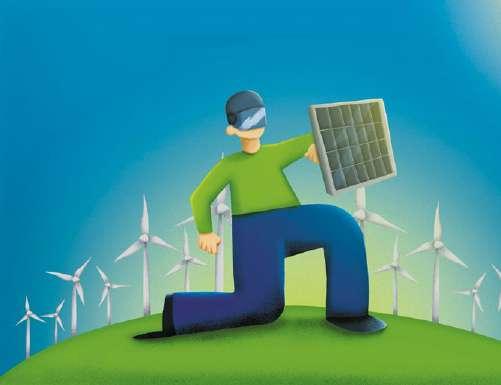
REPORT: MAGUIRE
This week’s upbeat renewable energy supply outlook by the International Energy Agency (IEA) contained an important but overlooked lament about the slow roll-out of so-called dispatchable renewable energy sources.
The main takeaways from the IEA outlook were that renewable energy development has been supercharged by the fallout from the Russia-Ukraine war, and that green energy sources will overtake coal to become the main generators of global electricity before the end of the decade. Other highlights included a more than doubling in solar and a 65% climb in wind generation within the next five years. Pretty cheery stuff for climate watchers who have been alarmed by the accelerating pace of climate change and the continuing climb in fossil fuel emissions. Somewhat buried in that buoyant prognosis for the world’s energy systems, though, were important comments about the comparatively slow deployment pace of renewable energy sources that can be dispatched on command into electrical grids to compensate for the intermittent nature of solar and wind power.
The most commonly used sources of dispatchable renewable energy are reservoir-based hydropower facilities, which can be rapidly ramped up or down by grid operators depending on system power needs. Other dispatchable renewable energy sources include geothermal, ocean, biomass and concentrated solar power installations, which can all have their electricity generation levels adjusted by utilities over the course of any given day. In contrast, a typical solar or wind farm can only generate electricity when the sun shines or the wind blows, and so are known as non-dispatchable or intermittent energy sources. In an optimized renewables-based electricity system, dispatchable power sources may only be required in minimal amounts during periods of abundant solar and wind power generation. But when cloudy skies or windless days kick in, these alternate renewable sources can be throttled up to offset the electricity shortfalls from elsewhere, and ensure that the overall system maintains the necessary power load. That’s the plan on paper, anyway. In reality, the IEA’s report this week highlighted that while developers of solar and wind installations are expanding at a record pace, growth in dispatchable supplies is flagging.
SLOW GOING
The IEA pointed out a slew of factors that have been stifling dispatchable renewable growth, including higher investment costs than for traditional wind and solar farms, and a lack of policy support. And the development cost differences between a conventional hydropower plant with a storage reservoir and a comparably-sized solar farm are significant. A 2019 study commissioned by the U.S. Energy Information Administration (EIA) found that a 100-megawatt (MW) hydroelectric power plant with storage reservoir would cost roughly $5,300 per kilowatt, while a 150-MW solar photovoltaic farm would cost around $1,300 per kilowatt. In addition, development times can be far longer for hydro sites than for solar and wind farms, and the overall environmental footprint can be significantly larger on certain projects. Geothermal plants and biomass power projects – which burn organic matter such as wood chips and household waste – can also cost
more than twice as much as solar or onshore wind projects, according to the report, and can also be subject to opposition on environmental grounds.
SEEING THE LIGHT?
Significantly, this week’s IEA report also claimed that “inadequate recognition of the flexibility value” of dispatchable renewables was another key factor hampering their development. That statement implies that overall conditions could become more favorable for dispatchable renewable energy sources if their worth was better understood. But the problem there is that different stakeholders can have conflicting viewpoints on renewable energy sites. Climate-conscious energy consumers often embrace renewable energy supplies but oppose development plans that can impact the environment, ruling out the clearing of mountains and valleys for hydrodams.
Project developers and big power users often prefer projects that are quick and cheap to complete, which currently favors solar and wind over other renewable options. Governments – often the most critical stakeholder when it comes to energy infrastructure – tend to focus more on short-term energy supply needs rather than longer term energy system stability. Ultimately, it may be the utilities that have the biggest direct impact on the prospects for dispatchable energy projects.
As the institutions most responsible for ensuring electricity supplies, utilities are best placed to see the merits of a system with a balance of cheap, intermittent renewables along with a complement of dispatchable assets. With the IEA and others highlighting the vital role that dispatchable energy can play, more widespread support for the development of these strategic energy sources may now emerge, so that the greener grid of the future is also robust enough to withstand the odd but inevitable cloudy and windless day.
70 EQ DECEMBER 2022 www.EQMagPro.com RENEWABLE
ENERGY
HELP FROM HYDRO ETC
Source: Reuters





www.EQMagPro.com 71 EQ DECEMBER 2022 www.renewx.in SOLAR ENERGY | DECENTRALISED RENEWABLE ENERGY | GREEN HYDROGEN | E-MOBILITY & ENERGY STORAGE | BIO ENERGY HIGHLIGHTS CONFERENCE TRACKS WITH INDUSTRY EXPERTS PRODUCT SHOWCASE BY MARKET TRUSTED BRANDS CEO ROUNDTABLE WITH INDUSTRY INFLUENCERS COUNTRY PAVILIONS & AWARDS PROFILED BUYER’S FROM C&I SEGMENT GREEN HYDROGEN EV & INFRASTRUCTURE ZONE BIO ENERGY UNLOCKING THE ERA TO NET ZERO EMISSIONS… AMITAVA SARKAR M: +91 93792 29397 E: amitava.sarkar@informa.com JULIAN THOMAS M: +91 99404 59444 E: julian.thomas@informa.com IYER NARAYANAN M: +91 99673 53437 E: iyer.narayanan@informa.com FOR BOOKING, CONTACT SUPPORTING ASSOCIATIONS & PARTNERS NODAL AGENCY PARTNER STATE GOVT. OF TELANGANA
INDIA’S ELECTRICITY SHORTAGE ERASED BY RENEWABLES GROWTH
India’s electricity transmission system passed the difficult post-monsoon period this year with far less stress than in 2021, following a major effort to improve coal stocks and a big expansion of renewable generation capacity.
T Ahere was no repeat of the widespread blackouts which plagued many parts of the country in late September and early October last year when coal-fired power plants ran short of fuel and were unable to keep up with demand. Grid frequency fell below the minimum target of 49.9 cycles per second (Hertz) just 5% of the time in October 2022 compared with 11% of the time a year earlier, according to Grid India. The improvement in frequency control is a sign of a healthier and more stable network able to meet peak loads more comfortably (“Monthly operational performance report”, Grid India, Nov. 23). The country’s coal-fired power generators started October with more than 9 days of fuel on hand compared with just 4 days at the same point last year, enough to ensure more were able to start up when needed. Temperatures in northern India were also slightly cooler than last year, reducing air-conditioning and refrigeration loads and offsetting the impact of economic growth. The average daily temperature in the New Delhi neighbourhood of Palam during October was 0.9 degrees Celsius lower than last year and 1.9 C lower than the long-term seasonal average.
CHARTBOOK: INDIA POWER GENERATION
Total power consumption was broadly stable at 115 billion kilowatt-hours (kWh) in October from a year earlier. But there was a big increase in renewable generation (+3.1 billion kWh) led by solar (+2.1 billion kWh) with smaller contributions from hydro (+0.7 billion kWh) and wind (+0.3 billion kWh). The result was less pressure on coal, gas and diesel generators, leaving more reserves to meet daily peaks and temperature-related variations in demand. Hydro, wind and solar supplied 25.4% of all electricity consumption in October, up from 22.8% twelve months earlier Total installed solar and wind generation capacity increased to 119 Gigawatts (GW) from 103 GW over the period. As in China, the massive deployment of renewables is beginning to slow the growth in demand for coal-fired generation. So far, the impact is marginal in India, and coal-fired generation is likely to rise again as total loads continue to grow, especially if temperatures are closer to seasonal norms. But renewables are starting to bend the curve of coal consumption for power generation and reduce the future trajectory.
GOOGLE, MICROSOFT TO USE RENEWABLE ENERGY SOURCES IN DATA CENTRES
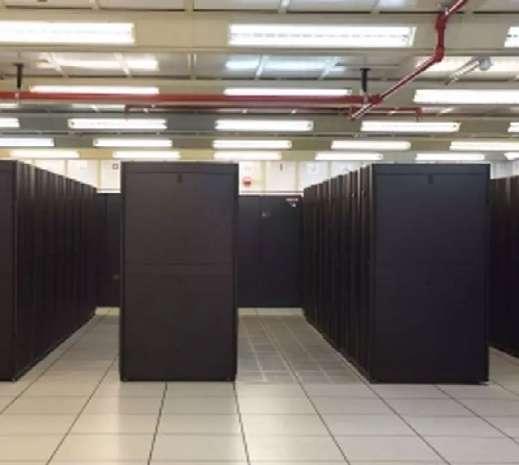
Google and Microsoft have both announced new agreements to lower their IT operations’ carbon
centres.
ccording to ‘The Register’, Google has signed a power purchase agreement (PPA) with Engie, a French utility company, for 100 MW of energy generated by the Moray West offshore wind farm in Scotland to power its UK operations. Meanwhile, Microsoft announced PPAs supplying more than 900 MW of renewable energy in Ireland for its data centres. While Microsoft did not disclose its renewable energy suppliers, other sources identified Statkraft and Ireland’s Energia Group as two that are involved, with a mix of wind and solar projects, according to the report. Google claimed that the new agreements will bring the company closer to its goal of running its UK offices and cloud regions entirely on carbon-free energy sources by 2030. The company stated that with the most recent PPA signed with Engie, it expects to be at or near carbonfree by 2025. Matt Brittin, President of Google EMEA, said that people in the UK and Europe are increasingly concerned about climate change. The move follows earlier agreements by both companies to buy renewable energy in the US, said the report. SoftBank subsidiary SB Energy signed a deal with Google for 900MW of solar power to power a Texas data centre, while Microsoft recently entered into a 20-year agreement with AES Corporation to supply its data centres in California with renewable energy from 110 MW solar and 55 MW four-hour storage
projects. In addition to expanding its data centres to meet customer demands, Microsoft has also increased its commitment to reducing carbon consumption and contributing to climate change solutions, the report added.
72 EQ DECEMBER 2022 www.EQMagPro.com
footprint by using renewable energy sources in their data
Source: Reuters
RENEWABLE ENERGY
Source: PTI
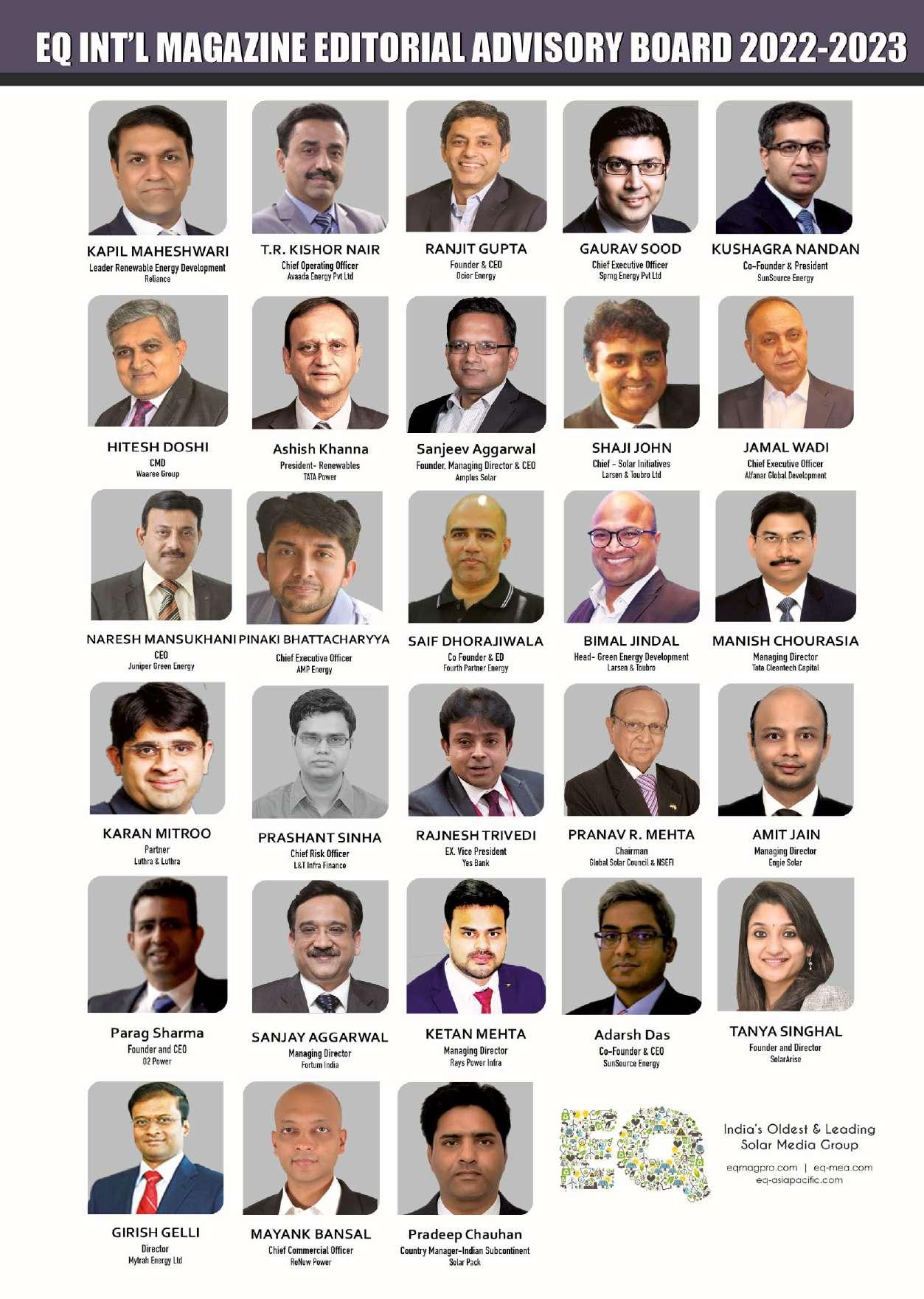

74 EQ DECEMBER 2022 ADVERTISERS INDEX SUBSCRIBE Subscribe “EQ International” at www.EQMagPro.com or fill your complete address and Email to :admin@gmail.com or Call +91-7692973898 Yes! I would like to Subscribe to EQ International Magazine For 1 Issue: o Indian citizens Rs. 200 o International $ 25 / € 20 For 1 Year (12 issues): o Indian citizens Rs. 2400 o International $ 300 / € 240 Please Mail the coupon to: Name: Job Title: Department: Company: Description of the Company: Adress: City/State/Zip Code: Country: Phone: Fax: E-Mail. Web site: PAYMENT 1.- My Cheque/DD in favour of “FirstSource Energy India Private Limited” for Rs…………………………………………………………………… Drawn on………………………………………is enclosed herewith. Date/Signature: 2.- I will pay by Credit Card Type: .......................................................................... Name on Card: Number: Security Code: Expiration Date: Mail this coup on to: First Source Energy India Pvt. Ltd. Subscription Department. 95 C, Sampat Farms, Bicholi Mardana Distt-Indore 452016 Tel. + 91 96441 22268 " GAUTAM SOLAR........................................................FRONT COVER INSOLATION....................................................................................13 JA SOLAR....................................................................BACK COVER RENEW-X.........................................................................................71 RISEN....................................................INSIDE FRONT COVER LHS SAATVIK.........................................................................................07 SOFAR SOLAR.....................................INSIDE FRONT COVER RHS TBEA................................................................INSIDE BACK COVER



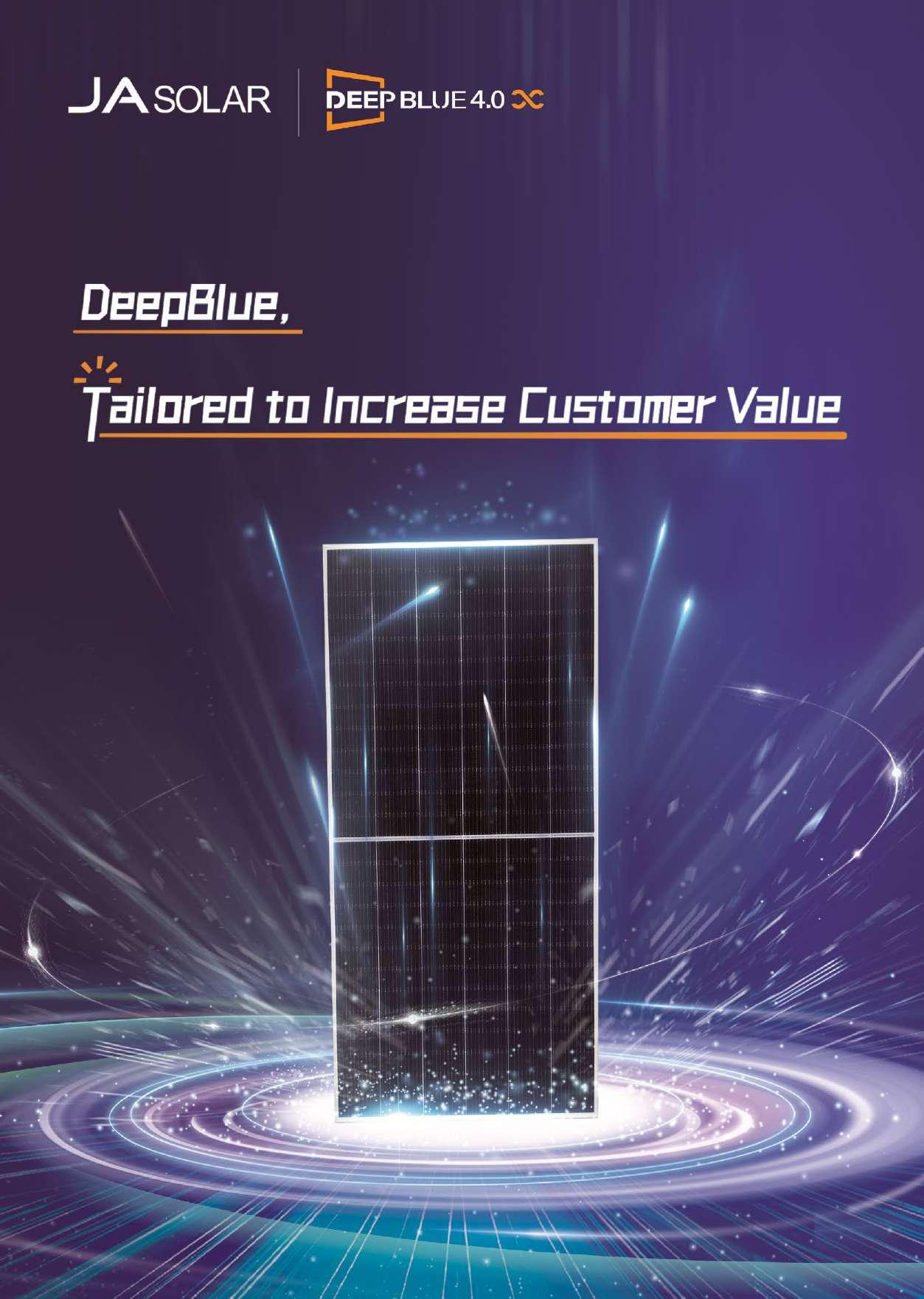


Tel : +86 (10) 63611888 E-Mail: sales@jasolar com marketing@jasolar com www.jasolar.com R.N.I. NO. MPBIL/2013/50966 | POSTAL REGD. NO. MP/IDC/1435/2022-2024






































































































































 Source: PTI
Source: PTI


















 Source: PTI
Source: PTI
























